AOE Roster
- Richard Allen, Class of 2016
- Tom Anderson, Class of 2011
- Corby Anderson, Class of 2016
- James Arnold, Class of 2017
- Timothy Arnold, Class of 2018
- Jeffrey Ashby, Class of 2012
- Leland Bailey, Class of 2022
- Mark Bathrick, Class of 2017
- Steven Beyerlein, Class of 2024
- Donald Blackketter, Class of 2019
- Forrest Bird, Class of 2012, Deceased
- Douglas Blum, Class of 2012
- Gordon Bopp, Class of 2021, Deceased
- William Bowes, Class of 2012
- Clayton Boyce, Class of 2011
- John Brown, Class of 2020
- Candis Claiborn, Class of 2017
- Patricia Colberg, Class of 2023
- Jim Coleman, Class of 2011
- Paul Cooley, Class of 2019
- Harry Cougher, Class of 2013
- Lynn Davis, Class of 2016
- Stan Desjardins, Class of 2011
- Wayne DeWitt, Class of 2013, Deceased
- Mark Durcan, Class of 2017
- Donald Eddy, Class of 2014, Deceased
- Louis Edwards, Class of 2014, Deceased
- William (Bill) Eisinger, Class of 2016
- Aicha Elshabini, Class of 2018
- Byron Flynn, Class of 2019
- Robert Furgason, Class of 2011
- Robert Griffith, Class of 2014, Deceased
- Lisa Grow, Class of 2019
- Dean Haagenson, Class of 2021
- Jesse Haldeman, Class of 2012, Deceased
- Dennis Hanson, Class of 2021
- Robert Harrell, Class of 2012
- Marjorie Hatter, Class of 2016, Deceased
- Mark Hedge, Class of 2023
- Thomas Henderson, Class of 2021
- Karen Higgins, Class of 2012
- Brant Hinze, Class of 2021
- Richard Jacobsen, Class of 2012, Deceased
- Mike Jasberg, Class of 2022
- Joe Keegan, Class of 2022
- Brent Keeth, Class of 2023
- Dennis Keiser, Class of 2018
- David Kohli, Class of 2016, Deceased
- Donald Kopczynski, Class of 2015
- Jack Lemley, Class of 2011, Deceased
- Bryant Lemon, Class of 2017, Deceased
- Jim Linford, Class of 2016
- Eugene Luntey, Class of 2012, Deceased
- Paul May, Class of 2013
- Kenneth Mays, Class of 2024
- John Marks, Class of 2011, Deceased
- James Milligan, Class of 2014, Deceased
- Zimri Mills, Class of 2011, Deceased
- Steven Miranda, Class of 2018
- Charles Mitchell, Class of 2015
- Tom Mueller, Class of 2017
- Albert Myers, Class of 2011, Deceased
- James Okeson, Class of 2014
- Ron Olson, Class of 2011
- Michael Olson, Class of 2019
- Satish Pamidi, Class of 2013
- Lyle Parks, Class of 2013
- Michael Patterson, Class of 2024
- Charles Peterson, Class of 2013
- Nick Purdy, Class of 2020
- Steve Renfro, Class of 2024
- James Ritter, Class of 2014
- Burch Roark, Class of 2015
- Joseph Rumble, Class of 2012, Deceased
- James Russell, Class of 2012, Deceased
- Arnfinn Rusten, Class of 2016
- Yogi Sarin, Class of 2017
- Edmund O. Schweitzer III, Class of 2023
- Charles Sievert, Class of 2012, Deceased
- George Simmons, Class of 2015
- Ted Sorenson, Class of 2020
- Allen Stubberud, Class of 2015
- Kirk Sullivan, Class of 2018, Deceased
- Alfred Susu, Class of 2022
- Jack Swearengen, Class of 2012
- Patrick Taylor, Class of 2017
- Frank Thomas, Class of 2014, Deceased
- Bill Thomson, Class of 2021
- Robert Twiggs, Class of 2023
- Virginia Valentine, Class of 2012
- Jon Van Gerpen, Class of 2022
- Bess Vance, Class of 2011
- Keith VanScotter, Class of 2015
- Sara VanTassel, Class of 2024
- Edgar Vidal, Class of 2022
- Margrit von Braun, Class of 2013
- Jan Welch, Class of 2024
- Bob White, Class of 2018
- Kim Zentz, Class of 2020
2024
Steven Beyerlein
View ProfileKenneth Mays
View ProfileMichael Patterson
View ProfileSteve Renfro
View ProfileSara VanTassel
View ProfileJan Welch
View ProfileSteven Beyerlein

Steven Beyerlein joined University of Idaho in 1987 and worked as a Mechanical Engineering faculty member for 35 years, facilitating the creation and growth of University of Idaho's multi-disciplinary capstone design program beginning in 1996 and serving as a department chair from 2015-2020. He engaged student peers and faculty peers in delivering interactive learning experiences in freshman, sophomore, and senior design, junior and senior experimental methods, beginning and advanced solid modeling, thermodynamics, fluid mechanics, combustion engines, lean manufacturing, and energy/environmental policy.
From 1987-1999, he worked under the mentorship of Richard Jacobsen in the Center for Applied Thermodynamic Studies developing universal equations of state for the refrigeration and natural gas industries. From 1999-2020, he was involved in a variety of combustion technology and student vehicle development projects as part of the National Institute for Advanced Transportation Technology. He was an advisor to the electric racecar team that won the Arizona Electrics Competition in 1999, the Hybrid Formula SAE team that won the international competition in 2014, and the Clean Snowmobile Team that has had multiple podium finishes. Between 2010-2020, he was a co-director with Dev Shrestha of a Department of Energy Industrial Assessment Center where we trained and took teams of students each month to a different regional industry to conduct a detailed energy audit. This resulted in implemented recommendations for industrial energy savings that annually exceed $3 million each year.
Beyond applied thermodynamics, Beyerlein is widely cited for scholarship on design pedagogy, assessment for learning, and faculty development.
Kenneth Mays

Ken Mays is a Senior Radio Frequency Integrated Circuit Design Engineer for The Boeing Company’s Solid State Electronics Development Organization in Tukwila Washington. His Technical Lead Engineer duties include monolithic microwave integrated circuit (MMIC) design and testing for phased-array communication systems, as well as other design and mentoring activities. Prior to his position at Boeing, Ken was a consultant for commercial and defense contractors and held various positions at TriQuint Semiconductor and Sonnet Software. He has over 25 years of experience being responsible for customer support, training, design, testing, modeling, and processing support. He has worked extensively on numerous higher frequency semiconductor and passive technologies where he actively worked on process development and evaluation for internal and external customers. Ken holds four issued patents and has presented peer reviewed papers at an international conference. He is a Senior Member of IEEE and has held positions with the Oregon Section’s Solid State Circuits, Electron Devices and Microwave Theory and Techniques Societies (MTTS). He is also on the Technical Paper Review Committee for the IEEE MTTS International Microwave Symposium and other IEEE conferences. Ken holds a Bachelor of Science degree in Electrical Engineering from the University of Idaho, Moscow and an MSEE degree from Portland State University, Portland Oregon.
Michael Patterson

Mike started work in the family construction business, and shortly after high school enlisted in the U.S. Navy. He served eight years as a reactor operator and electronics technician, certifying as engineering watch supervisor and leading the reactor controls division aboard a ballistic missile submarine. He returned home for college, and after graduating from the University of Idaho, started his career at the Idaho National Laboratory (INL) as a process engineer. He spent the next 33 years in increasingly responsible technical leadership positions - building, analyzing, and managing complex experiments, demonstrations, and technical initiatives with high risk, visibility and impact.
Mike’s early work at INL focused on management and recycling of spent nuclear fuel, nuclear waste treatment, and remediation of deactivated nuclear processes. He led a team of Shift Technical Advisors, developed the closure plan for used fuel reprocessing facilities, and characterized the chemical and radionuclide constituents in the High Level Waste (HLW) tank farm. He led the HLW and local Spent Nuclear Fuel Programs, developing disposition paths for toxic radioactive waste and irradiated fuel, advancing INL’s remediation commitments to the State of Idaho.
Mike’s later career focused on demonstrations of nuclear technology and advanced reactors. He managed nuclear programs and infrastructure projects, served as a technical director for several advanced reactor initiatives, and recently led MARVEL – a project to demonstrate a liquid metal, thermal microreactor - through final design. Mike’s career has been a series of challenges and learning opportunities, serving as needed in engineering and technical leadership positions.
Steve Renfro

Steve was born in Moscow, Idaho, while his parents attended University of Idaho. Steve is a fifth-generation resident of this beautiful state. His early life included a unique experience living in Panama while his father worked for the Corps of Engineering on the Panama Canal project. After graduating high school in Saint Maries, Idaho, Steve began his engineering studies at University of Idaho in 1975.
Part way through his education, he took a detour to serve in the Air Force from 1977 to 1981 and was stationed at Fairchild Air Force Base, where he worked on B52 electronic warfare simulators. Upon completing his service, Steve returned to University of Idaho and earned his bachelor’s in electrical engineering in 1984. After graduating, he went to work at Micron Technology in Boise. His professional journey at Micron Technology lasted 34 years, where he progressed through various leadership roles in Product Engineering, Test Engineering and ultimately serving as Senior Director of Micron’s Global Assembly Operations. His career success is a testament to the education he received at University of Idaho.
Sara VanTassel

Sara started her career with Janicki Industries after graduating from University of Idaho in 2004. Initially, Sara established Janicki Industries’ newly instituted research and development lab before moving to the aerospace design and analysis group to lead the team on the design work for the Boeing 787 single piece fuselage program. From 2006 to 2014 Sara worked as program manager on a wide range of projects including various alternative energy projects (wind, solar, biomass gasification), Scaled Composites’ Space Ship One and Stratolaunch, Gulfstream G650, BAE Joint Light Tactical Vehicle, and projects with the Bill and Melinda Gates Foundation, which led to the formation of Sedron Technologies in 2014.
Sara then transitioned full time to her initial role as President of Sedron Technologies to help build that company from the ground up. Since that time Sara has worn many hats, including leading teams in the technology development of various technologies including the Varcor, Firelight Toilet, and Omni Processor (she holds several U.S. patents); development of human capital within Sedron; providing financial leadership; and leading a wide range of business development efforts for the company. With her engineering expertise and business acumen, she is positioning the company for rapid growth to fulfill global demand for the Varcor technology and other sustainable waste treatment solutions under development at Sedron.
Sara married her high school sweetheart, and they share a home in Alaska with their three children. In her downtime she enjoys outdoor activities including hiking, mountain biking, camping, and gardening.
Jan Welch

Jan Welch became Principal and President of Stapley Engineering in 2000, after 17 years with the company. She oversaw marketing aspects as well as the day-to-day operation of Stapley Engineering.
Over the last 40 years, she has been responsible for the structural design of buildings including schools, commercial buildings for offices and retail services, heavy industrial buildings for military use and institutional facilities such as jails and prisons. Construction materials used in design work include cast-in-place and precast concrete, masonry, steel and timber.
Jan worked closely with local food producers including Simplot, Amalgamated Sugar and Darigold on both new facilities and upgrades to existing buildings. She was also responsible for the design of multiple municipal jail facilities in Idaho and throughout the Northwest. Most recently she worked on several clean energy projects including geothermal and solar power plants and carbon reclaim projects.
Jan served on the Idaho Building Code board for 16 years and the Boise City Building Code Review and Appeals board for more than 20. She also served as a Boise City Building Department structural review consultant for 15 years and was an active member of the Structural Engineer Association of Idaho for almost 25 years.
Jan has been an active member of the Boise Sunrise Rotary Club for 28 years. She actively supports local youth organizations including Everyday Leadership and STEM-centered activities including Future Cities and Mathcounts.
2023
Patricia J.S. Colberg
View ProfileMark Hedge
View ProfileBrent Keeth
View ProfileEdmund O. Schweitzer III
View ProfileRobert Twiggs
View ProfilePatricia J.S. Colberg
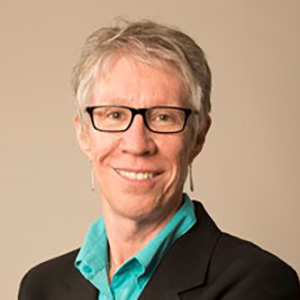
Those who knew Patricia in high school assumed she would be a lawyer or a physician, but Patricia wanted to become a university professor. During her M.S. program at the University of Idaho, she discovered her love of teaching – even completing the requirements for an Idaho Secondary Teaching Certificate. Patricia was the first woman to complete the Ph.D. in Civil Engineering at Stanford University in 1983. After spending five years working in Switzerland and The Netherlands, she joined the University of Wyoming faculty, where she spent 28 years. She had a well-funded research program in groundwater remediation, received several teaching and advising awards, and was the first woman in the College of Engineering to achieve the rank of Full Professor.
In 2015, she moved to Moscow to become Chair of Civil and Environmental Engineering. She led development of the COE’s Diversity and Equity Plan, which was awarded both “Bronze” and “Exemplary” status by the American Society of Engineering Education. She initiated the renovation of nine spaces in CEE, which led to renewed commitments by industry partners and alumni to improve the department’s facilities, an effort that continues today with a new $7M campaign to upgrade laboratories.
In 2021, she was selected as Associate Dean and served in this role until her retirement in July 2023. In 2022, Patricia was selected as Athena’s “Woman of the Year for Administration” in recognition of her efforts to enhance women’s professional lives. Patricia holds the title of Professor Emeritus at both the University of Wyoming and at U of I.
- Ph.D. Civil Engineering, Stanford University, 1983
- M.S. Bacteriology, University of Idaho, 1977
- B.S. Science and Mathematics, North Dakota State University, 1975
Mark Hedge
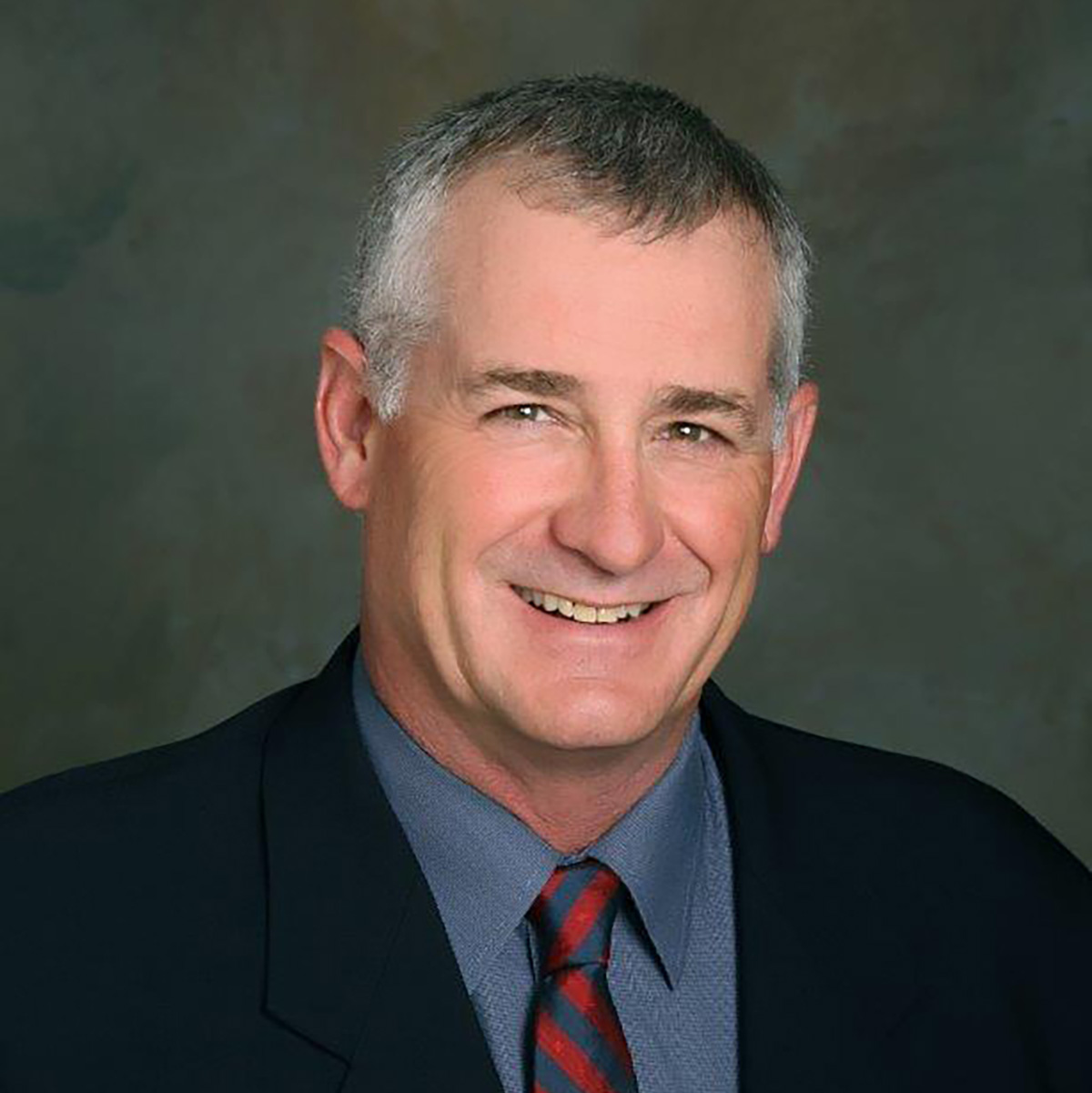
Mr. Hedge began learning about construction in 1976 at the age of 14, surveying for his father as a part of the rebuilding of Eastern Idaho after the collapse of the Teton Dam. He continued surveying through high school and college. He worked on a variety of projects, including roads for oil exploration, timber harvest sales, mining claims and property surveys. This experience naturally led him into the field of Civil Engineering after minimal inspiration in English and Accounting.
Civil Engineering did inspire him. The results of other Idaho grads taught him respect for hard work and ingenuity. He was given the tools. Now to put them to use. After graduating from the University of Idaho in 1985, Mr. Hedge accepted an entry-level position at a growing engineering firm in Las Vegas, Nevada. This design experience on residential and commercial projects allowed him to be qualified to assist opening and managing a new Las Vegas firm specializing in casinos, resorts, educational facilities and larger commercial projects. In this position, his self-taught management experience resulted in significant professional growth and the confidence to be his own boss. With fellow U of I grad Jess Haldeman (BSCE 1984, MSCE 1986, AOE Inductee 2012), Hedge co-founded Lochsa Engineering in 1995.
- B.S. Civil Engineering, University of Idaho, 1985
Brent Keeth
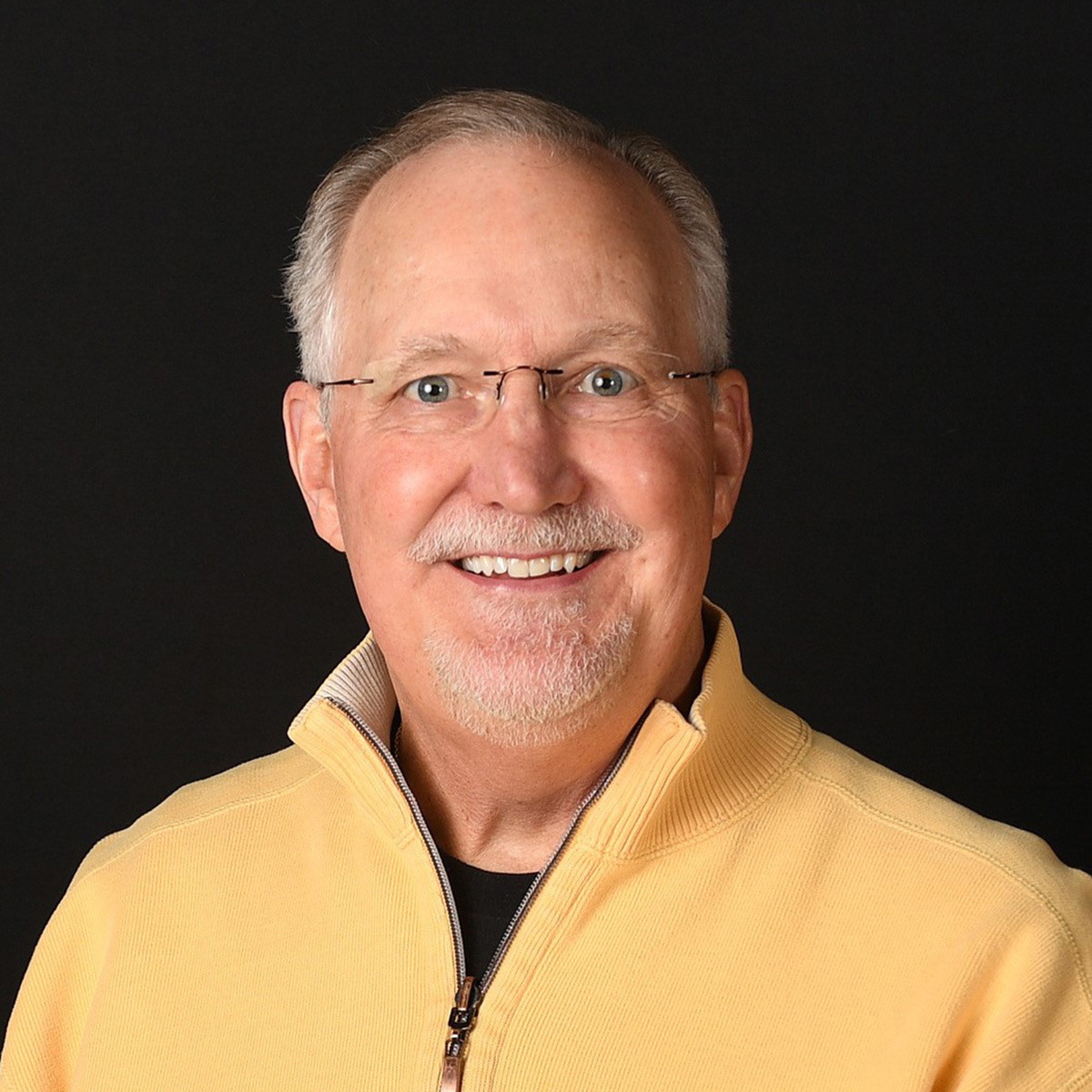
As a Senior Fellow in the Pathfinding Team within TPG, Brent Keeth directs path finding for low energy, high performance memory products and champions technology development programs including the Hybrid Memory Cube (HMC). He identifies technical problem areas, design opportunities, and manufacturing issues and he investigates/develops candidate solutions to those issues with an emphasis on power, robustness, fault tolerance, and cost. He provides technical support to a variety of design efforts at Micron and helps Micron overcome barriers to efficient and successful product design by driving capability, infrastructure, methodology, and CAE improvements as needed. Brent also facilitates the development of Micron’s intellectual property assets in the ultrahigh performance memory space, supports strategic technology exploration of new product opportunities, and advances Micron’s stake & interests with a variety of external research organizations. Prior to joining Micron in 1992, Mr. Keeth held design engineering positions at Texas Instruments, General Instruments, and Grass Valley Group. His 39 years of industry experience spans radar systems, avionics components, communication systems, broadcast television equipment, and solid-state memory.
Mr. Keeth earned BSEE (1982) and MSEE (1996) degrees from the University of Idaho and was awarded an honorary doctorate in engineering science by the University of Idaho in 2015. He is an inventor on 315 U.S. patents and 230 foreign patents to date and coauthored the textbooks DRAM Circuit Design—Fundamental and High-Speed Topics and DRAM Circuit Design—A Tutorial, both published through Wiley-IEEE Press in 2008 and 2001 respectively.
- Honorary Doctorate in Engineering Science, University of Idaho, 2015
- M.S. Electrical Engineering, University of Idaho, 1996
- B.S. Electrical Engineering, University of Idaho, 1982
Edmund O. Schweitzer III
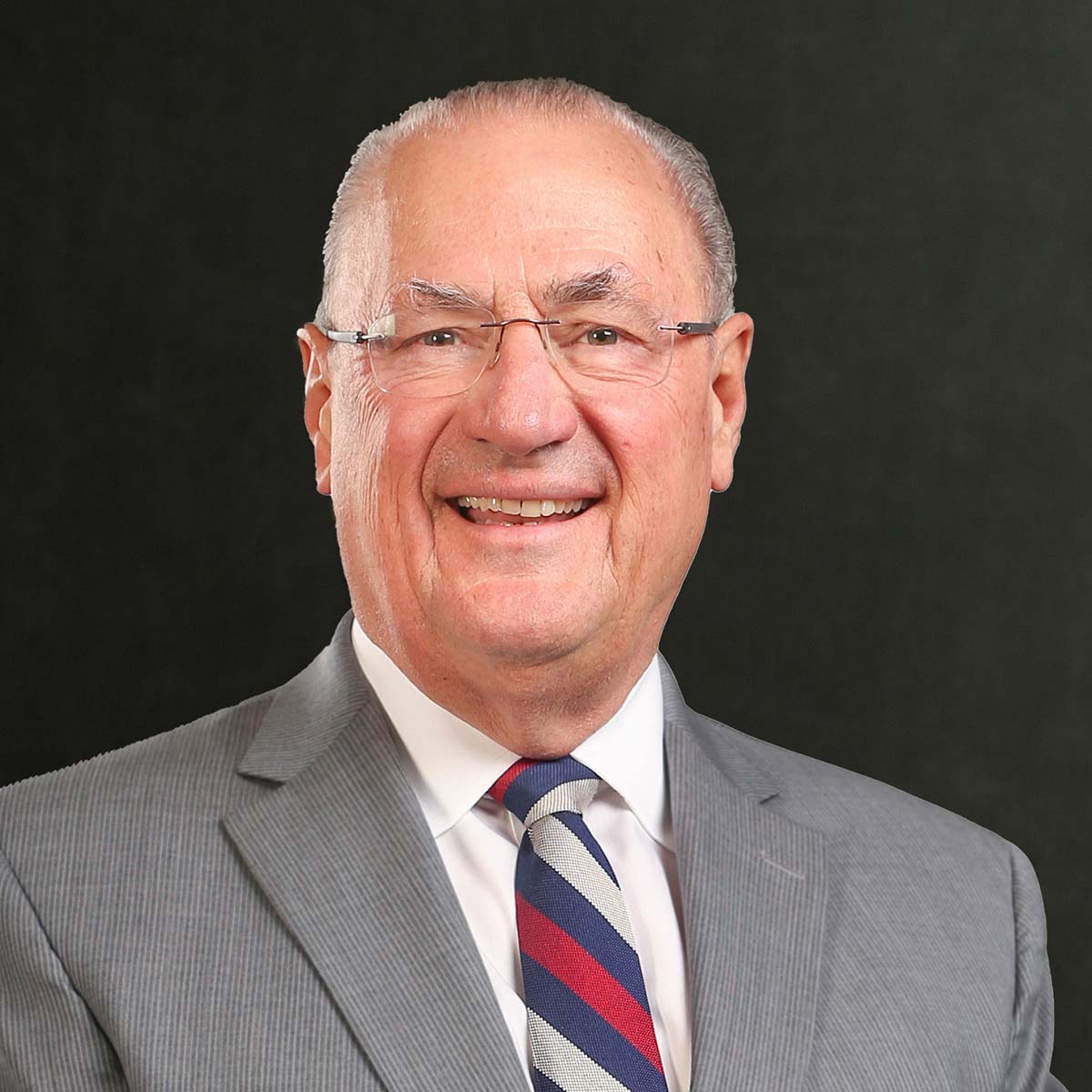
Dr. Schweitzer is a pioneer in digital electric power system protection and holds the grade of Fellow in the IEEE, a title bestowed on less than one percent of IEEE members.
In 2002, he was elected as a member of the National Academy of Engineering. He received the 2012 Medal in Power Engineering, the highest award given by IEEE, for his leadership in revolutionizing the performance of electrical power systems with computer-based protection and control equipment. In 2019, Dr. Schweitzer was inducted into the National Inventors Hall of Fame for his invention of the first digital protective relay.
Dr. Schweitzer is the recipient of the Regents’ Distinguished Alumnus Award and Graduate Alumni Achievement Award from Washington State University and the Purdue University Outstanding Electrical and Computer Engineer Award. He has also been awarded honorary doctorates from Purdue University, the Universidad Autónoma de Nuevo León in Monterrey, Mexico, and the Universidad Autónoma de San Luis Potosí in San Luis Potosí, Mexico, for his contributions to the development of electric power systems worldwide. He has written dozens of technical papers in the areas of digital relay design and reliability and holds more than 200 patents worldwide pertaining to electric power system protection, metering, monitoring, and control.
He received his bachelor’s and master’s degrees in electrical engineering from Purdue University, and his doctorate from Washington State University. He served on the electrical engineering faculties of Ohio University and Washington State University, and in 1982, he founded Schweitzer Engineering Laboratories, Inc. (SEL) to develop and manufacture digital protective relays and related products and services.
- Ph.D. Electrical Engineering, Washington State University, 1977
- M.S. Electrical Engineering, Purdue University, 1971
- B.S. Electrical Engineering, Purdue University, 1968
Robert Twiggs
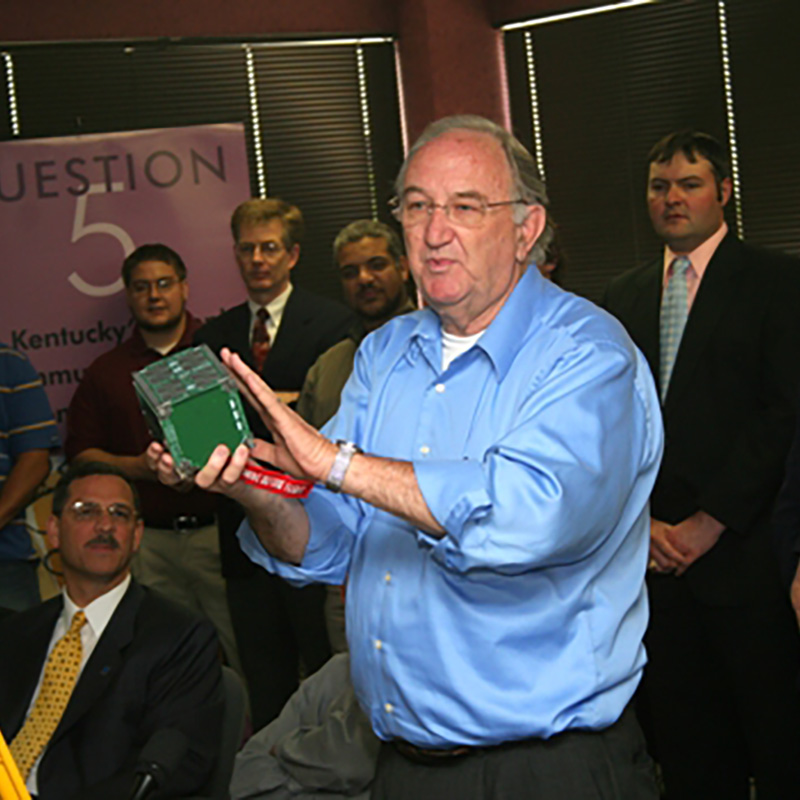
Prof. Robert Twiggs is best known in the space and satellite industry and academia while at Stanford University as the “Father of the CubeSat” for his co-development of the CubeSat reference design and P-Pod Deployer for miniaturized satellites alongside with California Polytechnic University at San Luis Obispo, CA, Professor Jordi Puig-Suari. His design has become the de facto industry standard for Pico satellites since its development in 1998, with over 1,600 successful launches to this day.
Prof. Twiggs’ career began in the Air Force as an electronic technician. After discharge from the Air Force, he completed his Bachelor of Science in Electrical engineering at University of Idaho in 1961 and a Master of Science in Electrical Engineering at Stanford University in 1964. Prof. Twiggs served as director of the Weber State University, Utah Center for Aerospace Technology from 1985 to 1994, during which time he began building his first academic satellites. After departing from Weber State University, he joined Stanford University’s Department of Aeronautics and Astronautics in 1994 as a consulting professor and there established the Space Systems Development Laboratory.
Throughout his career, Prof. Twiggs has promoted STEM education, aiming to ignite a passion for space in students around the world. He has published numerous papers and made over 35 presentations at technical conferences and was selected in 2010 by Space News as one of 10 space professionals “That Made a Difference in Space.”
- M.S. Electrical Engineering, Stanford University, 1964
- B.S. Electrical Engineering, University of Idaho, 1961
2022
Leland Bailey
View ProfileMichael Jasberg
View ProfileJoseph Keegan
View ProfileAlfred Akpoveta Susu
View ProfileJon Van Gerpen
View ProfileEdgar Vidal
View ProfileLeland Bailey

Upon graduation from the University of Idaho, Lee joined Thiokol Chemical Corporation as it was just being organized in Brigham City and Promontory Point, Utah. The purpose of the facility was to try to quickly develop an intercontinental ballistic missile powered by solid propellant rockets to carry a nuclear warhead to Russia. A quick‐response system was needed that could be launched in the event of a Russian attack. A system of this size had never been done before with solids.
Lee had major responsibility in developing the First Stage Minuteman, the largest solid propellant rocket engine ever developed at that time. He designed internal propellant configurations to provide the needed thrust‐time performance to boost the second and third stages and the warhead into the proper initial phases of the trajectory to enable the warhead to be placed on the target. The system was successfully developed, and the Minuteman Missiles were positioned in silos along the northern borders of Montana, North Dakota, etc.
Later, Lee had major responsibility for the development of much larger systems allowing USA to enter and excel in the space race. He was Thiokol's representative to NASA, making Flight Readiness Reviews at Kennedy Space Center and responding to flight inquiries and approvals for approximately 25 space flights.
After 37 years, Lee ended his career and retired as the chief engineer for the Thiokol Space Shuttle Program.
- Master of Engineering Administration (MEA), University of Utah, 1969
- B.S., Chemical Engineering, University of Idaho, 1958
Michael Jasberg
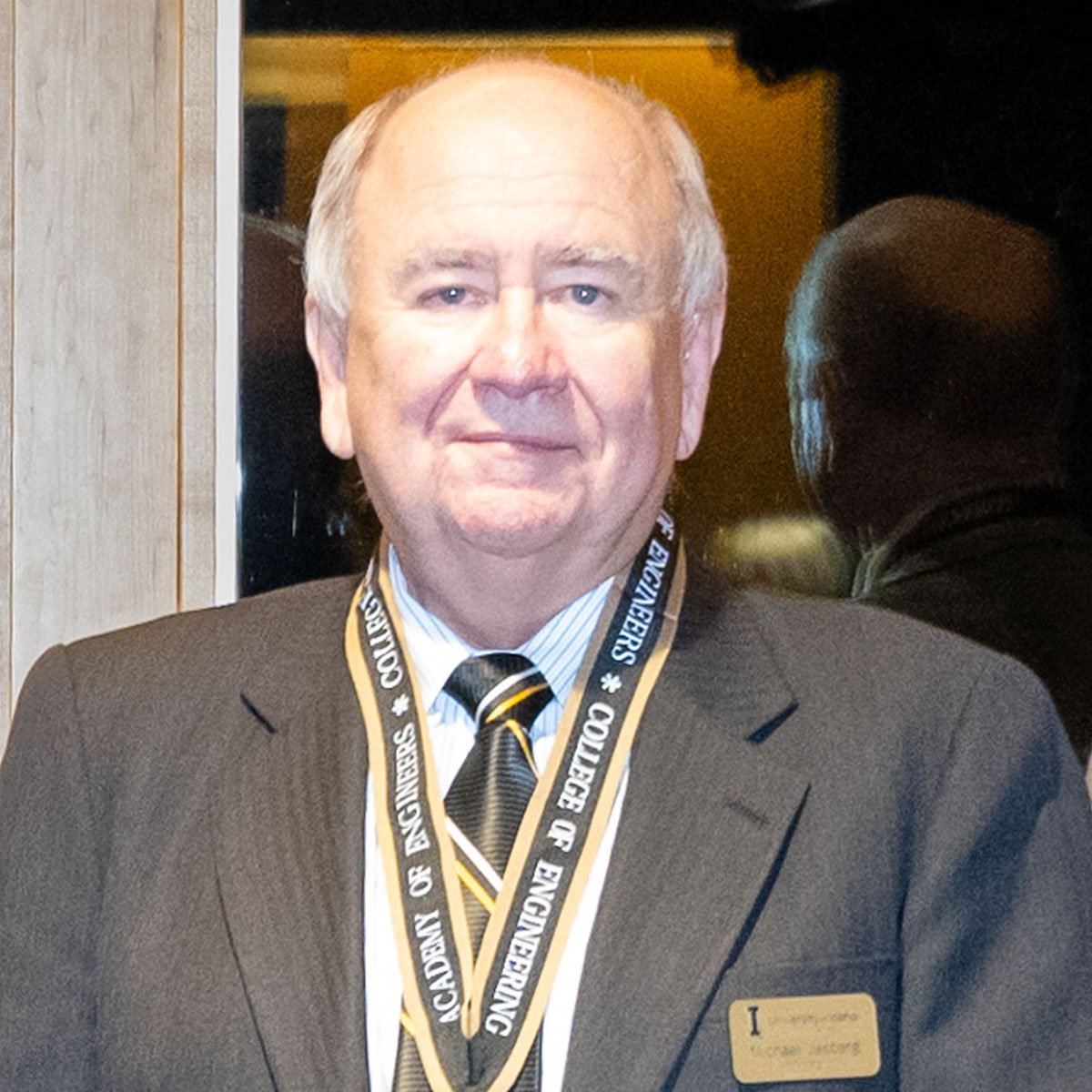
Mike Jasberg began his career as an electrical engineer at the Bunker Hill company in Kellogg, Idaho after graduating from the University of Idaho in 1975. During that time, he modernized several key parts of the operation, including using the first PLC controls and replacing medium voltage oil switches in the hundreds of miles of underground mine operations with vacuum contactors, a major industry change reducing fire hazards and increasing reliability. When Bunker Hill closed in 1981, Mike was chief electrical engineer, overseeing 125 employees in four plants for the company.
He then moved to join the Kaiser Cement Corporation to help with their modernization effort. Over the next two years he worked his way up to plant manager. His work was so successful, that in 1988, the Kaiser plant was purchased by Mitsubishi Cement Corporation (MCC). Mike became the vice president of operations. Today, the MCC plant is one of the leading industries in the Victor Valley.
Beyond the successful commissioning of the plant in 1982, which doubled its production capacity, several other major changes were made to increase the capacity and reduce the energy intensity of the production process. These included changes to the preheater tower to reduce pressure drop and upgrading of 5,000 hp fans to more efficient units.
Mike also was instrumental in the development of a new bulk import terminal in Long Beach, California. He was involved in the negotiations, design, project management and commissioning of the largest cement import facility in Southern California. Along with the terminal, Mike designed and completed two ground‐breaking environmental engineering projects for this facility. He developed a method to provide shore power to 40,000 ton class bulk ships while berthed, reducing NOx emissions by thousands of tons annually. The Port of Long Beach awarded the company an Air Quality Excellence Award for this work in 2009. Mike also co‐designed and completed a DOCCs exhaust capture system to capture ship generator exhaust and treat it for NOx reduction, also reducing emissions significantly.
MCC manufactures and sells all major types of Portland and specialty cement used in the California, Arizona, Nevada, and Utah. With revenues of over $160 million, the company employs over 150 workers. MCC is primarily owned by Mitsubishi Materials Corporation and Mitsubishi Corporation, two of the “group” companies with the Mitsubishi name. Each of the companies are independently traded on the Tokyo Exchange, but collectively are responsible for billions of dollars of commerce annually around the globe.
- B.S., Electrical Engineering, University of Idaho, 1975
Joseph Keegan
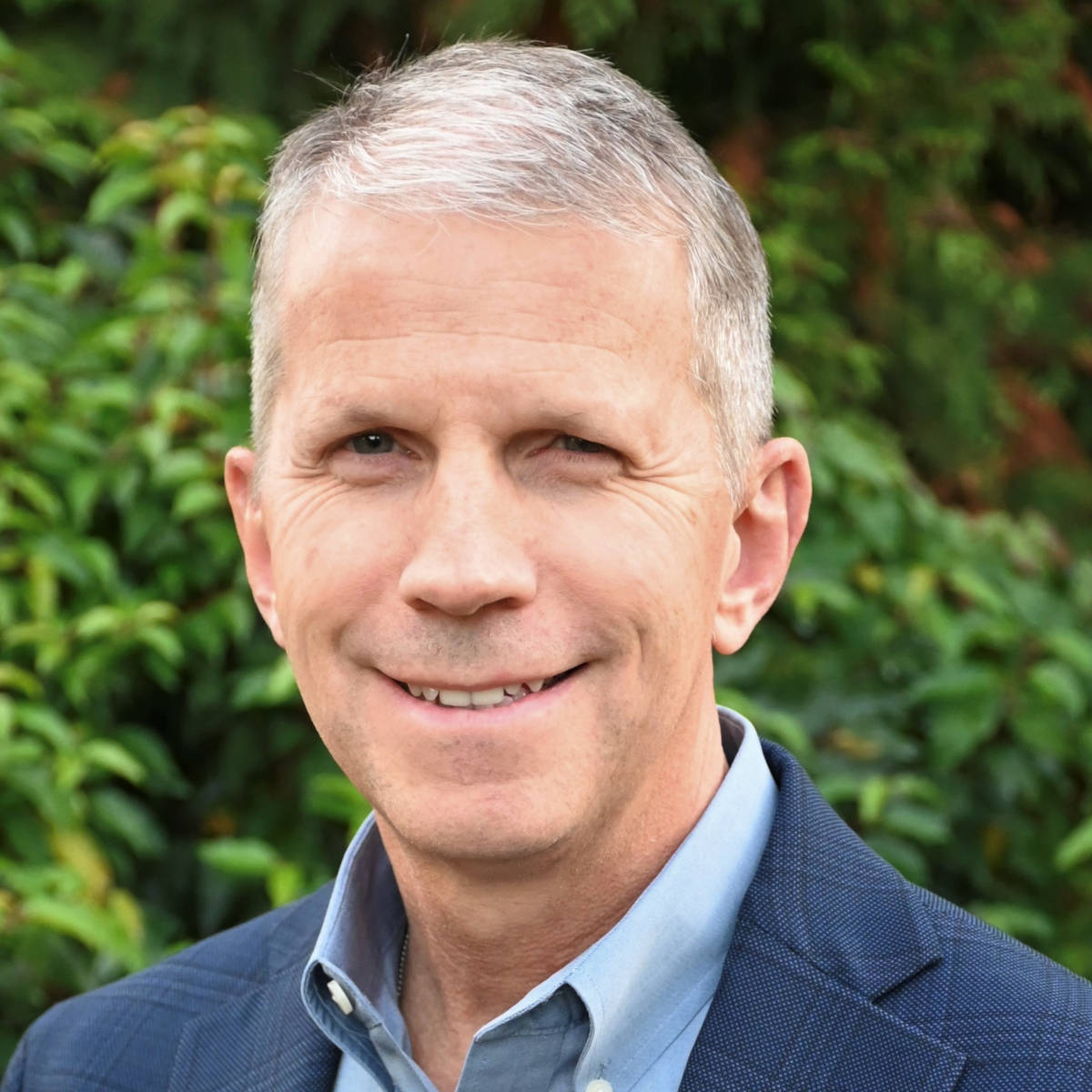
Influenced and inspired by his father, a career engineer in the electronics industry, Joe earned a B.S. degree in Electrical Engineering from the University of Idaho in 1989. He interned at The Boeing Company in the Commercial Airplane group. Following graduation, Joe joined the company full time and has enjoyed a continuous career at the airframe maker ever since. He’s been a significant part of nearly every major new Boeing commercial and derivative aircraft development program during his career.
Joe was a design engineer on the original 777 development team from early product development to entry into service. He led technical teams and entered engineering management on the 737 Next Generation program. When Boeing initiated development of the first all-composite aircraft, the 787, Joe led teams from the early stages through the complete development cycle and saw the airplane go into service and become a favorite among travelers.
Following the 787 development, he lead the Airplane Systems team in Product Development, becoming responsible for technology and airplane development from the very earliest conceptual stages.
In addition to conventional large transport airplane development, Joe led the development of entirely new concepts including all-electric, hybrid-electric, and autonomous airplanes. His teams continue developing and demonstrating technologies and airplane concepts to inform the long-term company strategy in these areas. In addition, Joe is the Enterprise Domain Leader for Systems Engineering and Autonomy where he influences technology development across the broad spectrum of aerospace products.
Joe proudly serves on the Electrical and Computer Engineering Advisory Board and supports the development of the exceptional engineering talent being forged at the University of Idaho.
- B.S., Electrical Engineering, University of Idaho
Alfred Akpoveta Susu
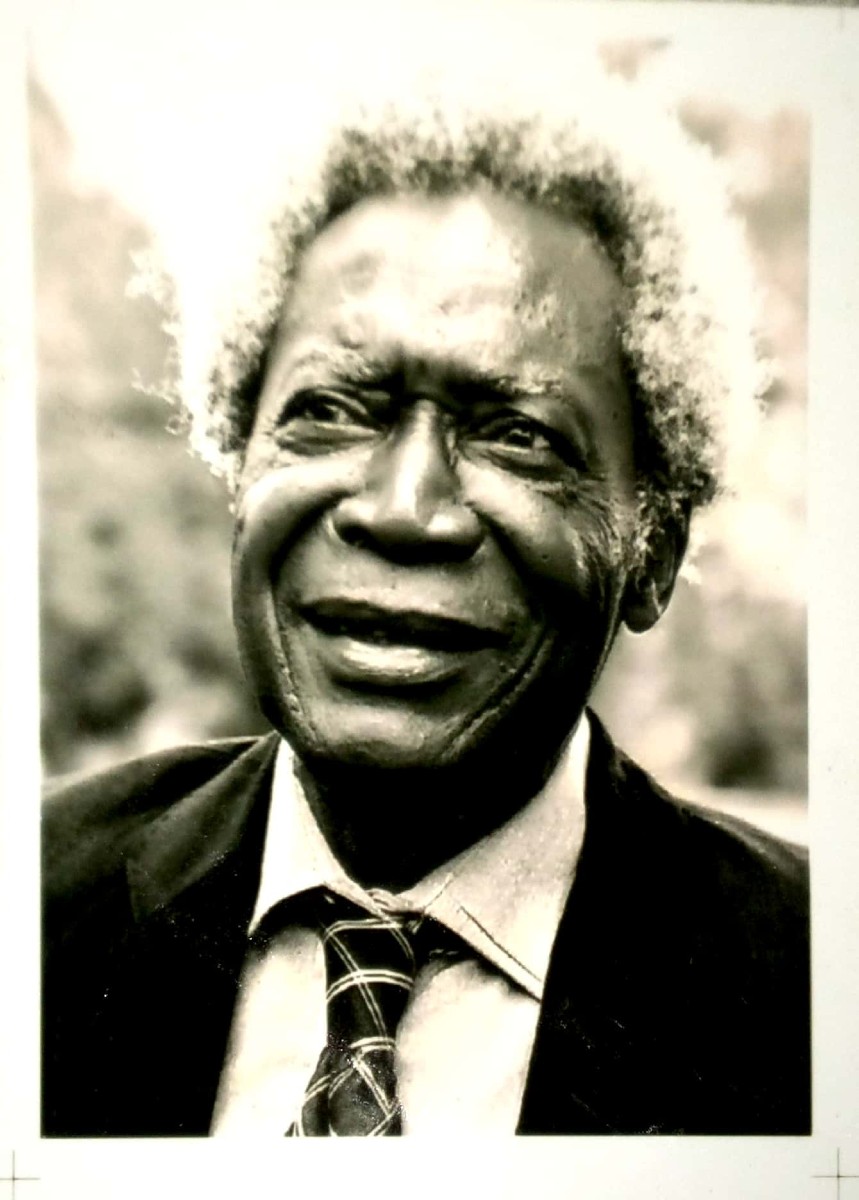
Alfred completed his early education in Lagos, Nigeria, and left for the U.S. in 1963 for the University of Idaho Department of Chemical Engineering, supported by the African Scholarship Program of American Universities (ASPAU) and graduated in 1966.
His MS and PhD degrees were awarded by Stanford University in 1967 and 1971, supported by the African Graduate Scholarship Program (AFGRAD). He taught at Notre Dame University as Assistant Professor from 1970-1973. He returned to Nigeria in 1973 to join the University of Ife and moved to the University of Lagos in 1974. He became a full Professor in 1982. He was Head of Department from 1980-1986 and Dean of the Faculty of Engineering from 1991-1995. He retired from the University of Lagos in 2005 and was appointed an Emeritus Professor in 2013. His research interest ranged from Kinetics and Catalysis, Petrochemicals, Waste Management, Leak Detection Technologies and Biomedical Engineering. His publications include a US patent, four books and more than 200 journal articles. He has supervised 48 MSc and 27 PhD students. He is a Fellow of the Nigerian Academy of Science, Foundation Fellow of the Nigerian Academy of Engineering, Fellow of the Nigerian Society of Engineers and Fellow of the Nigerian Society of Chemical Engineers. He won the NNOM (Nigerian National Order of Merit) in 2003. The NNOM is the highest intellectual award the Federal Government bestows on Nigerians worldwide. In 2004, he won the Nigeria LNG Science Prize. In 2004, he also won the ASPAU/AFGRAD/ATLAS Distinguished Alumni Award.
- B.S., University of Idaho College of Engineering, Chemical Engineering, 1966
- M.S., Stanford University, 1967
- Ph.D., Stanford University, 1971
Jon Van Gerpen
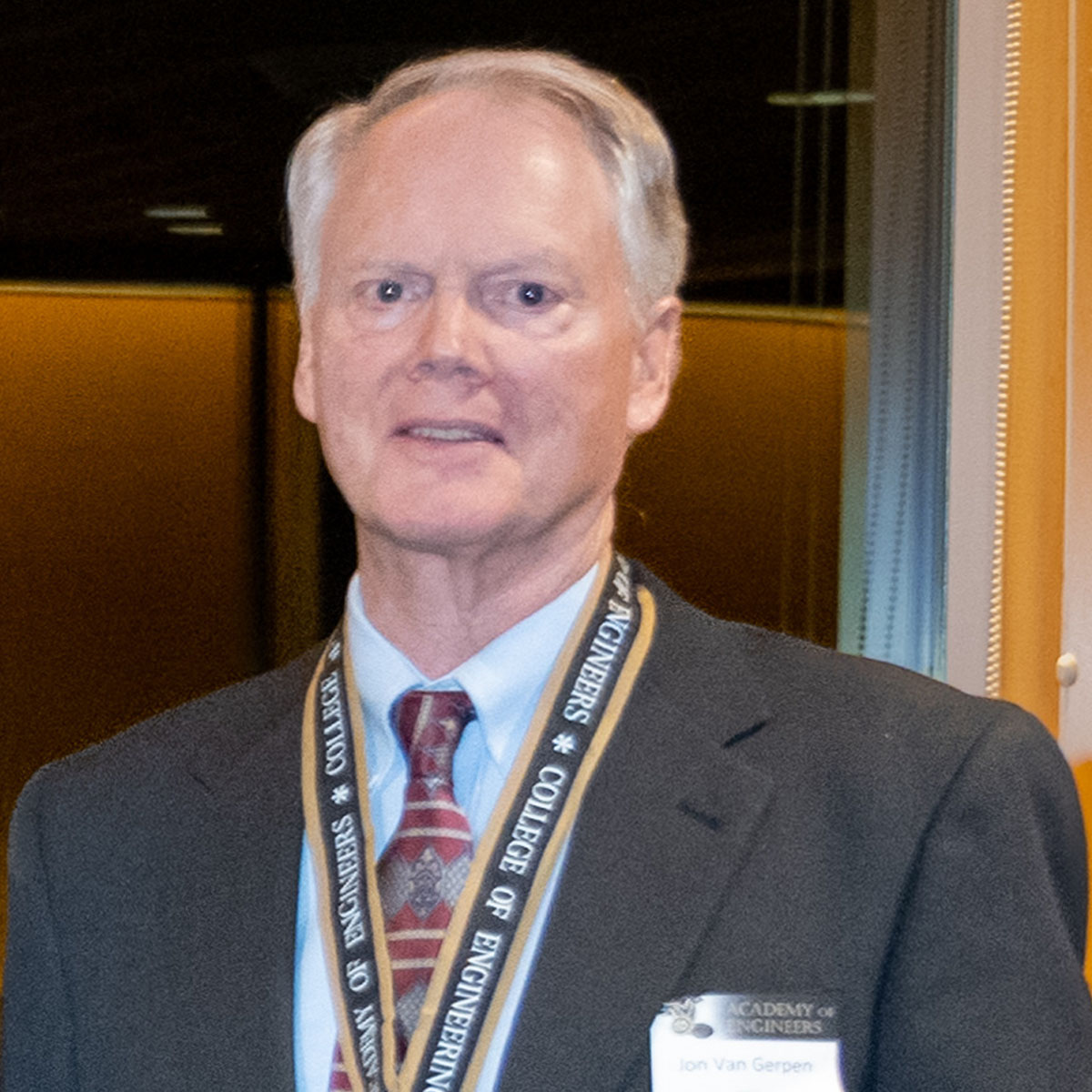
Jon Van Gerpen retired from the University of Idaho in 2015 where he was a professor, the Associate Dean for Research in the College of Engineering, and the Department Head of Biological and Agricultural Engineering. From July 1984 to July 2004, he was a professor of Mechanical Engineering at Iowa State University. He received his B.S. (1978) and M.S. (1980) degrees in Mechanical Engineering from Iowa State and his Ph.D. (1984) from the University of Wisconsin-Madison. Dr. Van Gerpen has taught courses on thermodynamics, internal combustion engines, biofuels, electric power and controls, combustion, instrumentation, and laboratory methods. He also has industrial experience (2 years) at John Deere where he worked on the design team that developed that company’s 12.5-liter diesel engine currently used in their large 4-wheel-drive tractors. Dr. Van Gerpen has been researching the production and utilization of biodiesel for the past 30 years and his projects include measuring the effects of biodiesel on the combustion and emissions for a diesel engine, the design and construction of a biodiesel pilot plant, and the development of a nation-wide biodiesel education program. He has published numerous technical papers on biodiesel production from low-cost and novel feedstocks. He was directly involved through presentations, publications, and consulting, with the development of the current billion-gallon-per-year biofuel industry.
- B.S., Mechanical Engineering, Iowa State University, 1978
- B.A., Philosophy, Iowa State University, 1978
- M.S., Mechanical Engineering, Iowa State University, 1980
- Ph.D., Mechanical Engineering, University of Wisconsin – Madison, 1984
Edgar Vidal
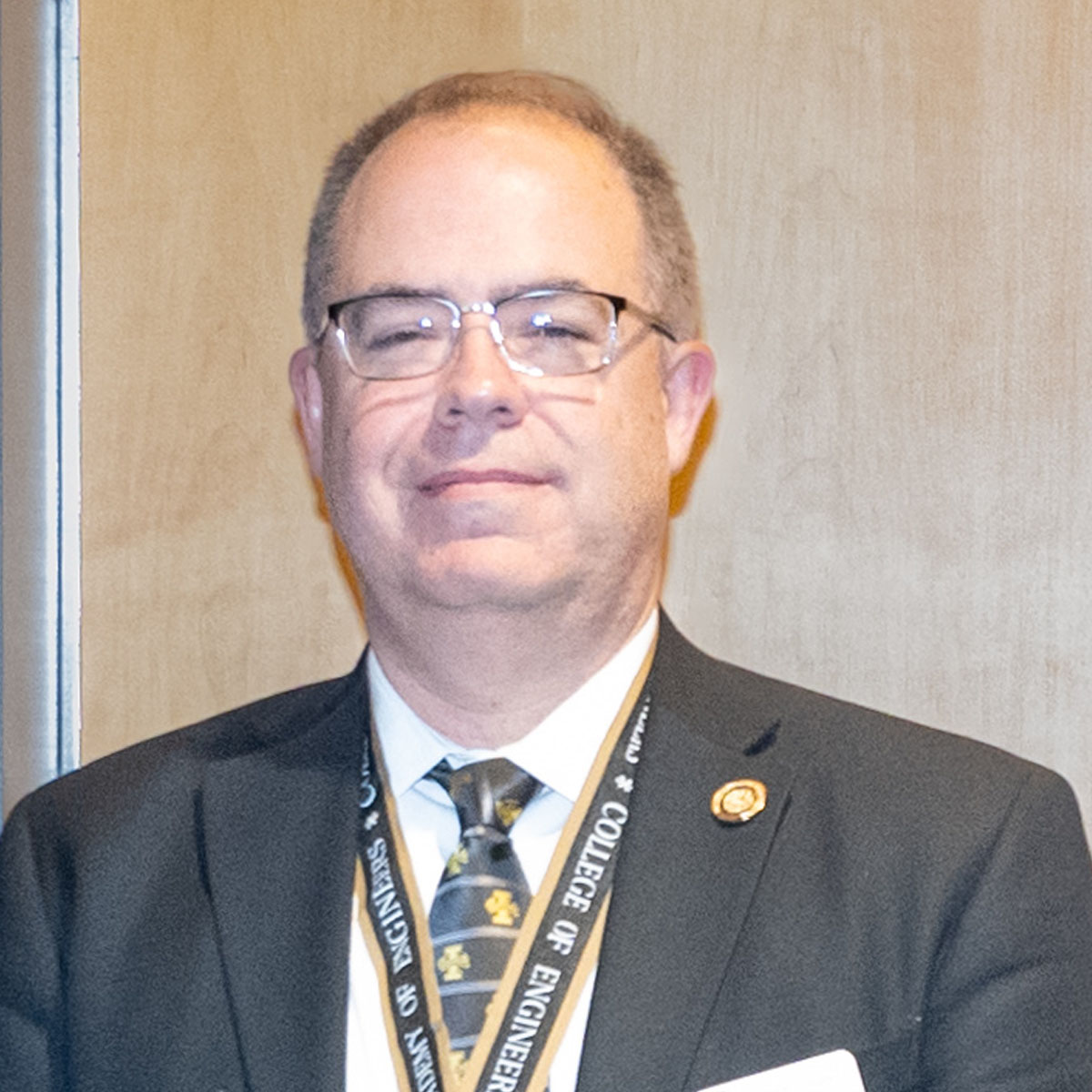
Dr. Edgar E. Vidal obtained his Doctorate in Mining Engineering – Metallurgy at the University of Idaho in 1998, and has a BS and MS in Materials Engineering – Metallurgy from Simon Bolivar University in Caracas (USB), Venezuela. As of 2022, he is Vice President of Marketing and Business Development for NobelClad (DMC Global Inc.) where he oversees the development of new materials, processes, markets and applications, including R&D. Dr. Vidal is also an Affiliate Faculty for the Kroll Institute for Extractive Metallurgy at Colorado School of Mines.
Dr. Vidal has had a diverse career spanning from academic research and teaching to managing commercial activities in the industry. Before joining the Colorado School of Mines as Visiting Scholar, Research Associate and later Assistant Professor, Dr. Vidal was the Coordinator of the Materials Engineering Graduate School at USB. In the industry, he became an expert in beryllium metal. Dr. Vidal is co-inventor of processes and materials (4 patents granted and 2 pending) including molten salt production and bulk metallic glasses.
Dr. Vidal has over 60 publications, has co-edited multiple books and been invited speaker on many occasions. He was awarded the CEO Innovation Award by DMC Global Inc.; three times the IDEA Award by Materion Corporation; the Young Leader Award by the Minerals, Metals and Materials Society (TMS); Level I Research Award by the Venezuelan National Science Foundation (FONACIT). He is member of several professional societies including the American Nuclear Society, ASM International, TMS, Society for Mining, Metallurgy and Exploration, The American Welding Society.
- Ph.D., Mining Engineer - Metallurgy, University of Idaho, 1998
- MSc, Materials Engineer, Simon Bolivar University, 1995
- B.S., Materials Engineering - Metallurgy, Simon Bolivar University, 1993
2021
Dean Haagenson
View ProfileDennis Hanson
View ProfileThomas Henderson
View ProfileBrant Hinze
View ProfileWilliam Thomson
View ProfileGordon Bopp
Deceased
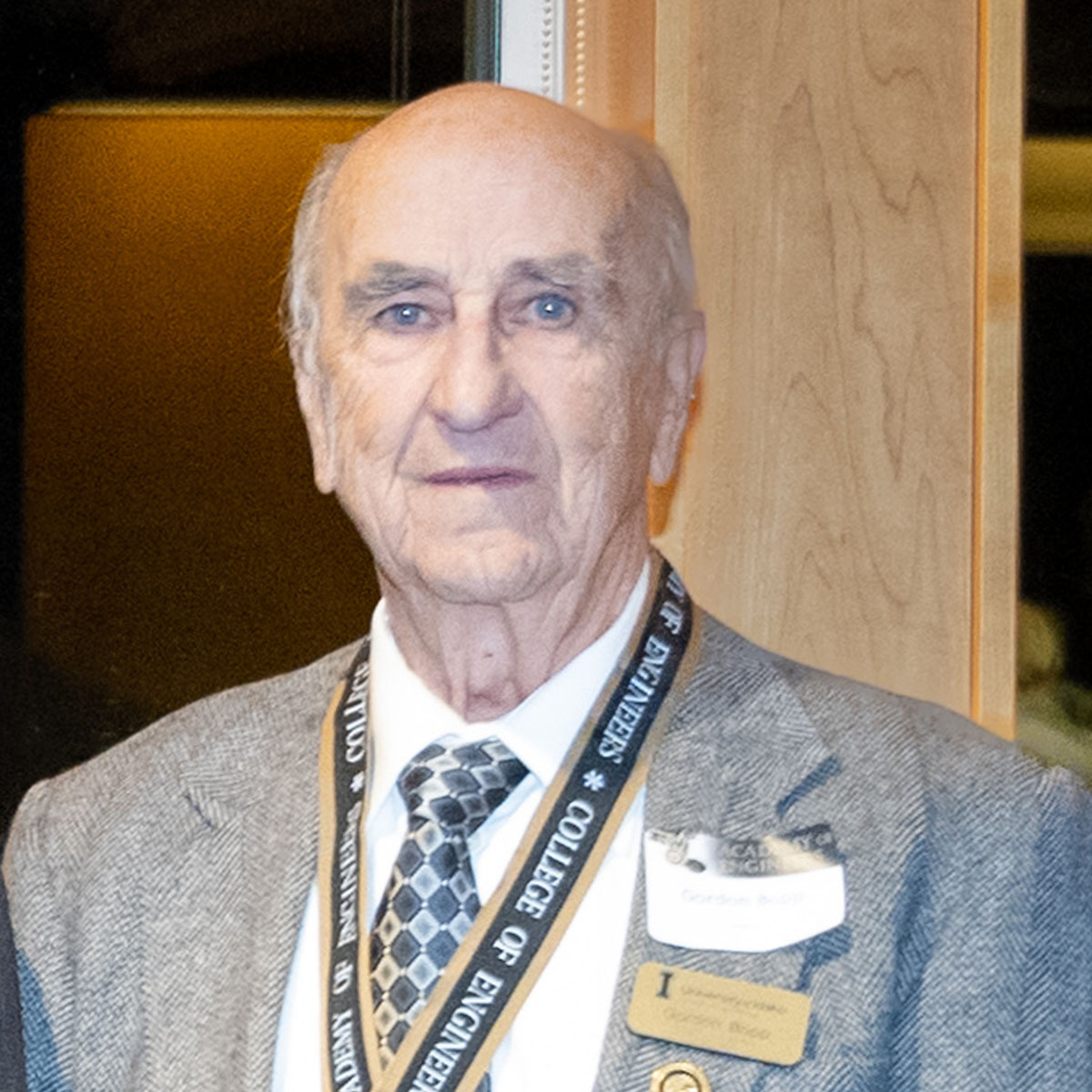
After receiving his doctorate degree in chemical engineering from Stanford University, Gordon Bopp joined the chemical engineering faculty at the University of Idaho in 1963. In addition to teaching and research within the chemical engineering department, he helped establish a Faculty Council with representation from each of the colleges of the university. Serving as chairman, he wrote legislation providing for faculty and student participation in university governance and chaired the faculty fundraising effort for the Hartung Performing Arts Center.
Awarded the Merit Citation by the Associated Students of the U of I in 1968, Gordon was also selected as an American Council on Education’s (ACE) Academic Administration Internship Program during the 1968-69 academic year and spent that year at the University of California, Irvine.
During the 1969-70 academic year, Gordon served as acting chairman of the Department of Chemical Engineering at the U of I and in 1970 was appointed vice chancellor for academic affairs at the University of Minnesota Morris campus. He served there until 1978, when he was appointed executive vice president for academic affairs and administration at Eastern New Mexico University.
In 1981, Gordon accepted appointment at the New Mexico Institute of Mining & Technology as vice president for academic affairs. During his tenure, he established the Technological Innovation Center (TIC), which provided assistance to entrepreneurs in the commercialization of inventions.
Gordon’s experience in technology transfer and the commercialization of inventions led to his receiving an offer to become the first executive director of the newly created Spokane Intercollegiate Research & Technology Institute (SIRTI) in Spokane, Washington in 1990. The five-institution consortium fosters economic development in the Spokane and Inland Empire region.
In 1992, the Westinghouse Hanford Company recruited Gordon to start up an International Environmental Institute in Richland, Washington. Gordon retired from Westinghouse in 1995, and his retirement activities included major involvement in public service most notably with the National Alliance on Mental Illness for the State of Washington (NAMI-WA).
He served as president of NAMI-WA from 2003 to 2009, during which he played a lead role in the state’s Mental Health Transformation Project funded by the federal government. He was appointed by the governor to the Transformation Working Group (TWG) that was responsible for developing and implementing the Mental Health Transformation Plan for the State of Washington. In 2010, he was named President Emeritus of NAMI-WA.
- B.S., Chemical Engineering, University of Colorado, 1959
- M.S., Chemical Engineering, University of Colorado, 1961
- Ph.D., Chemical Engineering, Stanford University, 1964
Dean Haagenson
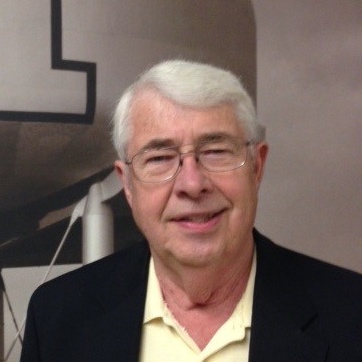
Dean Haagenson is a proud Vandal who, for many years, has given his time, talent and treasure for the betterment of the University of Idaho and many other Idaho charities. Dean is a north Idaho native, born and raised in Bonners Ferry, Idaho, and he graduated from Bonners Ferry High School.
Dean graduated from the University of Idaho in 1965 with a B.S. degree in mechanical engineering. After graduation, he moved to Seattle where he began his career as an associate engineer for The Boeing Company. From 1966 through 1969 he worked as a cost engineer for the large joint venture RMK-BRJ doing construction in Vietnam.
In 1970, Dean took a position as a project engineer/project manager for Baugh Construction Company in Seattle, which at the time was constructing many buildings in the Puget Sound region of Washington. In 1975, Dean co-founded Contractors Northwest Inc. (CNI), a Coeur d’Alene based building construction company, typically employing 40-100 managers and craftspeople. Dean served as president for 40 years.
Dean says his first-rate engineering background was very well suited for CNI’s technical industrial and commercial projects. The company worked in Idaho, Washington, and Oregon. A few of CNI’s larger projects include the multi-million dollar Kootenai Cancer Center in Coeur d’Alene, wastewater treatment plant upgrades in Coeur d’Alene and elsewhere, a financial center in Sandpoint, the Boise airport parking garage, and the treasured McKuen Park project in downtown Coeur d’Alene.
While CNI reroofed the Kibbie Dome a couple decades ago, Dean devised a mechanism to access the work in a level position while moving up and down the curvature of the roof. This invention facilitated a cost-effective means to get the job done on schedule and within budget.
Dean was a founding member and first president of the Inland Pacific Chapter of Associated Builders and Contractors (ABC) and served ABC National as a member of the executive board and as National Treasurer.
Dean brought his technical skills to government by serving in the Idaho House of Representatives from 1983 to 1990, serving as Chairman of the Resources & Conservation Committee from 1987-1990.
Dean believes in philanthropy and wanted to help future students set their course for interesting careers of meaning and significance. He and his wife chose to create the Dean and Cindy Haagenson Mechanical Engineering Endowed Professorship to honor the impact faculty make on students and support one of their favorite charities, their alma mater, as well as an Endowed Scholarship in Engineering.
- B.S., Mechanical Engineering, University of Idaho, 1965
Dennis Hanson
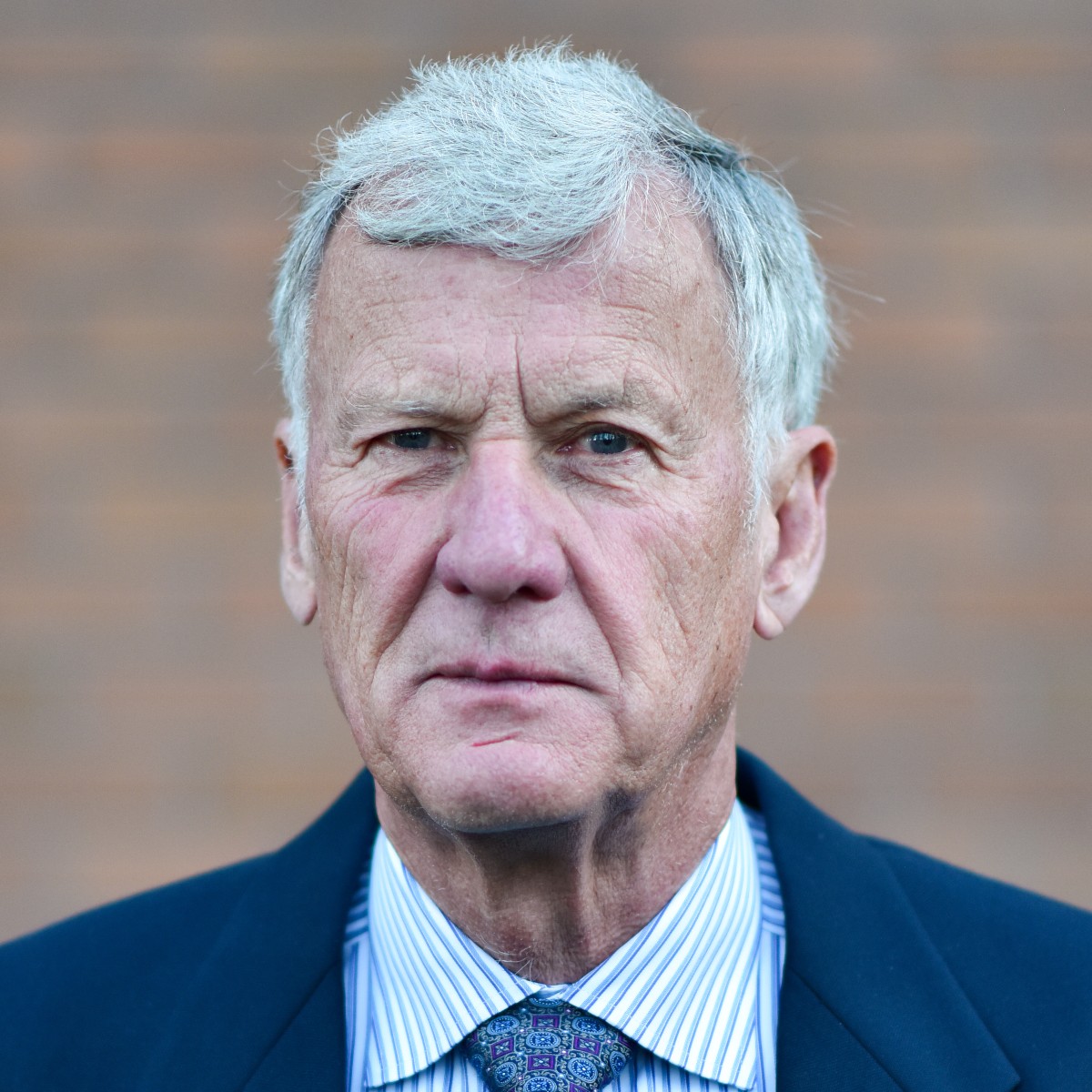
Dennis Alvah Hanson grew up working in the family-owned engineering and manufacturing business, RAHCO, in Palouse Washington and was mentored by many of the engineers. He graduated from Palouse High School in 1968, attended Washington State University for 3 years and will receive an honorary engineering degree during the winter commencement in December 2021.
Dennis helped grow RAHCO into a world leader in the design and manufacture of specialized construction equipment. Dennis travelled extensively to provide technical support for the operation of RAHCO equipment on construction projects in the US, South America and the Middle East.
Dennis was a member of the United States Delegation to the U.S.S.R. titled, the Design and Construction of Large Irrigation Canals, to study the feasibility of reversing the flow of the Ob River in Siberia. The group traveled from Moscow to Pyatigorsk to Tashkent, where they toured a site that had been excavated using detonations of three 15-kiloton nuclear devices.
In 1977, Dennis launched his own entrepreneurial career, managing Dye Seed Ranch Inc. for the Dye Family before purchasing it in 1983. Dennis designed, built and improved much of the machinery used for the processing of the raw grass seed and the packaging of the clean seed.
In 2001, under the authority of the Stevenson-Wydler Technology Innovation Act of 19802, Dye Seed entered into Cooperative Research and Development Agreement with the U.S. Department of Energy (DOE) Pacific Northwest National Laboratory. Dye Seed received three individual project letter agreements that supported collaboration with the Initiatives for the Proliferation Prevention Program of the DOE, the United States Industry Coalition, Inc. (USIC), and the cooperating New Independent States of the Former Soviet Union (FSU).
Dye Seed became a member of USIC, and Dennis traveled to the FSU several times. Dye Seed tested microbial bugs in Montana and hosted numerous scientific groups to visit the United States from the FSU as well.
Dye Seed also provided Dennis with a reason to fly his own aircraft. He quickly earned his private pilot’s license and instrument rating during his first year at Dye Seed to facilitate his commute from Spokane to Pomeroy and went on to earn his Airplane Multiengine Land Airline Transport Pilot Certificate with Commercial Privileges Airplane Single Engine Land, Airplane Single Engine Sea, Rotorcraft-Helicopter and Instrument Helicopter ratings.
He also holds a Mechanic Certificate with Airframe and Powerplant ratings and a Certified Flight Instructor Certificate. Dennis has over 15,000 flight hours and has had the opportunity to fly notable individuals such as Arnold Palmer, Tom Watson, Walter Cronkite, Shimon Peres, Benazir Bhutto, and Idaho Governor Butch Otter over the years.
Aviation introduced Dennis to his loving wife, Norma Jean (U of I ’77 BS Bacteriology), whom he married in 1983. They have three sons, all with BSME and MSME degrees from the U of I and one daughter with a Ph.D. in Bioengineering from MIT.
Dennis acquired an ownership interest in Eagle Helicopters Inc, in 1985, a FAA part 135 certificate holder that he continues to be majority owner, Chief Pilot and Check Airman. In 1985, Dennis was instrumental in developing the “HeartFlite” EMS Program for Sacred Heart Medical Center. Over the next 10 years, he designed and fabricated the medical interiors for both the helicopter and fixed wing aircraft, also flying both.
In 1989, Dennis acquired a majority interest in Fasteners Inc, a business headquartered in Spokane that distributed industrial fasteners in Washington, Idaho and Montana which was sold to a national company in 2015.
After Raymond's passing in 2009, Dennis assumed the family leadership to oversee Hanson Industries Inc and its continued development of remaining real estate holdings and a platinum mine in Alaska.
Dennis taught NJ and all four children to fly and they remain active in aviation as a family today. Today, Dennis and Norma Jean fly a Daher TBM 940 airplane, in pursuit of mountain biking, skiing, travel and grandchildren, having flown to Europe and Central America.
- Ph.D., University of Idaho, 2021
Thomas Henderson
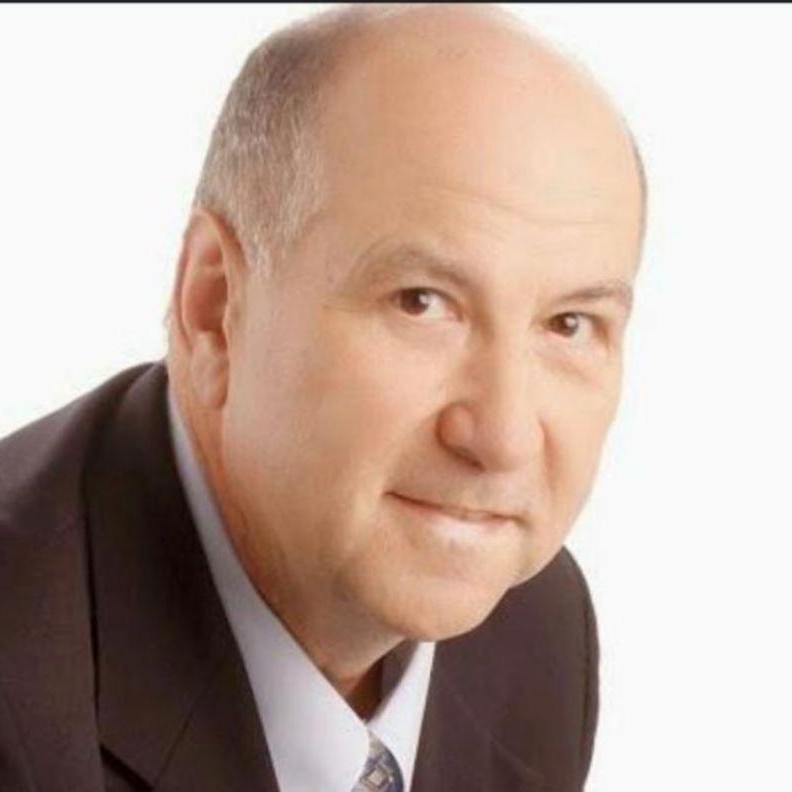
In 1977, Tom Henderson started his mining career in the deep hardrock mines of Idaho’s Silver Valley with Hecla Mining Company at the Star Mine. The bottom level of the Star was 8,100 feet beneath the surface (and 2,300 ft below sea level). Mr. Henderson worked as an underground miner until 1982 when he enrolled at the University of Idaho to pursue a mining engineering degree. His advice to professors? “Give a little slack to underground hardrock miners in your class next time. It was not easy being an engineering student after digging and blasting rock for 5 years – a little grace would have been appreciated.”
Mr. Henderson completed his BSc in Mining Engineering in December of 1985. With university completed, Mr. Henderson joined ASARCO Mining Co. and filled roles as Shift Foreman and General Mine Foreman for the ASARCO’s Idaho & Colorado underground mining operations.
In 1989, Mr. Henderson Joined Freeport McMoRan and spent the next 13 years as an expat on the Indonesian half of the island of New Guinea training and managing locals at one of the largest copper and gold mines in the world. He spent 5-years as the underground General Mine Foreman and followed by 8-years at the giant open-pit Grasberg Mine as General Superintendent and then Manager. In these roles, he managed over 800 employees.
With children now ready for high school, Mr. Henderson’s family moved back to the USA in 2002 and he continued his career as the Underground Technical Superintendent Barrick Gold in Nevada, Mine Manager for Robinson Mining company in Ely, Nevada, and as General Manager & Vice President for Coeur’s Kensington Gold Mine in Alaska.
Once all children graduated, Mr. Henderson returned overseas in 2011 as Chief Operating Officer for St. Augustine Mining and was responsible for operations, technical feasibility studies and the successful permitting of the mine on the island of Mindanao in the Philippines. Here, he also had to learn to deal with corrupt politicians, rebels, and communist insurgents – a class he said he must have missed at university – and as, General Manager for the Aurora Gold Mine in Guyana, South America, deep in the Amazon rainforest.
To capstone his career, in 2021, Mr. Henderson assumed the role of GM at the Sunshine Mine. Tom is pleased to be back to Idaho and working in the iconic Silver Valley. A place that launched his career, a place where he met his wife of 40 years, Eileen, and the place he has always planned to retire to.
- B.S., Mining Engineering, University of Idaho, 1985
- M.B.A, Regis University, 2002
Brant Hinze

Brant Hinze is a mining engineering graduate with over thirty years in the industry both large and small surface and underground mines. As president and chief operating officer for Kinross Gold Corporation, Brant oversaw ten global operations, projects, exploration and corporate technical services. With the senior leadership team, he developed the company’s strategic directions, set corporate standards and established goals for operations, present and future, to further the company’s leadership in the field. Kinross has operations in Brazil, Chile, U.S., Russia, Ghana and Mauritania as well as exploration projects on four continents.
Before Kinross, Brant worked for the Newmont Mining Company after its merger with Battle Mountain Gold Company in 2001. During nine years with the company, he developed an effective leadership team and a plan to exceed standards in safety, production, costs, staff development, environment and social responsibility.
Brant is a Board Member of Beadell Resources Limited, a gold development company. The company’s primary asset is the Tucano gold project, located in Brazil.
- B.S. Mining Engineering, University of Idaho, 1984
William Thomson

After completing his master’s at Stanford, William Thomson worked at AVCO Research and Engineering, designing the heat shield on the Apollo re-entry vehicle. He was commissioned as an officer in the U.S. Navy in 1962 on the USS Halsey for 100 sailors.
He served at the National Security Agency for 2 years and was awarded the Joint Service Commendation Medal for contributions to the nation’s intelligence efforts. Upon completion of his doctorate, William taught at U of I for 10 years and was instrumental in establishing the Women in Engineering program there.
He served as chair of the Department of Chemical Engineering at Washington State University for 16 years and was a major professor for 18 doctoral and 54 master’s students. With over 50 refereed publications in national journals, William was elected a Fellow of the American Institute of Chemical Engineers. He is a consultant for numerous chemical engineering companies and a member of the Hanford Advisory Panel. He also chaired the Lou Edwards Endowed Chair effort, raising $2.2 million dollars for U of I.
- B.S., Chemical Engineering, Pratt Institute, 1960
- M.S., Chemical Engineering, Stanford University, 1961
- Ph.D., Chemical Engineering, University of Idaho, 1969
2020
John Brown
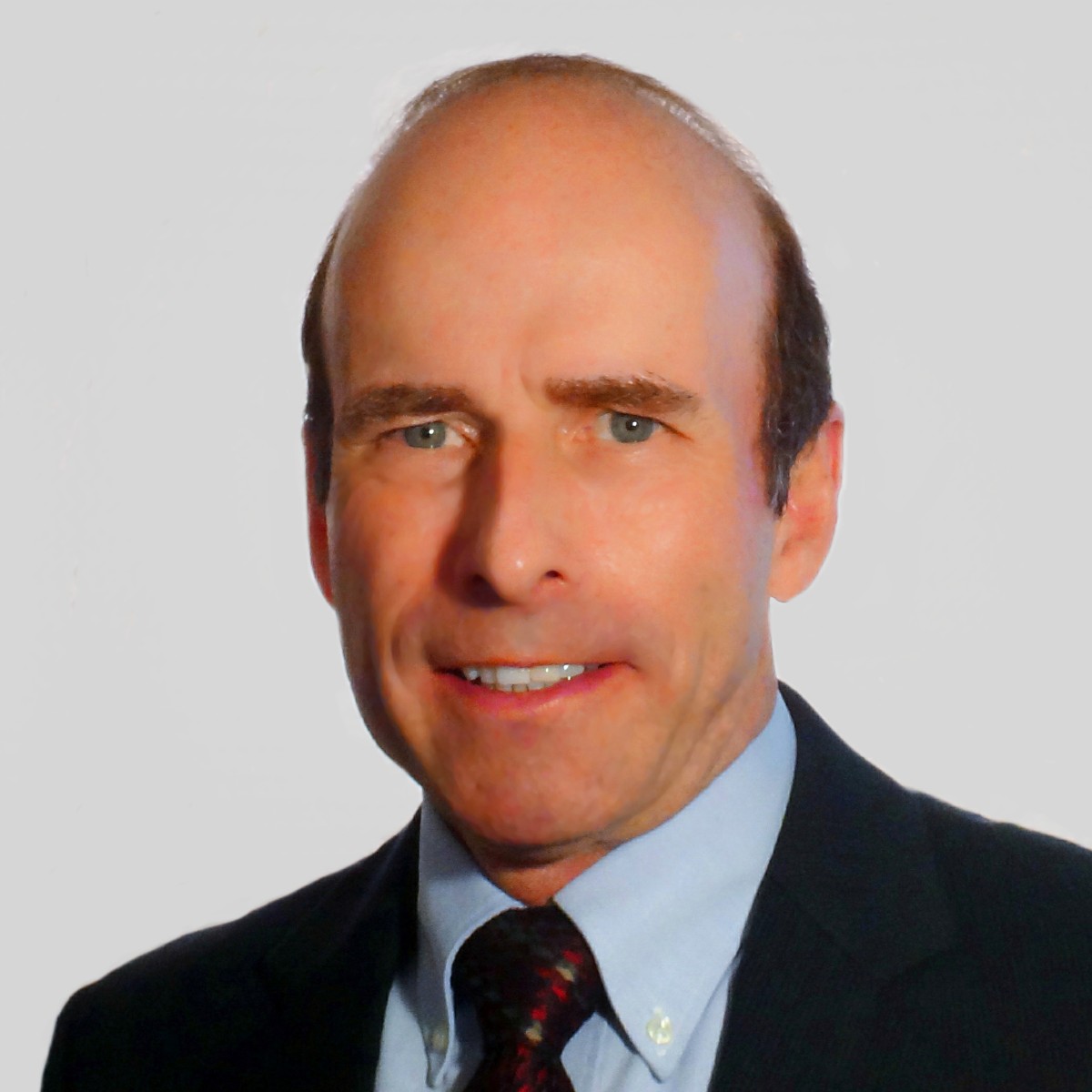
John recently joined Flex as Senior Director of Enterprise Risk Management (ERM), where he leads evolution of the company's global ERM program.
In his previous role as Associate Director with Guidehouse, he led multiple risk management projects in federal government agencies. Over the past two decades, John has created and implemented global risk and resiliency frameworks and programs at Fortune 500 companies.
John received his Master’s of Engineering and Bachelor’s of Science in electrical engineering from the University of Idaho. He also earned his MBA from the University of Washington.
- B.S., Electrical Engineering, University of Idaho, 1979
- M.Engr., Electrical Engineering, University of Idaho, 1985
- M.S., Business Administration, University of Washington, 2001
Thomas Eddy
Deceased
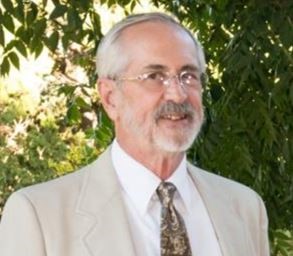
Thomas started his career in 1958 with AT&T-Bell Telephone Laboratories, in their Underwater Systems Division. He led a team of engineers in the design and installation of a Top-Secret classified Navy early-warning system for detecting, identifying and tracking Soviet Union ballistic missile submarines.
In 1990, Thomas retired from Bell Laboratories to form his own company, Integrated Technical Solutions, a business aimed at helping small and medium sized businesses deal with the rapidly changing computing and internet technology.
Thomas sold the company in 2010, retired for the last time, after which he and his wife Bonnie moved to their current home in Montana. He passed away September 24, 2020. He is survived by his wife Bonnie and brother Don, who is also an Academy member.
- B.S., Electrical Engineering, University of Idaho, 1958
- M.S., Electrical Engineering, New York University, 1960
- Ph.D., Electrical Engineering, Polytechnic Institute of Brooklyn, 1969
Nick Purdy
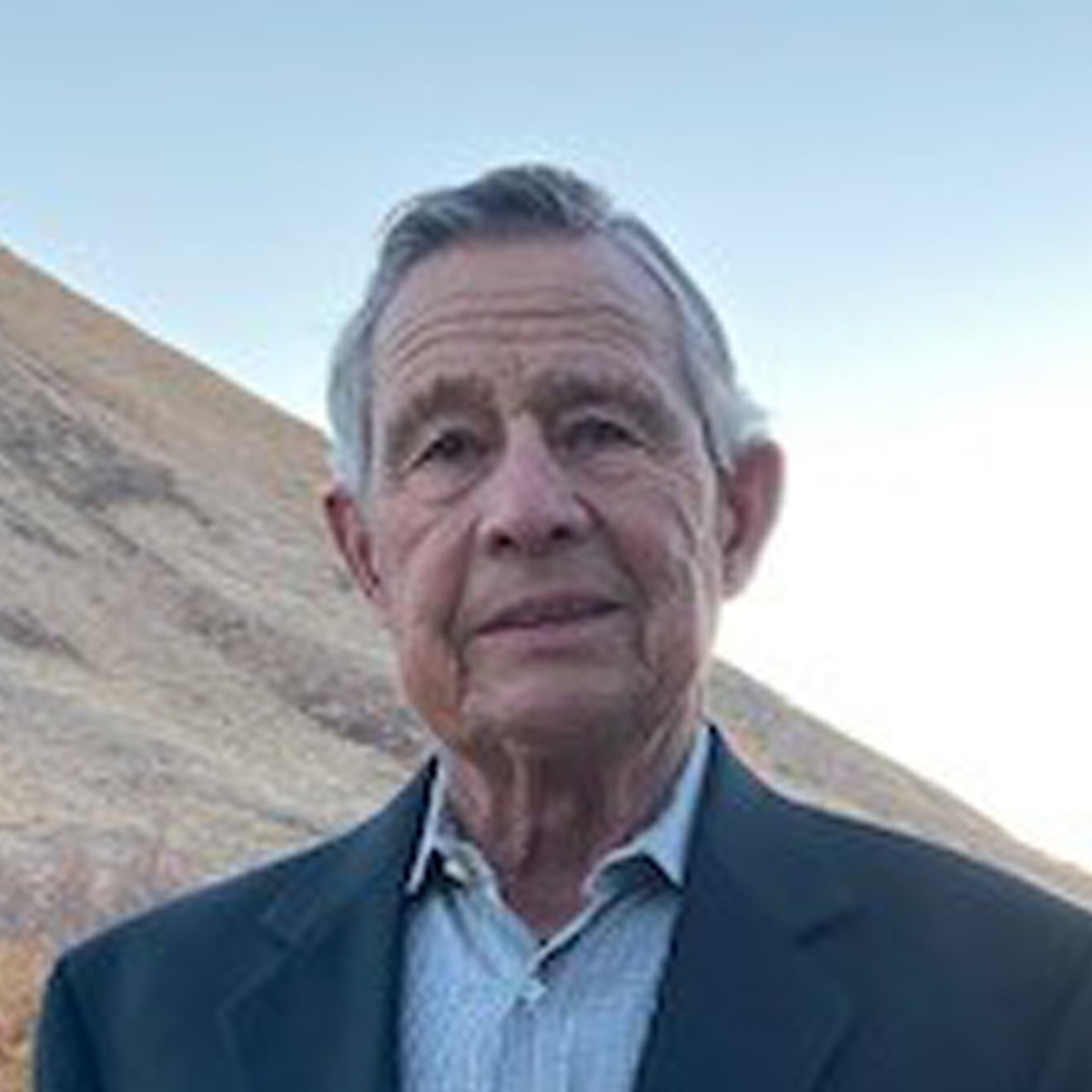
Nick is the president and owner of Picabo Livestock Company and the president and director of Purdy Enterprises. He has his Bachelor’s of Science in Agricultural Engineering from U of I. He is a member of the U of I Foundation and the Idaho State Department of Environmental Quality Board.
- B.S., Agricultural Engineering, University of Idaho, 1962
Ted Sorenson
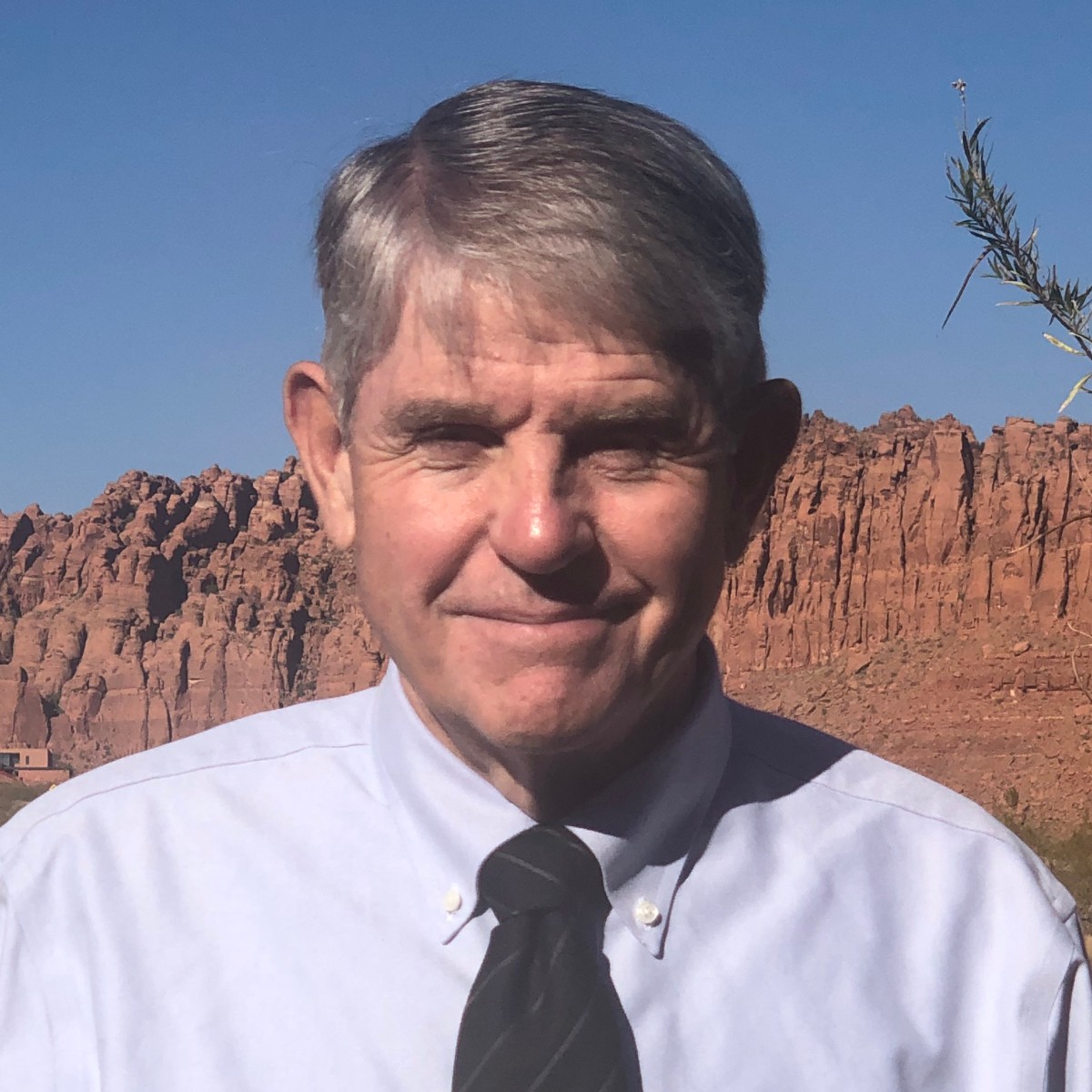
Born 1950 in Rexburg, Idaho, Ted grew up on Cattle Ranch located on Henrys Fork of Snake river in Eastern Idaho . He attended the University of Idaho 1968-1974. He worked his way through school as laboratory technician, a brick carrier, dump truck driver and surveyor. He graduated with a bachelor’s and master’s degree in civil engineering .
After college, Ted worked for local consulting firm in Moscow while his wife attended law school. The couple moved to Idaho Falls in 1980 to start Sorenson Engineering . Beginning his career as a sanitary engineer. Ted designed approximately 30 municipal water supply and wastewater treatment facilities, designing simple reliable systems to include land disposal for nutrient removal .
Ted transitioned to designing small hydroelectric plants, primarily associated with existing irrigation diversions or existing non-powered dams. He designed approximately 46 small hydroelectric plants ranging from 300 Kilowatts to 40 Megawatts as a consultant or developer. He currently has ownership in and operates some 22 plants in the Western U.S. and Belize. He has had the privilege to see a Mayan Indian village transformed with electricity.
Ted and his wife Gayle Sorenson ’75 ’78 have six kids, and three are engineers. Ted served for twenty-five years on his local cemetery board and worked with youth groups for 35+ years. His hobbies include reading, hiking, bicycling and skiing. He recently took up flying in 2010 and has a passion for the mental challenge associated.
- B.S., Civil Engineering, University of Idaho, 1974
- M.S., Civil Engineering, University of Idaho, 1975
Kim Zentz
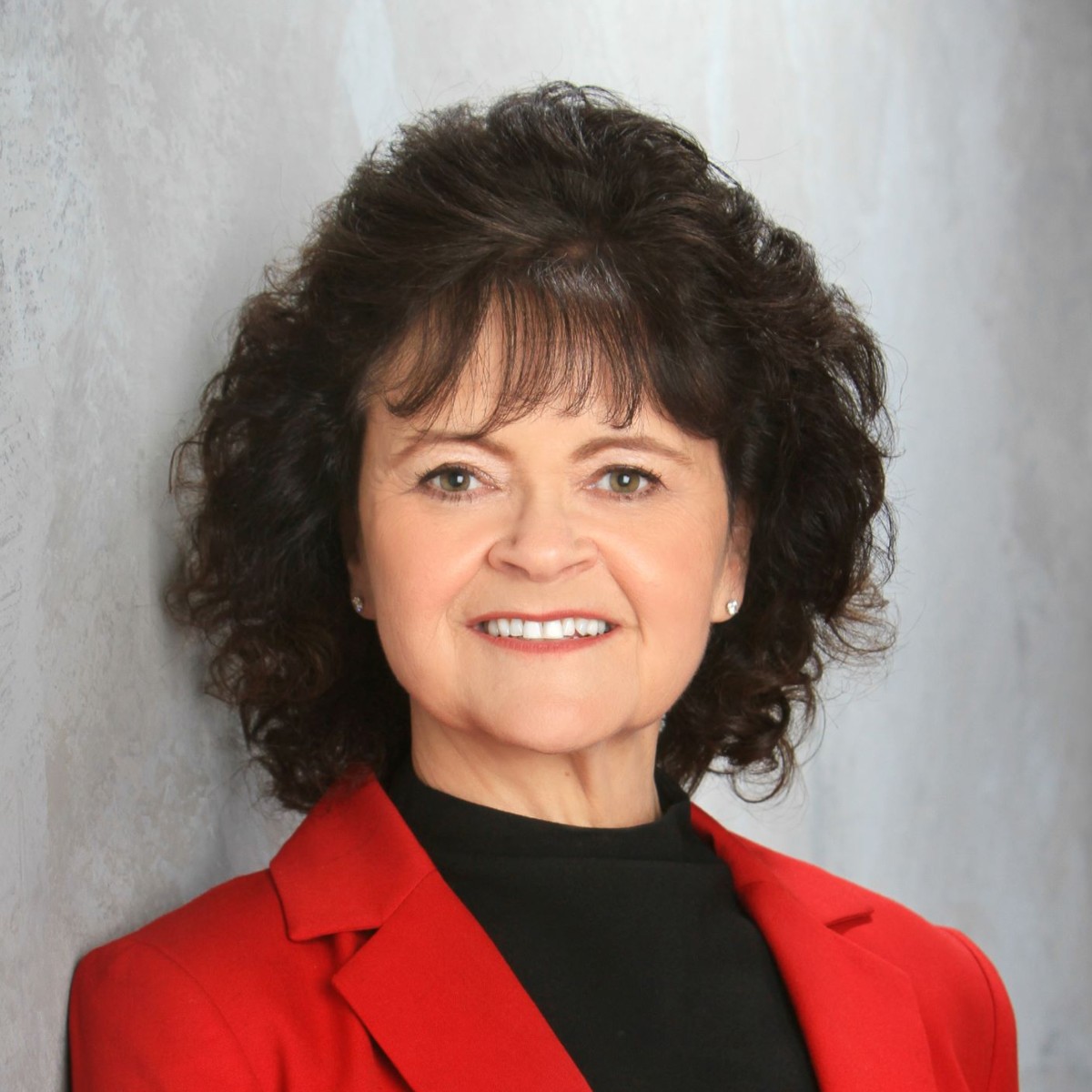
Kim Zentz, P.E., is co-founder and chief executive officer of Urbanova where she oversees every aspect of Urbanova’s mission, strategy and portfolio of projects, assets, and services. Her career spans executive, entrepreneurial and project leadership across utilities, transportation, tech-based economic development, higher education, and clean-tech startup companies. Her leadership positions include CEO of Innovate Washington, CEO of the Spokane Transit Authority, founding president and COO of Avista Labs (now ReliOn/Plug Power) and several executive positions for Avista Utilities. Kim is also director of urban innovation for Washington State University (WSU) and previously served as director of the Engineering and Technology Management online graduate program for WSU’s Voiland College of Engineering and Architecture. She has provided leadership in the community on the boards of The University District Development Association, Spokane County United Way, Mobius Science Center, and Greater Spokane Incorporated among others. Kim holds a Bachelor’s in Civil Engineering from the University of Idaho and a Master of Engineering Management from WSU.
- B.S., Civil Engineering, University of Idaho, 1981
- M.Engr., Engineering Management, Washington State University, 1988
2019
Donald M. Blackketter
View ProfilePaul Cooley
View ProfileByron Flynn
View ProfileLisa Grow
View ProfileMichael L. Olson
View ProfileDonald M. Blackketter
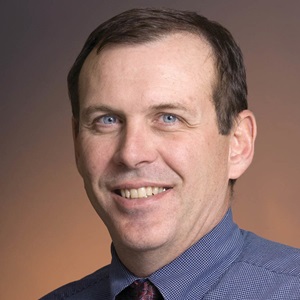
Donald M. Blackketter has been active in the practice, education, promotion and administration of engineers and scientists for over 30 years. In 2011, Blackketter became Chancellor of Montana Tech (MTU). During his career there, he was able to get Regent approval for standalone Mechanical and Civil Engineering programs (formerly General Engineering), and MTU’s first Ph.D. program in Material Science. Since its approval in 2013, MTU has graduated five doctoral students and currently has nearly 20 active Ph.D. candidates.
Blackketter was also responsible for raising $10 million in state and private funding for MTU’s Natural Resource Research Center (NRRC). The NRRC is a 30,000-square-foot research and undergraduate facility that includes labs supporting non-conventional drilling, industrial safety, the cleanest clean room within 500 miles, and a power engineering lab funded by Schweitzer Engineering Laboratories. Blackketter retired from his position at MTU in 2019.
Born in Moscow, Blackketter followed in his father’s mechanical engineering footsteps and was at the University of Idaho from 1989 to 2011 as an Assistant, Associate, and Professor of Mechanical Engineering. He held positions as Department Chair, interim National Institute for Advanced Transportation Technology Director, and was Dean of the College of Engineering from 2008 to 2011. He also organized the Academy of Engineers and inaugurated its first class in 2011.
He has been an active researcher and the author of over 60 journal and conference publications in areas that include experimental and computational composite materials, biomechanics, numerical methods, and hybrid/electric vehicles. Blackketter is a Registered Professional Engineer in Idaho and Montana.
A current U of I professor emeritus in the Department of Mechanical Engineering, Blackketter is retired and lives in Moscow with his wife Vicki.
- B.S., Mechanical Engineering, University of Wyoming, 1985
- M.S., Mechanical Engineering, University of Wyoming, 1986
- Ph.D., Mechanical Engineering, University of Wyoming, 1989
Paul Cooley
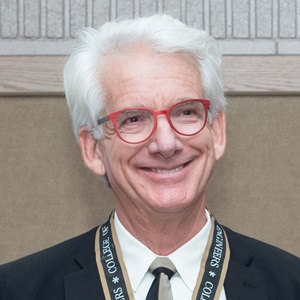
Paul Cooley ’77, ’80 has more than 35 years of experience building on the knowledge received at University of Idaho and applying it to the design of aquatic life support systems for marine research facilities, algae culture, zoos, aquariums and marine parks. Most recently, he and his wife, Rebekah Gladson FAIA, founded PCA Global, an international aquatic life support systems design firm. They sold the firm to Ardurra Group, a Florida based engineering consulting firm. PCA Global opened an office in Sydney, Australia, and work is currently being done on a multibillion dollar marine park in Abu Dhabi.
Over his career, Cooley developed more than 200 integrated aquarium life support systems, utilizing some of the most advanced and innovative treatment systems to meet the unique challenges of maintaining and exhibiting species ranging from elephants to sharks to zebra fish and algae. His projects span the globe, including Sea World Australia in Brisbane, Australia, World of Discovery in Dubai, Polar Ocean World in Shanghai, China, McMurdo Station Research Aquarium in the Antarctic and Living Seas Pavilion at Disney Epcot in Orlando Florida.
Cooley and his wife Rebekah are very engaged in their community and professions. Cooley has been a Board Member for the San Diego Mental Health Association, President of the American Public Work Association’s San Diego chapter, President of the WEF San Diego Chapter, a volunteer at EMI’s orphanage project in Hyderabad, India, a participant in medical and humanitarian trips to Bolivia, Nicaragua and Tanzania, and he is currently an ambassador on the board for the micro-banking, nonprofit organization Opportunity International.
Cooley is a Registered Professional Engineer and certified by the Design-Build Institute of America.
- B.S., Civil Engineering, University of Idaho, 1977
- M.S., Civil Engineering, University of Idaho, 1980
Byron Flynn
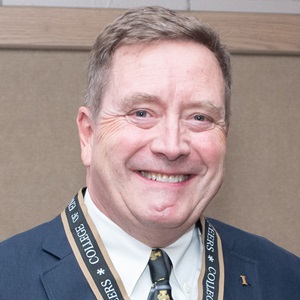
Byron Flynn graduated from the University of Idaho with a Bachelor of Science in Electrical Engineering in 1980 and has worked in the utility industry for nearly 39 years, working with Idaho Power from 1981 to 1999 and General Electric from 1999 to present.
He currently serves as technical solutions director for General Electric Renewable Energy’s Grid Solutions, a business that equips power utilities and industries worldwide to bring power reliably and efficiently from point of generation to the end consumer. Nearly 90% of the world’s electric energy is touched by a GE product or service.
He serves as a technology leader, supporting electric utilities across North America with designs and development of grid modernization solution architectures, roadmaps and business cases. This includes GE’s wide range of innovative products and solutions from traditional and renewable power resources across the transmission and distribution system to smart cities, industries and consumers.
He was GE’s lead architect in many industry award-winning projects, including the Irvine Smart Grid Demonstration Project at Southern California Edison, the Smart Grid, Smart City Project with Energy Australia (AusGrid), and the gridSMART Project at American Electric Power in Ohio.
He also designed the Automation, Protection and Control System Architecture for Consolidated Edison's substation in Lower Manhattan, which replaced the station destroyed in the Sept. 11, 2001, terrorist attack.
Byron was selected as part of an Experts Roundtable on Grid Modernization Technologies and State Policy Options for the National Governors Association in Washington D.C. He has worked with the SGIP, Smart Grid Interoperability Panel, and specifically with OpenFMB, Open Field Message Bus™, now a NAESB Standard, bringing the IoT and advanced interoperability to the power grid. He was also selected to present at the 2016 IEEE Innovative Smart Grid Technologies Plenary Session: Smart Grid Technology Vision at the 2018 IEEE PES & ISGT: Edge Computing for a More Adaptive and Manageable Grid. Over the last decade, he has published dozens of papers and delivered hundreds of presentations and taught multiple industry courses on substation and distribution automation, cybersecurity, personal privacy, distributed generation, communication networks and various other smart grid systems. Including recently, he is a co-author of “The Substation of the Future,” published in July/August 2019 IEEE Power & Energy and in October 2019 T&D World as part of an ongoing series “Charging Ahead.” He also is the lead inventor on a Smart Grid Patent: “Systems, Methods, And Apparatus for Maintaining Stable Conditions Within a Power Grid.”
He is a Registered Professional Engineer in Idaho, and a Senior Member of the Institute of Electrical and Electronics Engineers.
He was a longtime volunteer with Boy Scouts of America, serving as an Assistant Scoutmaster and Committee Chairman for a local Troop for many years and is very proud of his three sons, all Eagle Scouts. With the College of Engineering (COE), he has served as a member of the Electrical and Computer Engineering Advisory Board for over three years and an active Engineering Design EXPO judge. He is also currently part of the COE's Diversity Task Force and helped craft the college’s diversity plan. He and his wife Karen created the Strategic Initiatives Endowment for the College of Engineering to support programs such as the college’s Grand Challenge Scholars Program and the Dean's Endowment to Support Diversity and Inclusive Initiatives. They are also strong supporters of the new U of I Micron Student Center and the Vandal Scholarship Fund.
- B.S., Electrical Engineering, University of Idaho, 1980
- M.B.A., Boise State University, 1986
Lisa Grow
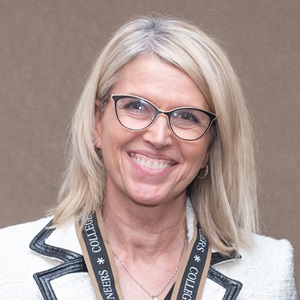
A 32-year Idaho Power veteran, Lisa Grow ’87 was promoted to President of Idaho Power in October 2019. She began her career in 1987 as the second female to be hired at the power utility and held many engineering positions before moving into management.
In 2005, Grow was named Vice President of Delivery Engineering and Operations, and she assumed the role of Vice President of Power Supply in 2009. In 2016, she was named Senior Vice President of Operations and Chief Operating Officer, where she oversaw the generation, transmission, and distribution operations, or as she likes to say, “My job is to keep the lights on and the customers happy.”
Grow is a leader in her field and involved in a number of industry groups, currently or previously serving on various committees and boards associated with the Western Electricity Coordinating Council, Northwest Power Pool, National Hydropower Association, Pacific Northwest Utilities Conference Committee, and the Department of Energy Electricity Advisory Committee.
Grow has presented at U of I’s Energy Executive Course (formerly UEC), an internationally-recognized training program for industry executives worldwide. She also serves on the U of I Foundation Board and is a past member of the advisory boards for the U of I College of Engineering and the Boise State College of Engineering.
She served on the board of the Idaho division of the American Heart Association and currently serves on the St. Luke's Health System Board of Directors. She is also a Hope Society Member of the Women's and Children's Alliance.
- B.S., Electrical Engineering, University of Idaho, 1987
Michael L. Olson
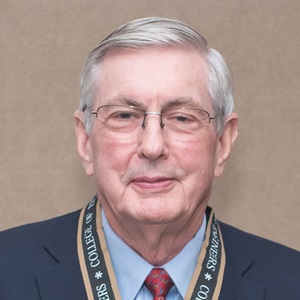
Michael L. Olson ’65, ’66 is a national and international leader in the development of wireless communications and global monitoring (GIS) with more than 35 years of experience.
Upon leaving the University of Idaho, Olson did post graduate work at Stanford University, which included a year (1968) of ionospheric research as part of the United States Antarctic Research Program (USARP) at Byrd Station, Antarctica. As a result of his contributions, an island off the coast of Antarctica bears his name.
Following post-graduate studies, Olson worked for the National Center for Atmospheric Research (NCAR) from 1972-1979, where he led development of prototype high-altitude (stratospheric) super-pressure balloons. The network of balloons carried a payload of radiosondes that were periodically released from 80,000 feet to measure temperature and humidity profiles of the atmosphere in the deep tropics. Real-time data was relayed through Geostationary Operational Environmental Satellite (GOES) network. The objective was to support the First GARP Global Experiment in the late 1970s that collected data globally for improving weather forecasting.
Between 1979 and 1993, Olson served as VP of Engineering in three startup companies pioneering satellite and cellular technologies for remote data monitoring and transmission; Synergetics International, Inc. (remote environmental monitoring with communication through the GOES UHF satellite bands), Equatorial Communications (data communications in C- and Ku- frequency bands with small-aperture, spread-spectrum, satellite data terminals) , and Cellular Data Inc. (narrow-band data over analog cellular networks).
In 1993, Olson joined Pactel Mobile, Inc. (subsequently, AirTouch Communications, Inc.) as a Managing Director, Research and Technology, for advanced mobile cellular technology including microcells and new radio technologies, particularly, Code Division Multiple Access (CDMA). Enhanced versions of CDMA are the foundational transmission technologies for modern mobile cellular networks.
From 1995 to 2001, as Managing Director (CTO) (AirTouch Satellite Services (a division of AirTouch Communications, Inc.) and Globalstar USA (a division of the multinational telecommunications conglomerate Vodaphone Group), Olson managed the transition from development through commercial operation of five Globalstar, Inc. satellite gateways. These five gateways (part of a global network) support voice and low-speed data services via handheld satellite phones primarily from remote-locations across North America and the Caribbean.
Starting in 2001, Olson was Managing Director, International Technology and Engineering for Vodafone Group R&D. His focus during this period was identifying the technological and social changes that have led the mobile cellular industry to the smart devices and services of today.
After retiring in 2006, Olson became more involved in disaster preparation and management as a volunteer report reviewer and editor on the Deepwater Horizon Study Group at University of California, Berkeley. This group collected and assembled a comprehensive report that combined risk and technical analyses from well drilling experts from around the world who sought to identify the contributing and root causes of the Gulf Coast Macondo well blowout in April 2010.
Subsequently, in 2012, he became involved in the Civilian Emergency Response Team activities in Contra Costa County, California, and received training in a variety of skills useful in helping civil authorities and local citizens before, during, and after disasters that stress the capabilities of local authorities.
Olson’s current interests involve online education with emphasis on systems thinking, data science, machine learning, artificial intelligence, risk management, and Big Data technologies.
An Idaho native, Olson continues to manage the family farm homestead properties near Plummer, Idaho, and additional farmland near Brookings, South Dakota.
- B.S., Electrical Engineering, University of Idaho, 1965
- M.S., Electrical Engineering, University of Idaho, 1966
2018
Timothy Arnold
View ProfileAicha Elshabini
View ProfileDennis Keiser
View ProfileSteve Miranda
View ProfileRobert White
View ProfileTimothy Arnold

Timothy D. Arnold is Vice President of Operations for Pershing Gold Corporation. He was previously Vice President and General Manager for Nevada Copper, General Moly, Coeur d'Alene Mines and Hecla Mining Company, and Chief Operating Officer for Geovic Mining Corp.
Arnold graduated in 1982 from the University of Idaho with a degree in mining engineering, and completed an Executive MBA certificate program from Northwestern University's Kellogg School of Management.
Arnold is a professional engineer in Nevada and Arizona. In 2016, he served as President of the Society for Mining, Metallurgy & Exploration.
Arnold has over 35 years of experience in open pit and underground hard rock mining, engineering and production, consulting and operations. He has held positions in mining companies ranging from laborer to contract miner, and from shift boss to chief operations officer. He has spent most his career either developing or operating mines.
- B.S., Mining Engineering, University of Idaho, 1982
- M.B.A., Northwestern University, 2000
Aicha Elshabini
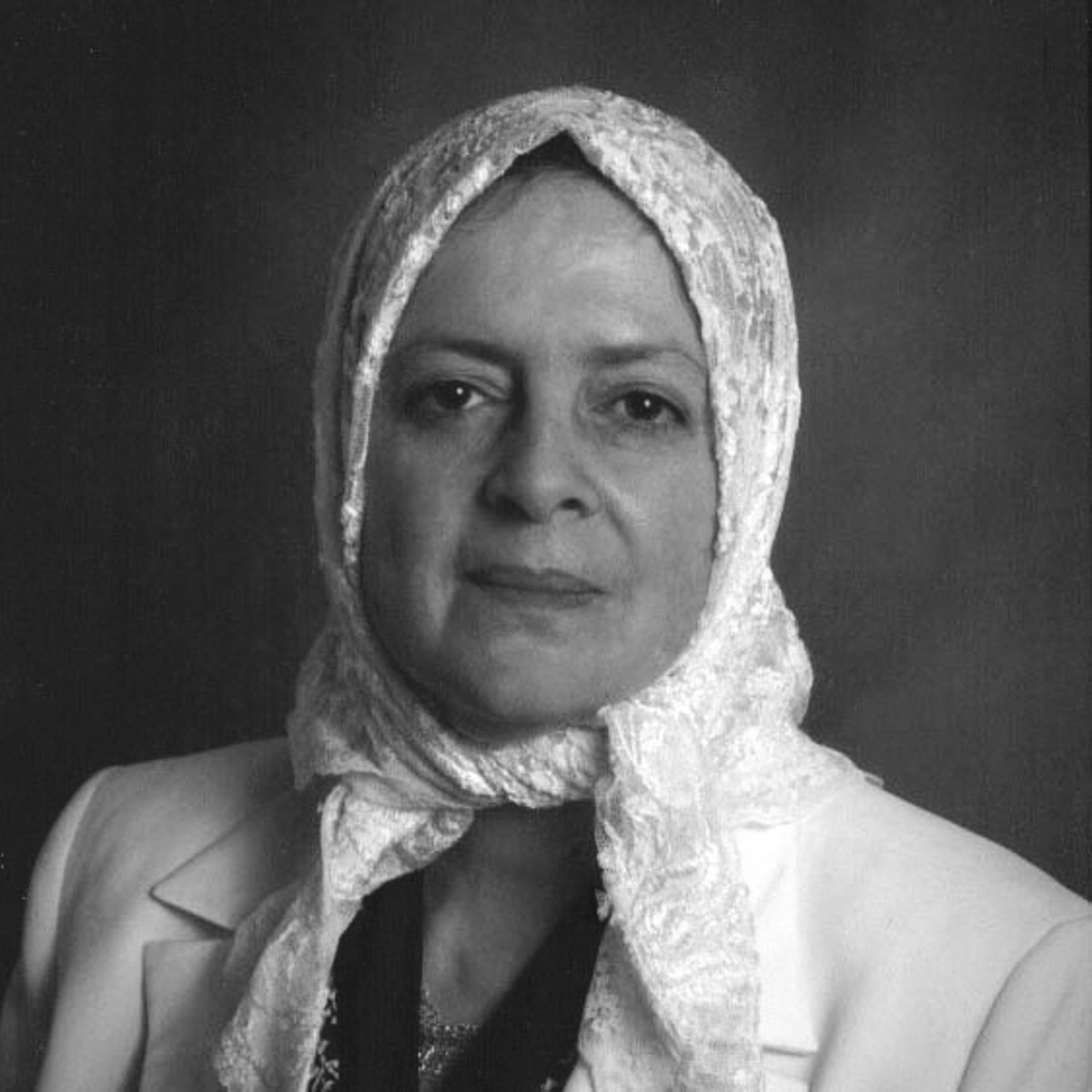
A native of Egypt, Aicha Elshabini was on the faculty at Virginia Polytechnic Institute and State University from 1979 through 1999, attaining the rank of Professor in 1988. She chaired the Electronics and Networks Committee from 1980 through 1999 and was Director of the Microelectronics Laboratories from 1990 to 1999.
Dr. Elshabini left Virginia Tech in 1999 to become Chair of the Electrical Engineering Department at the University of Arkansas. She held this position until joining the University of Idaho in 2006. Dr. Elshabini served as Dean of the College of Engineering at U of I from July of 2006 through 2007, when she resigned due to health circumstances. She holds the rank of professor emeritus at the University of Idaho.
Dr. Elshabini is a Fellow of the Institute of Electrical and Electronics Engineers (IEEE) and of the International Microelectronics Assembly and Packaging Society (IMAPS). She was the founding editor of IMAPS’ International Journal of Microcircuits and Electronic Packaging from 1991-2001. She is the only woman to receive three prestigious awards through IMAPS. She also received three teaching awards at Virginia Polytechnic Institute and was listed in Outstanding Young Women of America in 1981 and 1983.
- B.S.C., Communications and Electronics, Cairo University, Egypt, 1973
- M.S., Electrical Engineering, Toledo University, 1975
- Ph.D., Electrical and Computer Engineering, University of Colorado, Solid State Physics, 1979
Dennis Keiser
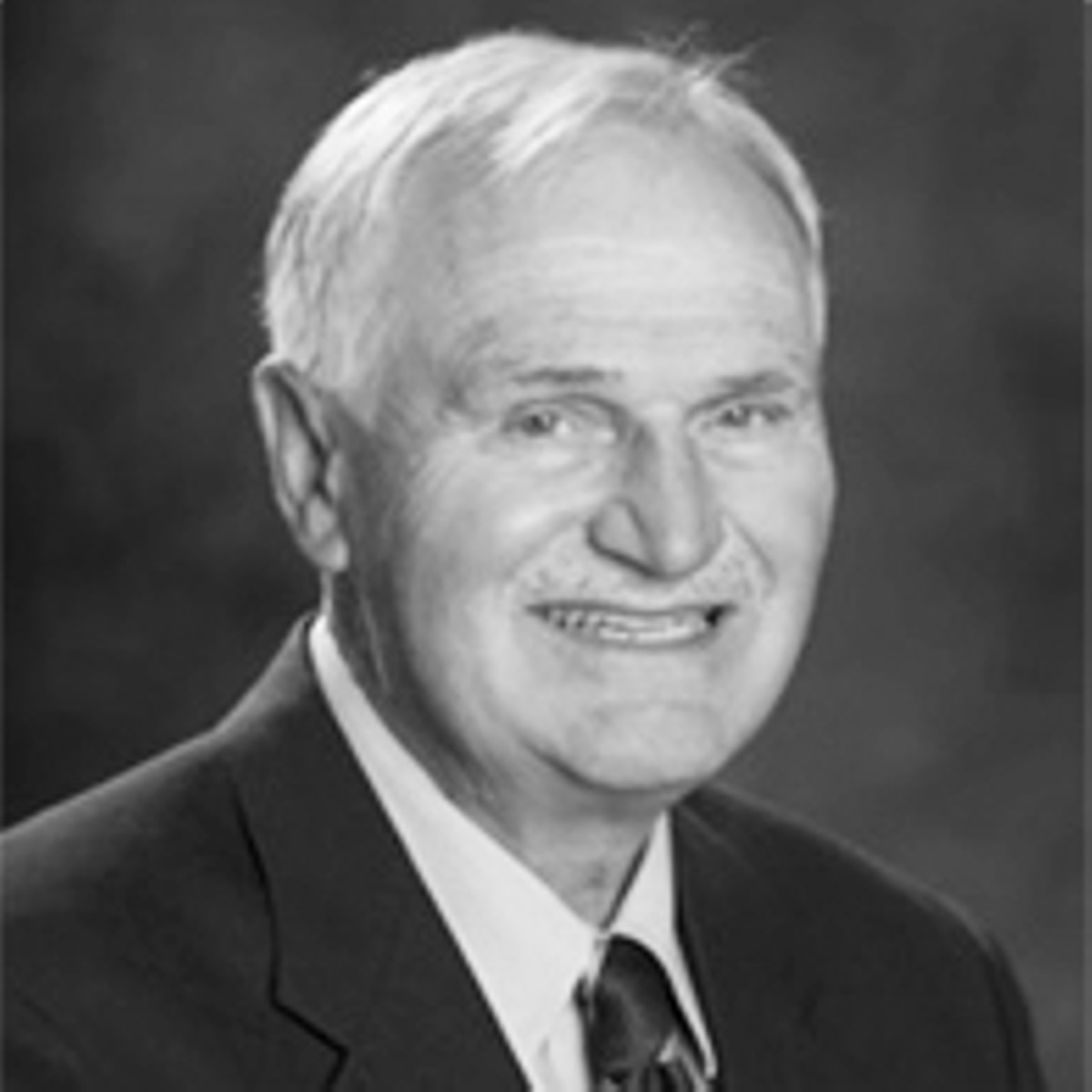
Dennis Keiser has over 40 years of experience in the energy sector, involving nuclear, fossil, and renewable energy options. Most of his experience is associated with the Idaho National Laboratory in Idaho Falls, as a contributing engineer, research and development manager, and executive manager of the Science and Technology Department.
Research on renewable energy options – solar, geothermal, biofuels, wind and hydrogen – comprised a large part of the activities of the INL Science and Technology Department, which consisted of over 600 scientists, engineers and technicians. Dr. Keiser was responsible for annual budgets of more than $150 million and for operation of essentially all non-nuclear research and development facilities.
Dr. Keiser spent over 7 years as President and CEO of Intrepid Technology & Resources, Inc. The mission of this company was building facilities to convert animal waste into various forms of energy. More recently, Dr. Keiser has been employed with the University of Idaho in Idaho Falls as a faculty member and research professor teaching an engineering management course and working with the Center for Advanced Energy Studies in the realm of converting animal waste into energy. Dr. Keiser has participated in lifecycle analysis studies on processing of dairy manure into renewable energy and co-products.
- B.S., Metallurgical Engineering, University of Idaho, 1966
- M.S., Metallurgical Engineering, University of Idaho, 1970
- Ph.D., Mining Engineering/Metallurgy, University of Idaho, 1975
Steve Miranda
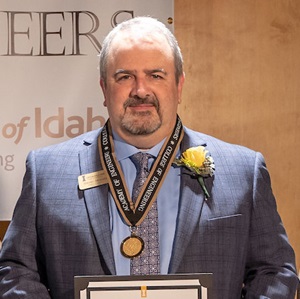
Steve Miranda has served as the head of engineering at The Kraft Heinz Company for 2 1/2 years. He also serves as the Director of Engineering, a position he has held since 2014. Miranda worked previously as the leader of the Global Manufacturing Taskforce for the H.J. Heinz Company and was Group Leader for about two years.
The Kraft Heinz Company is the third-largest food and beverage company in North America and the fifth-largest food and beverage company in the world, with eight brands over $1 billion. The company's iconic brands include Kraft, Heinz, ABC, Capri Sun, Classico, Jell-O, Kool-Aid, Lunchables, Maxwell House, Ore-Ida, Oscar Mayer, Philadelphia, Planters, Plasmon, Quero, Weight Watchers Smart Ones and Velveeta. The Kraft Heinz Company is dedicated to the sustainable health of our people, our planet and our company.
- B.S., Mechanical Engineering, University of Idaho, 1985
Kirk Sullivan
Deceased 2020
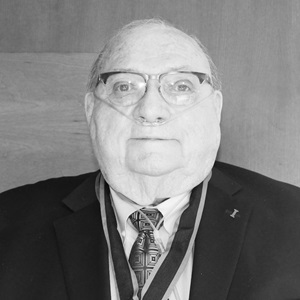
Kirk Sullivan is the founder and partner at Veritas Advisors, a philanthropic fundraising and political consulting firm in Boise, Idaho. Sullivan retired from the Boise Cascade Company in 1998 after 27 years with the company. He was the vice president of governmental and environmental affairs worldwide.
Sullivan worked for the FMC Corporation for 13 years as an engineer, technical superintendent and marketing manager.
He has served with many organizations and boards. He is a former chairman of the Idaho Republican Party. He currently serves as the president of the Ore-Ida Council of the Boy Scouts of America; as a member of the board of trustees for the Public Employees Retirement System of Idaho; on the board of trustees for Saint Alphonsus Regional Medical Center; and on the Governors State Science and Technology advisory council.
The Saint Alphonsus Foundation recognized Sullivan with its 2007 Distinguished Citizen Award. He previously served U of I on the Foundation, College of Engineering Advisory Board, the Ag Biotech Committee, and as chair of the universities’ centennial campaign. He received an honorary degree in 1990 and a Service Award in 1999.
Kirk retired in 1994 from his post as Vice President of Governmental and Environmental Affairs at Boise Cascade Company. He is considered to have been among the leading timber lobbyists in Congress and a powerful figure in Idaho resource issues. Prior to his retirement, Sullivan was positioning himself for the presidency at the U of I. He was a finalist in the U of I presidential search that hired Bob Hoover.
- B.S., Chemistry, Clemson University, 1957
- M.S., Chemistry, Clemson University, 1964
- Ph.D., Chemistry, Clemson University, 1966
Robert White
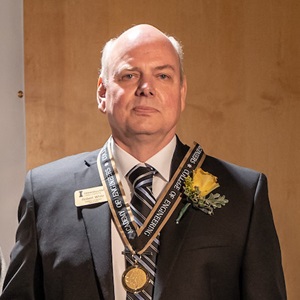
Bob White spent most of his childhood in the forests and lakes of North Idaho. He graduated from Clark Fork High School in 1977 and immediately enrolled at the University of Idaho. White earned a bachelor’s in computer science from the College of Engineering with an emphasis in data processing. During those early years, a computer science degree at U of I covered a wide variety of topics, including accounting, business, economics, mathematics, engineering and all the programming the college could offer.
After graduation, White worked for Encoder Products Company (EPC) in Sandpoint, Idaho, what is now the largest privately owned encoder manufacturer in North America.
For White, much of the 80s at EPC was spent in the materials resource planning world, moving all manual data and activities onto computer systems and making sure the user base was always involved and well-trained. During this part of his career, White saw that a company would only be able to benefit from its data systems if those systems delivered the right information at the right time and to the right place. White followed a less traditional approach by building data systems based on software that would work together and were seamless from the users’ perspective.
In the 90s, it became evident that EPC needed a system that would transfer a highly technical product with precise engineering specifications to a format that order entry personnel would be able to configure, price and place orders in real time. While there was not a good solution at the time, White tracked down a European company that had developed a product configurator that would seamlessly integrate into a material requirements planning system. He would eventually combine the two systems at EPC to reduce overall order entry operator training time from 12 to less than two months and decrease overall order entry mistakes by 50 percent. The foundation of that same platform is still being used at the company today.
Fast forward to 2000, when White recognized EPC needed a customer relationship management system that would deliver a high level of support. Again, White worked through a variety of companies to incorporate multiple software systems. Those systems seamlessly integrate deliver a cutting edge platform that EPC still uses to meet customer inquiries, sales orders and an array of other customer facing contacts.
White has written code for early customer relationship management systems, developed various databases, designed numerous critical outputs for EPC and lately data mining is high on his radar. Through strategic deployment of effective software, White enabled EPC to take the built/ship process from 4 to 6 weeks down to 3 to 4 business days.
White started with EPC as a programmer and IT manager, and has worn several hats through the years. He has been a Material Acquisition Process team member, Americas Division team member, a Corporate Officer and Chief Financial Officer. Currently, White spends time implementing a Quality Management System, Business Process Management System and developing a Strategic Planning Process. High on his list of priorities is making sure that the next generations of leaders at EPC are being adequately prepared to step up to the challenges that lie ahead. In January of 2018, White celebrated 36 years of continuous employment with EPC.
- B.S., Computer Science, University of Idaho, 1982
2017
James R. Arnold
View ProfileMark L. Bathrick
View ProfileCandis Claiborn
View ProfileD. Mark Durcan
View ProfileThomas J. Mueller
View ProfileYogendra Sarin
View ProfilePatrick R. Taylor
View ProfileJames R. Arnold
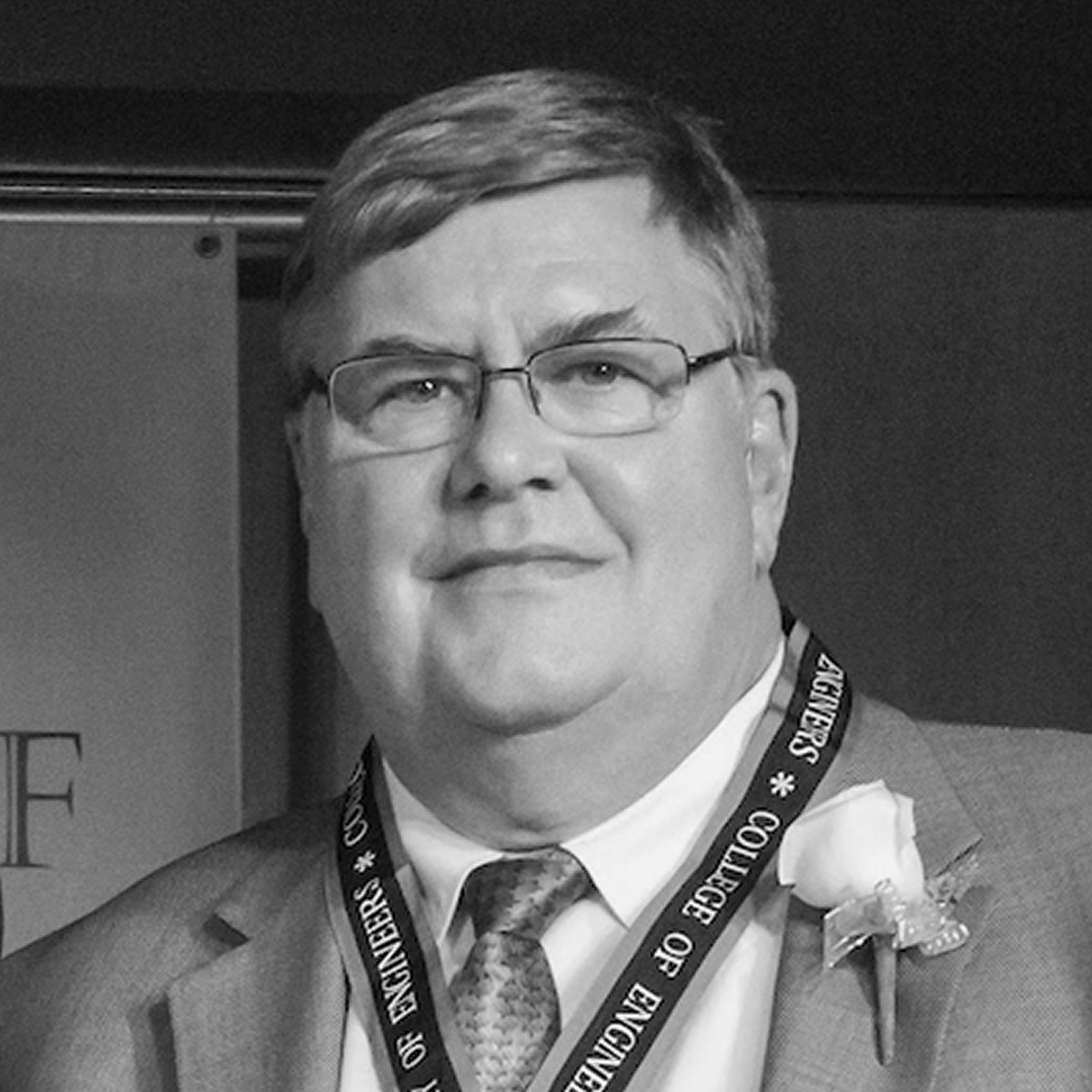
Jim Arnold has always had an interest in metals but found his calling in Metallurgical Engineering while at the University of Idaho. Before his senior year, Jim took a summer job at the historic Climax mine in Colorado. Although he’d focused his studies on physical metallurgy up to that point, the exposure to mining quickly entered his blood, surprising since most of his duties consisted of shoveling ore onto conveyors. But once the love affair with mining was there it never waned.
Jim’s first couple years out of school were spent in Montana before moving to the great Missouri Lead Belt. There he continued his operations experience as Chief Metallurgist and Master Mechanic. In Missouri he met and married his wife of 38 years, Laurie. He also studied nights and weekends at the University of Missouri – Rolla and finished his M.S. in Engineering Management and had two children, Julia and Jim.
After the lead market collapsed Jim moved to gold and worked in operating roles, mostly in Nevada. While there he headed the Nevada Mining Association’s Environmental Committee and wrote legislation that not only governs Nevada, but has been copied by other states and even other nations. Jim also served as Chairman of the Nevada Mining Association.
One of his major accomplishments in Nevada was heading the team that designed and built the Gold Field’s Chimney Creek mill. The mill was noted internationally for engineering innovation and advanced the mineral processing arts in grinding, transport phenomenon, carbon handling and gold refining. Chimney Creek was the world’s lowest cost gold producer from the day it started until purchased by Newmont.
After Nevada, Jim moved to consulting and ran Knight Piesold, the largest mining-oriented engineering firm in the country. While he loved his time at Knight Piesold he felt he wasn’t ready to leave the actual mines and moved on to hold executive positions for several large mining corporations. One was VP Colorado Operations for Climax Molybdenum, the same Climax where he had started his mining career shoveling conveyors. His final operating role was as COO for Romarco starting the largest ever gold mine west of the Mississippi.
Jim has been honored by the Society of Mining Engineers multiple times with the Rahn Award for his contributions to Professional Engineering registration, the Richards Award, mineral processing’s paramount award, and he served in 2007 as the President of SME’s 14,000 members worldwide. He was named a Distinguished Member of SME and an Honorary Member of AIME, the governing organization.
Off work Jim enjoys spending time with his family, especially his two granddaughters. He has coached softball, baseball and wrestling, taking three girls softball teams to the state finals and he loves to hunt, fish and woodwork.
- B.S., Metallurgical Engineering, University of Idaho, 1975
- M.S., Engineering Management, University of Missouri-Rolla, 1980
Mark L. Bathrick
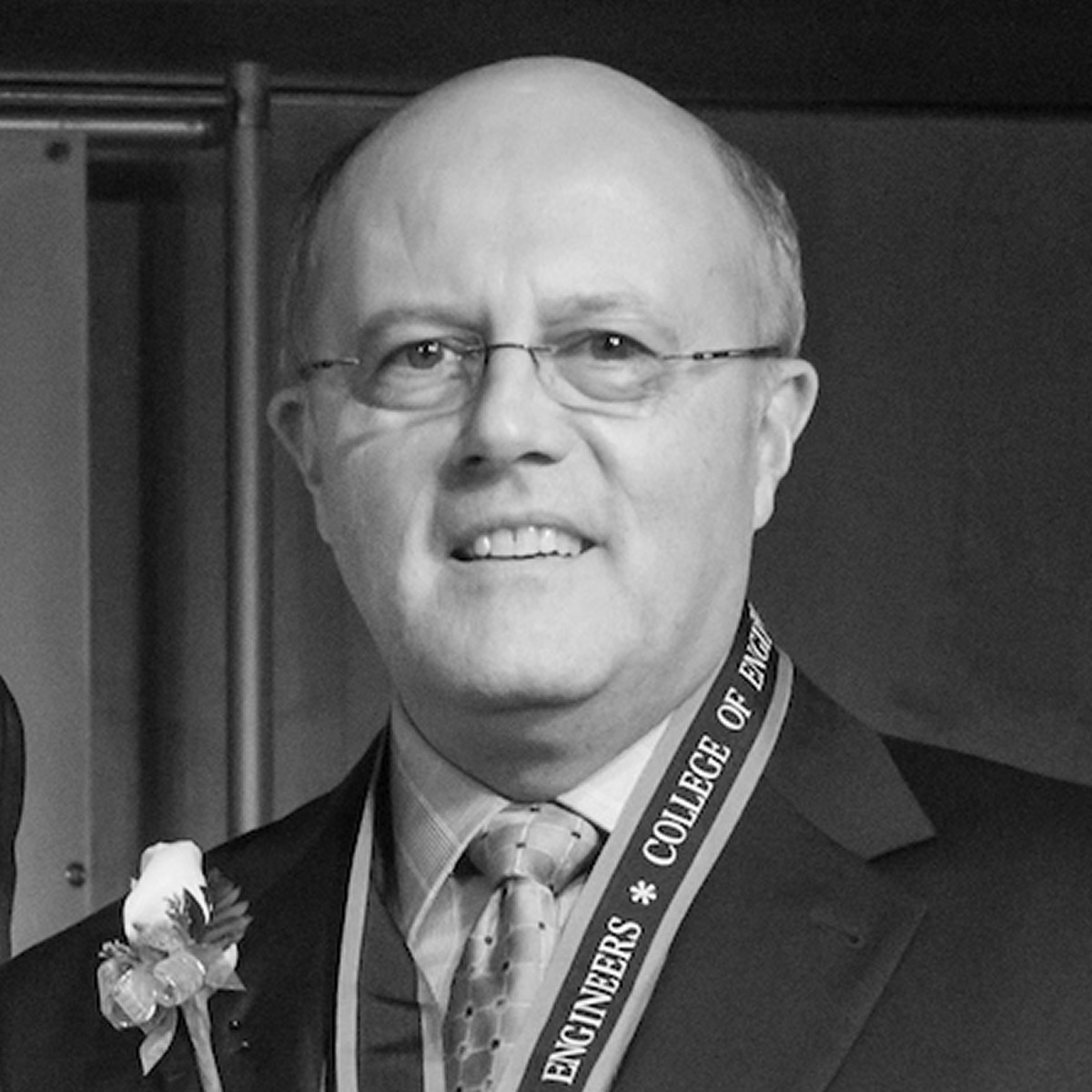
Captain Mark L Bathrick, USN (Ret) graduated from the United States Naval Academy, earning a Bachelor of Science in Aerospace Engineering and receiving his commission as an Ensign in the U.S. Navy. He immediately reported to flight school, where he was recognized with numerous academic and flight performance awards. After receiving his Wings of Gold as a Naval Aviator, Mark was selected to fly the Navy’s top of the line fighter, the F-14A TOMCAT.
In his first of many extended deployments aboard aircraft carriers, Mark participated in opposed strike and reconnaissance operations over Lebanon in support of the Multi-National Peacekeeping Force. This gave him an opportunity to apply his engineering background to a practical application, developing guidance to help pilots avoid image distorting shock waves during high speed photo reconnaissance missions. Returning from deployment, Mark was selected to attend the prestigious TOPGUN Navy Fighter Weapons School. Mark was later selected as the Navy’s top test pilot school candidate and reported to the prestigious Empire Test Pilots School (ETPS) in England for graduate engineering study and test pilot training. Following graduation, Mark served as an Experimental Test Pilot at the Patuxent River Naval Air Test Center where he conducted numerous high risk “first-flight” tests in areas of flying qualities, supersonic performance, flutter, and weapons/systems integration. For this work, Mark was accepted as a Member of the Society of Experimental Test Pilots (SETP). In his follow-on sea tour, he was instrumental in the successful maiden deployment of the F-14B, an aircraft he helped field as a test pilot. Subsequently, Mark served in the Pentagon on the Chief of Naval Operations and Joint Staff, receiving subspecialty designations in financial management and test and evaluation.
Mark’s Navy executive experience included command of a carrier-based F-14 squadron, Chief Test Pilot and commander of a Navy flight test squadron, and commander of the Naval Air Engineering Station at Lakehurst, NJ. Through his visionary leadership, the organizations he stewarded received numerous service level and national awards including the Commander-in-Chief Installation Excellence Award, awarded to the top installation of each service, worldwide.
Following retirement as a Navy Captain, Mark was appointed to the federal Senior Executive Service (SES) as the Director of the Office of Aviation Services with the U.S. Department of the Interior (DOI). Here he directs a nationwide aviation services business in support of managing over 500 million acres of public land across the United States and its territories (about 1 in every 5 acres). Mark oversees a headquarters office in Boise Idaho as well as regional offices in Boise, Anchorage Alaska, and Atlanta Georgia. Mark is the senior aviation official in DOI and is responsible for the safe operation of over 1,200 contracted and government-owned manned and unmanned aircraft. Mark has over 25 years’ experience in unmanned aircraft systems (UAS) and has been called on to consult with the highest levels of government, industry, and academia (including the University of Idaho) on UAS technologies and policy. Under his leadership DOI has become a leader in the domestic use and safe integration of UAS.
Mark has logged over 3,700 flight hours and more than 800 arrested landings aboard 10 different aircraft carriers. He has flown over 40 different fixed wing, rotary wing, lighter-than-air, and unmanned aircraft, having qualified as pilot-in command in 12 different models. Mark is a Life Member of the Naval Academy Engineering Honor Society and National Engineering Honor Society, Tau Beta Pi. In addition to his engineering degree, he earned a Master of Business Administration. Mark is an avid supporter of the Idaho entrepreneurial ecosystem as a Board Member of the Boise Angel Alliance and Advisory Board Member of the Idaho Virtual Reality Council. Mark currently resides in Meridian, Idaho, with his wife Marybeth.
- B.S. Aerospace Engineering, U.S. Naval Academy, 1980
- TOPGUN Navy Fighter Weapons School, 1984
- Empire Test Pilot School, 1987
- M.B.A., Boise State University, 2014
Candis Claiborn
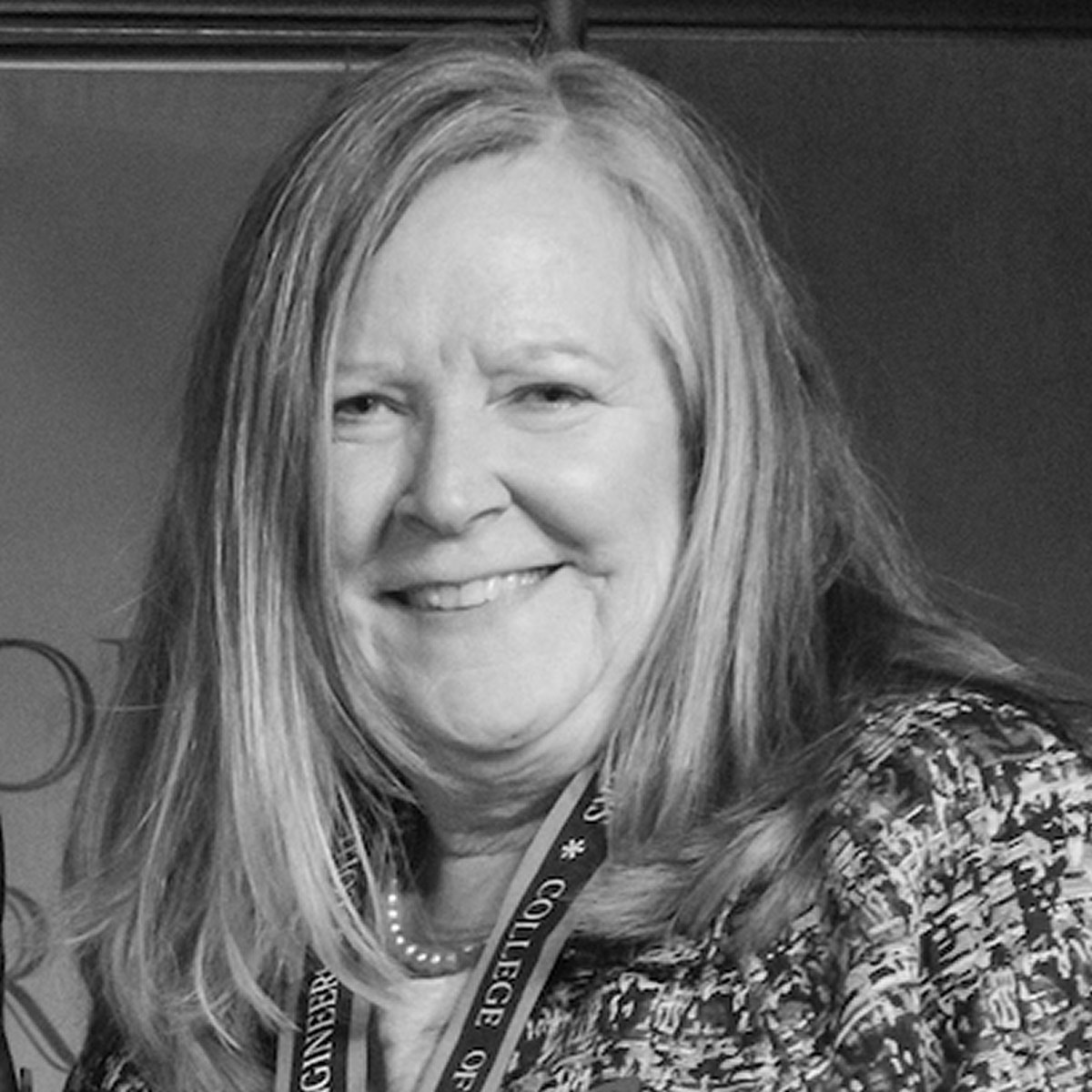
Candis Claiborn graduated from the University of Idaho in 1980 with her bachelor’s degree in chemical engineering. She obtained her Ph.D. in chemical engineering in 1991 from North Carolina State University. She is currently a Professor in the Department of Civil and Environmental Engineering, and Dean Emeritus of the Voiland College of Engineering and Architecture, at Washington State University.
Claiborn became Dean of the Voiland College of Engineering and Architecture in 2006. Prior to that, she served as interim dean, and also as associate dean for research and graduate education in the Voiland College. In August of 2016, after serving 14 years in academic leadership roles, she returned to her faculty position in the Department of Civil and Environmental Engineering.
After graduation from the U of I, Claiborn worked in the petroleum industry, first for Chevron Corporation, Western Region Production, in San Francisco, and then for Atlantic Richfield Corporation Cherry Point refinery in Ferndale, WA. She later left industry to pursue an advanced degree at North Carolina State University. She joined the faculty at Washington State University in 1991.
Claiborn is an expert in environmental engineering, specifically air quality, air pollution, and atmospheric chemistry. A member of the WSU Laboratory for Atmospheric Research, her research is in chemical characterization, source apportionment, emissions, and health effects of atmospheric aerosols. She has worked with public health scientists to examine the health effects associated with exposure to particulate air pollution in several cities in Washington State, and measured emission factors of organic carbon species such as PAHs, methoxyphenols, and levoglucosan, from field burning operations.
As Dean of the Voiland College of Engineering and Architecture at WSU, Claiborn focused on strategic priorities, performance metrics, and fundraising. After multiple years of budget cuts during the recession, during which enrollments and performance metrics nevertheless continued to increase, the college received state funding to grow engineering and computer science enrollments. Under her leadership, from the period of 2009 – 2014, undergraduate enrollment in the Voiland College increased by 85%; PhD enrollment grew by 90%; faculty research productivity doubled; and new invention disclosures roughly doubled every year. The Voiland College also opened engineering programs in Bremerton and in Everett to serve place-bound students as well as area industry; and modernized facilities, including adding a new research building on the Pullman campus in 2015, the Frank Innovation Zone “maker space” for students in 2015, and a new engineering building in Bremerton that was completed in 2017. She also raised other funds for the college and university, leading a $3.75 million, NSF ADVANCE program aimed at increasing representation and advancement of faculty women in science, technology, engineering, and mathematics disciplines. The WSU ADVANCE program was responsible for the development of new strategies for faculty recruitment, retention, and advancement, many of which were later adopted by WSU when the grant matured. She oversaw numerous other initiatives aimed at recruitment and retention of students, including women and underrepresented minorities, in engineering and computer science. Claiborn also led the successful completion of a $130 million fundraising campaign for the Voiland College.
Claiborn is author or co-author on 61 publications, book chapters, and reports; she has given 22 invited presentations or lectures; and along with her students, given 96 presentations at regional or national/international scientific conferences. There are over 2200 citations of Claiborn’s publications, according to Google Scholar.
Claiborn currently serves on the Executive Advisory Board for the University of Houston Center for Advancing UH Faculty Success, as well as the advisory board for the University of Idaho Department of Chemical and Materials Engineering. She is a member of several professional societies, including the American Society for Engineering Education; the American Association for the Advancement of Science; the Air and Waste Management Association; and the American Association for Aerosol Research. Her awards include Outstanding Teaching Faculty in Civil Engineering; the Leon Luck Faculty Award for the Most Effective Professor in Civil and Environmental Engineering; the Richard Crain Faculty Award for Distinction in Ethics Teaching; WSU Woman of Distinction Award; and the CBE Distinguished Alumni award from the Department of Chemical and Biomolecular Engineering at North Carolina State University.
In her spare time, Claiborn and her husband enjoy working in their garden and riding their horses on their “own little Idaho” ranch outside of Moscow.
- B.S., Chemical Engineering, University of Idaho, 1980
- Ph.D., Chemical Engineering, North Carolina State University, 1991
D. Mark Durcan
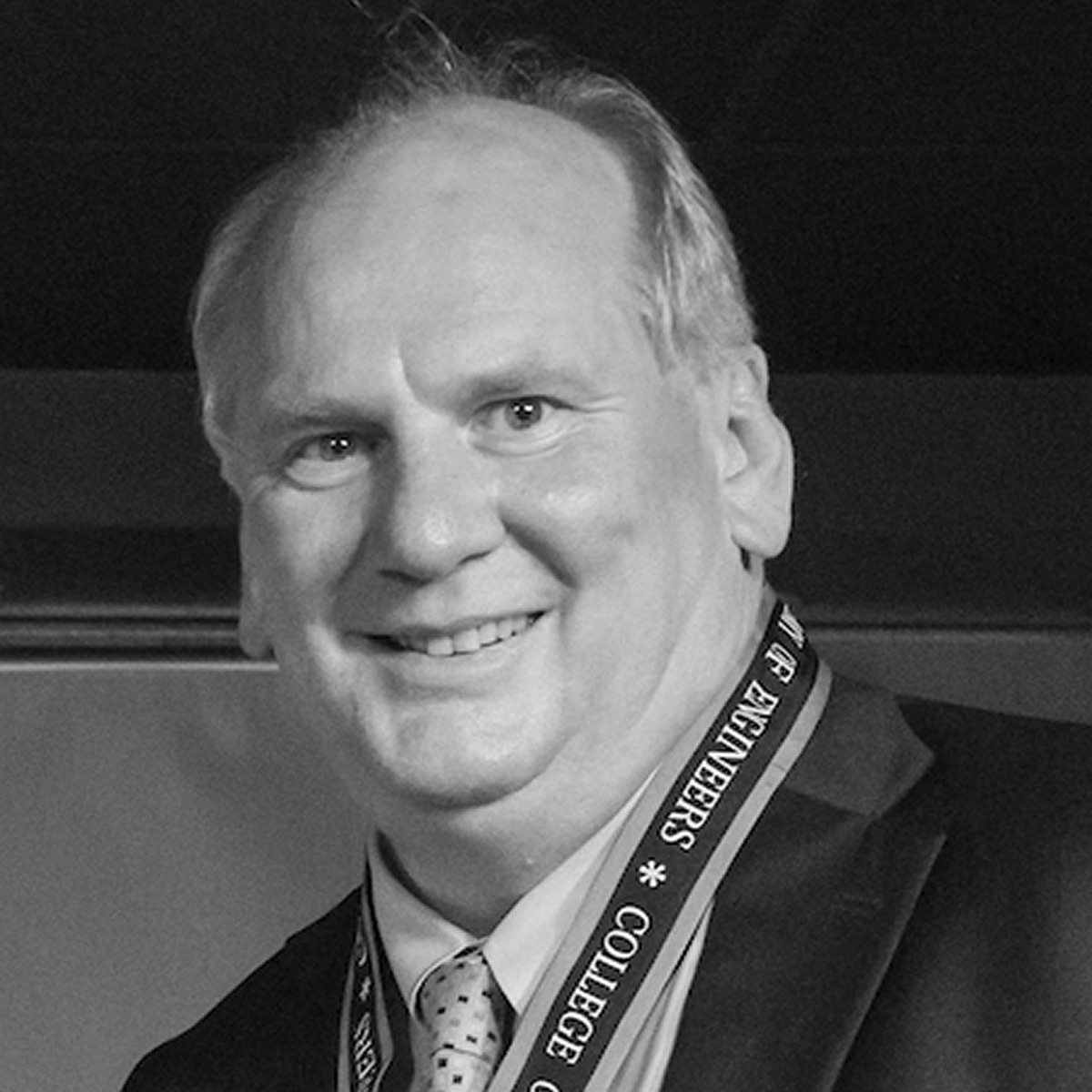
Mark Durcan is a seasoned business executive with over 32 years of experience in the semiconductor industry. As Micron Technology CEO, he managed a global enterprise with annual revenue run rate of approximately $20B and over 30,000 employees. During his roughly 5-year tenure as CEO revenues more than doubled, and market capitalization and share price more than tripled. He has extensive experience building new technology and product roadmaps and teams, and in operating a large international business. Mark has been the key driver in the formation and operation of numerous international technology partnerships, joint ventures, and manufacturing companies. He has extensive domestic and international mergers and acquisitions experience, having acquired multiple large international companies. He has had significant corporate financing experience and investment analyst interaction and exposure. He has many significant domestic and international government relationships. He holds approximately 100 U.S. and overseas patents.
In his over 32 years at Micron Mark not only served as Chief Executive Officer but also as President and Chief Operating Officer, Chief Technical Officer, Vice President of R&D and in engineering and engineering manager roles.
He is also a current member of the boards of St. Luke’s Medical System in Idaho and the Semiconductor Industry Association. In the past has served as Chairman of the Micron Foundation and been a member of the Idaho State Governor’s Technology Advisory Board.
Mark is the recipient of several prestigious awards, notably for accomplishments and excellence in Environmental, Health & Safety (EHS) and Sustainability. In 2015 he received the Inoue award for outstanding achievement in EHS by SEMI -- the global industry association serving the manufacturing supply chain for the micro- and nano-electronics industries. This November he will receive the Semiconductor Industry Association Noyce Award for contributions to the U.S. semiconductor industry. This is the semiconductor industry’s highest award, and is presented annually to one recipient. Previous recipients include Jack Kilby, inventor or the integrated circuit, and Gordon Moore, founder of Intel and the first to describe Moore’s Law.
Originally born in London U.K. Mark is a Naturalized US. Citizen. He earned his Bachelors and Masters of Science degrees in Chemical Engineering from Rice University. He is married, has three children ages 10, 14, and 15 and enjoys outdoor sports and gardening.
- B.S., Chemical Engineering, Rice University, 1983
- M.S., Chemical Engineering, Rice University, 1984
Bryant Lemon
Deceased
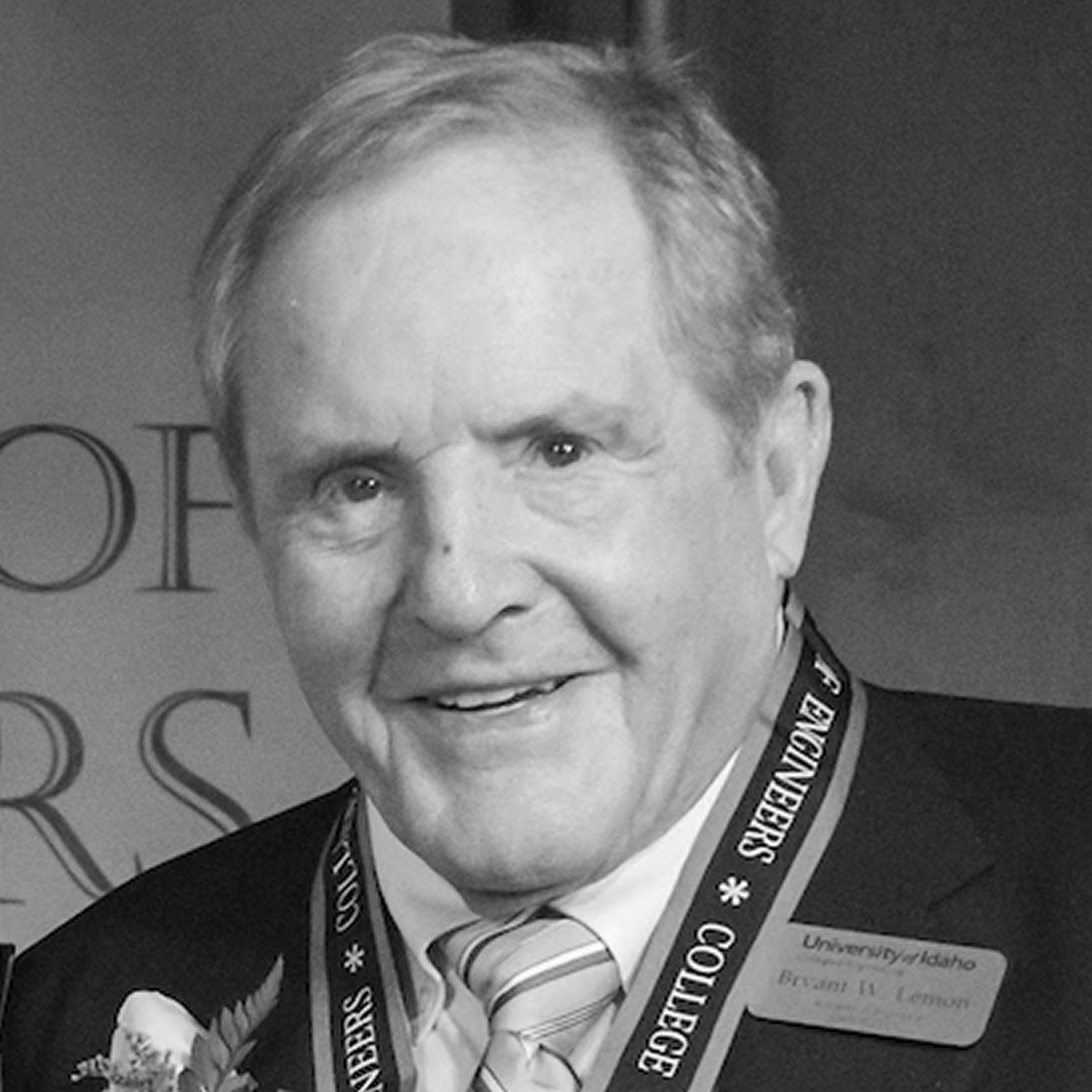
Bryant Lemon graduated from Boise High in 1953 and immediately entered Boise Junior College on a football scholarship, where he played two years. In 1955 he graduated with an Associate of Science degree and entered the University of Idaho’s Civil Engineering program. Upon graduation from the U of I he worked shortly in design with the Highway Dept. At that time President Eisenhower invited him to serve in the Armed Services and he spent two years in the U.S. Navy Seabees, building projects in Guam, Okinawa and in Laos.
Upon discharge Lemon entered George Washington University in Washington D.C. and earned a Master’s Degree in Engineering Administration. He wrote his Thesis on Critical Path Scheduling in construction. The Critical Path Scheduling Method, utilizing computer tracking, was a new technology in 1960. In fact computers, themselves, were a new thing in construction in 1960.
In 1962 Lemon joined the construction firm of Morrison Knudsen. His first field assignment with M-K was on two concrete dams on the Pit River in Northern California. At that time M-K landed the Launch Complex 39 Project at Cape Kennedy, Florida. Lemon transferred to the project to initialize the Critical Path Scheduling program specified by NASA for the Project. President John Kennedy had promised the U.S we’d put a man on the moon within 10 years. Tight scheduling of the construction was of ultra-high importance.
In 1965 Lemon took a position as Project Engineer and eventually Project Manager with the George A. Fuller Co. of New York for construction of Launch Complex 39, Pad B, which was the Pad at Cape Kennedy that launched the rocket putting Neil Armstrong on the moon.
When Launch Pad B was finished Lemon joined the Design-Build team to build the National Accelerator Laboratory in Batavia, Illinois. This 200BeV Proton Accelerator, later re-named “Fermi Lab”, was situated 50 miles west of Chicago. It consisted of a Linear Accelerator (LINAC), a Booster Accelerator and a one mile diameter Main Accelerator. After the proton beam was accelerated to nearly the speed of light, it was guided off to Experimental Areas where its increased velocity and mass was used to knock sub-atomic particles out of targets. One particle the physicists wanted to find was the “quark”, a supposedly anti-gravitational particle. Unfortunately those that were discovered had an extremely short half-life and, so far, haven’t been harnessed for anti-gravitational benefit.
In 1973 Lemon went to Fuller’s main offices in New York. Soon he became Project Construction Manager for the New York Giants Football Stadium at the Meadowlands in East Rutherford, NJ. This major complex, located within 8 mi. of downtown Manhattan had steel pile foundations and was structural steel and precast. It included all mechanical, electrical and architectural systems, playing field, seats, landscaping, walkways, lighting, concessions, electronic scoreboards and graphics. A notable engineering event happened at half-time during the opening game against the Dallas Cowboys. 80,000 beer drinking fans hit the lavatories all at once. The event, later known as the “Super-Flush”, resulted in several hundred toilets and urinals being repeatedly flushed simultaneously. The Stadium’s big water supply booster pumps kicked on and much of the debris, rocks, sand, and asphalt chunks lying in Northern New Jersey’s water systems were washed into the Stadium’s systems. The grit clogged the flushing mechanisms in all the fixtures and they hung open in the “on” condition. It wasn’t for several days and the toils of many, many plumbers that things were restored to normal.
In another unrelated event, the Teamster’s Boss, Jimmy Hoffa, came up missing and no one could find him. A few years later a story broke in the news that Jimmy Hoffa was buried under the end zone at Giants Stadium. News-people searched out Lemon in New Mexico. Lemon informed them that the base under the artificial turf is asphalt and it is improbable that anyone dug through that and buried Hoffa there.
In 1980 Lemon joined the Rust Engineering Co. of Birmingham, AL. Soon he became Project Manager for the first of several semiconductor plants built for Intel Corporation in New Mexico and elsewhere. Intel was just an infant in the computer chip industry at the time but they were very successful. They grew into one of the largest semiconductor manufacturers in the world. Lemon managed many of the projects they built in expanding their manufacturing capabilities. In 1990 Lemon took a risk and founded Brycon Corporation. He was successful in landing many semiconductor construction projects and other projects in the Southwestern U.S. Today Brycon is a leading contractor in the area having upwards of 1,000 employees. Presently the company is managed by Lemon’s son and a group of talented managers. Lemon serves as C.E.O.
Lemon credits his time at the University of Idaho as a major contributor to his formative years giving him the judgment and knowledge needed for success. He has also learned that most accomplishments in this world result from the cooperation of people and that people skills are of the utmost importance. Without a doubt his great wife and family have been major contributors to an accomplished career.
- B.S., Civil Engineering, University of Idaho, 1958
- M.S., Engineering Administration, George Washington University, 1961
Thomas J. Mueller
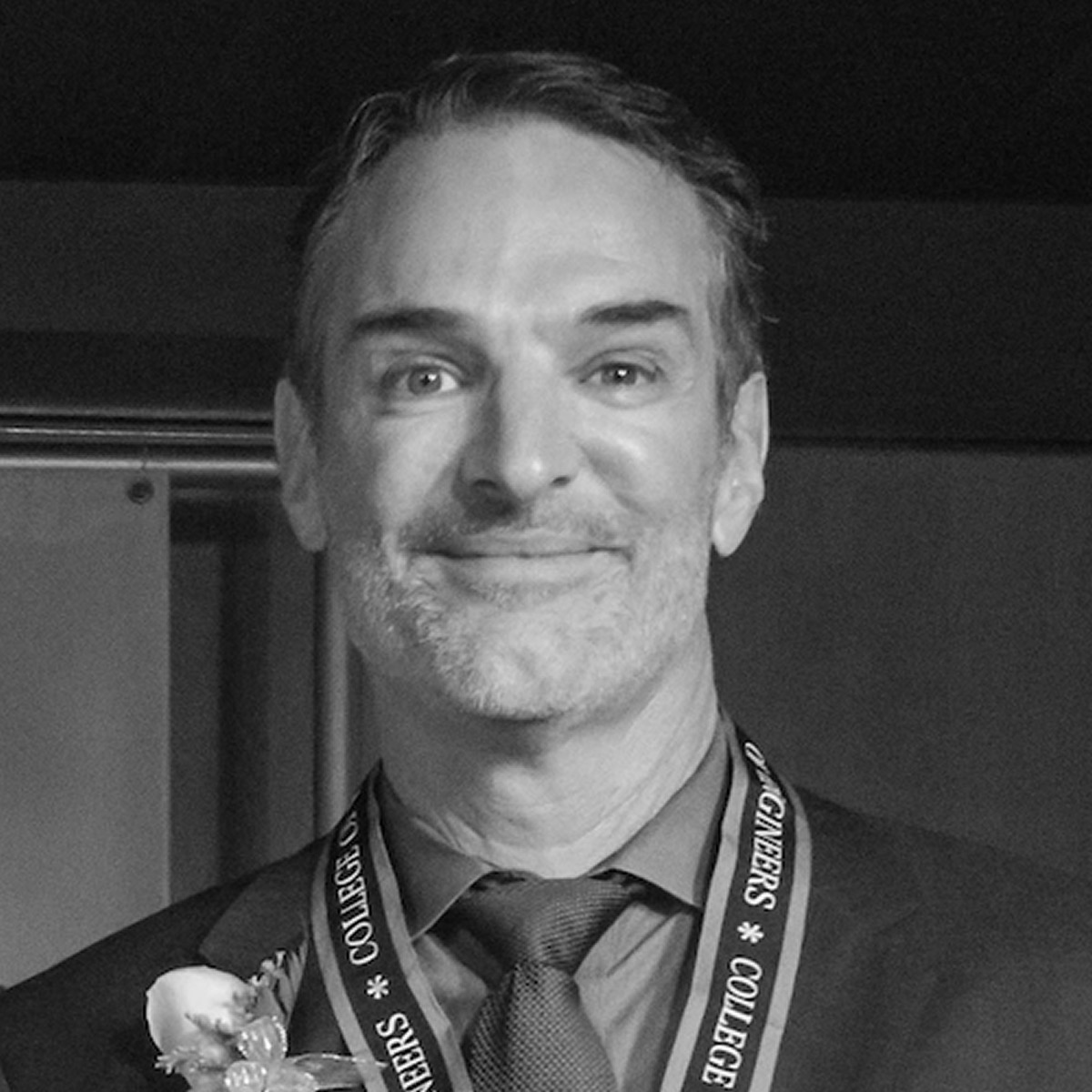
Tom Mueller, Propulsion Chief Technology officer at SpaceX, has 30 years of propulsion development experience and is one of the world's foremost rocket engine designers. As one of SpaceX’s founding members, he is responsible for building and managing SpaceX’s propulsion development group which develops propulsion systems and engines for both the Falcon launch vehicles and the Dragon spacecraft. Prior to joining SpaceX, Tom spent 15 years at TRW where he managed the Propulsion and Combustion Products department.
At SpaceX, Tom has led development of the Merlin rocket engine, the highest-performing US-made hydrocarbon engine ever developed and the first American hydrocarbon booster engine built in 40 years. More recently, Tom has focused on development and flight operations of the Merlin 1D engine, a 190,000 pound thrust engine that improves the performance and reliability of the Falcon 9, and has the highest thrust to weight ratio of any rocket booster engine. Tom is also currently involved in development of new propulsion systems, including the next generation Raptor full flow staged combustion engine and Mars systems to further improve the reliability and reduce the cost of access to space, and eventually enable human life to be interplanetary.
Tom has a Master of Science in mechanical engineering from Loyola Marymount University (1992) and a Bachelor of Science in mechanical engineering from the University of Idaho (1985). He has received many awards, including an Honorary Doctorate degree from LMU, and the TRW Chairman's Award, the company's most prestigious award for technical achievement. He holds several US patents in propulsion technology.
- B.S., Mechanical Engineering, University of Idaho, 1985
- M.S., Mechanical Engineering, Loyola Marymount University, 1992
Yogendra Sarin
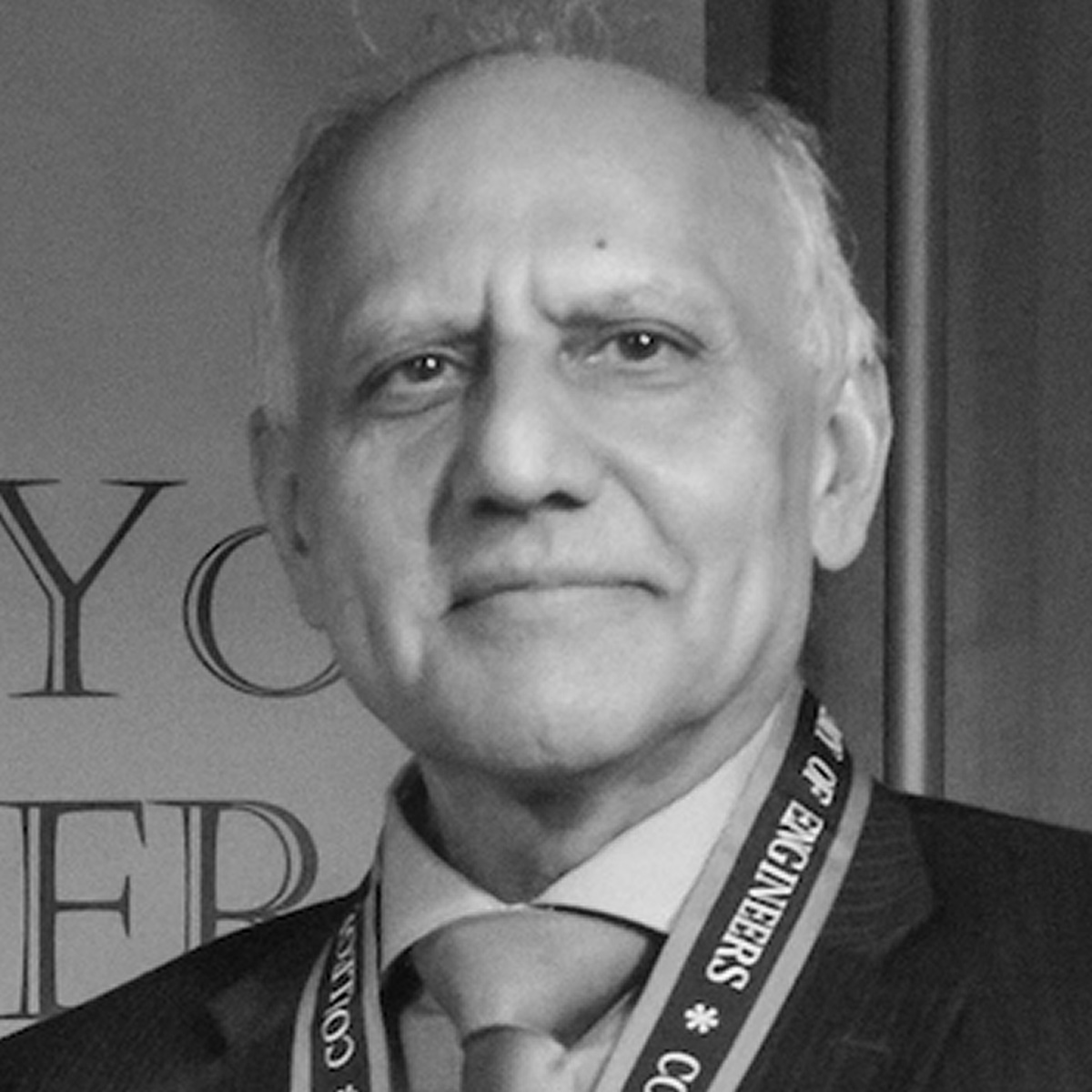
Yogi Sarin is the Founder and Chief Executive Officer of Petron Scientech, Inc., Princeton, New Jersey. Sarin has more than 35 years of experience in the global chemical industry. He holds a M.S. in Chemical Engineering from the University of Idaho and a post-graduate degree in Petrochemical Engineering from ENI in Milan, Italy.
Petron Scientech Inc. develops and licenses the chemical technologies for converting renewable Ethanol, into bioEthylene, bioEthylene Oxide, bioGlycols, bioPolyethylene, and other chemicals used in a wide range of day-to-day renewable plastics. Its innovations have resulted in Petron establishing a unique portfolio of intellectual property. Petron's patented technology reduces overall energy consumption, saving plants millions of dollars in operating and equipment costs. Its technology has been independently verified to use less electricity, generate less waste, use less Ethanol, and to be safer than alternative approaches. 75% of the world's standalone Ethanol-to-Ethylene plants run on Petron processes making Petron Scientech Inc. a pioneer and leader in its field.
As founder and CEO Sarin has extensive hands-on global experience in sustainable/renewable technology development and project execution. He has personally been involved with various projects, governments, cultures and businesses in India, China, Russia, Brazil, Mexico, Europe and the US. He has been involved from concept to commissioning, including design, development and operations of many Ethylene Oxide, Ethylene Glycols and Maleic Anhydride technology plants worldwide. He has handled small to mega projects and business ventures in biomass, agro processing and bio fuels.
Sarin is co-inventor of two patents Dehydration of Butanol to Butylenes (2016) and Dehydration of Propanol to Propylene (2015).
- B.S., Chemical Engineering, HBTI, Kampur, India, 1968
- M.S., Oil, Gas, Petro Chemical Engineering, Milan, Italy, 1971
- M.S., Chemical and Materials Engineering, University of Idaho, 1976
Patrick R. Taylor
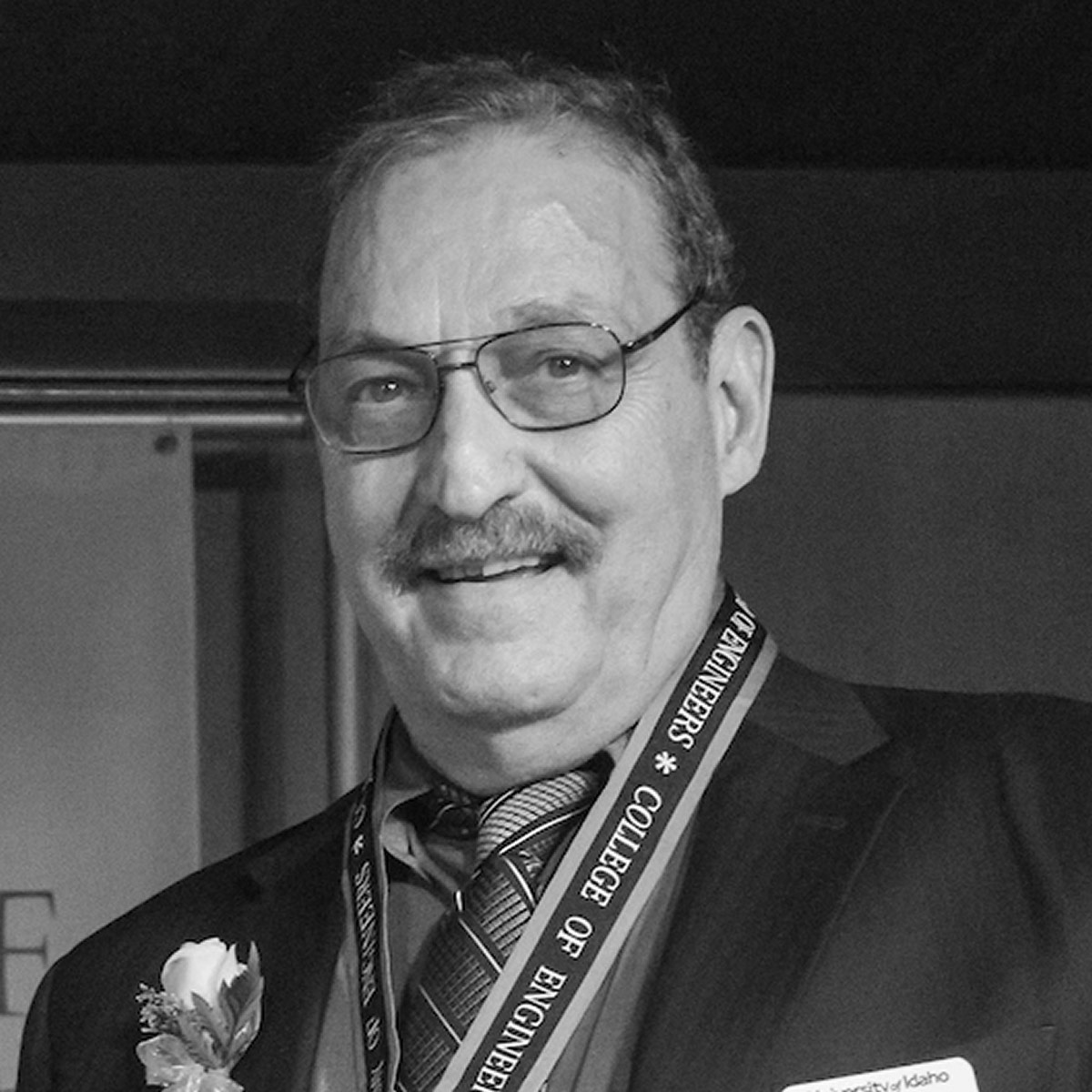
Patrick Taylor is a registered professional engineer with over 40 years of experience in mineral processing and extractive metallurgy engineering, research, teaching and consulting. He has worked or given invited presentations in Canada, Mexico, Peru, Venezuela, Argentina, Chile, Bolivia, Colombia, Brazil, India, England, Turkey and Egypt. He is experienced and trained in pyrometallurgy, hydrometallurgy, and mineral processing. He has been responsible for lab work, pilot plant work, research, and process development for mineral processing and extractive metallurgy processes related to a wide variety of metals. He has authored or co-authored numerous papers and presentations, and holds 9 patents. He has served as a consultant for more than 20 companies and has been an expert witness. He has been an Assistant Professor, Associate Professor, Professor, department head (at two universities) and is currently the G.S. Ansell Distinguished Professor of Chemical Metallurgy at the Colorado School of Mines (CSM). He is the director of the Kroll Institute for Extractive Metallurgy. He has directed research for more than 100 graduate students and post-docs. He has taught extractive metallurgy and mineral processing university courses for the past 40 years. He has developed and taught 10 short courses to industry. He wrote professional engineering exam questions for 25 years. He is active in many professional organizations including participation in the Society of Manufacturing Engineers (SME) Distinguished Member, the Minerals, Metals & Materials Society (TMS), the American Society for Metals (ASM) Fellow, and the Mining & Metallurgical Society of America (MMSA).
In 1982 he was named Outstanding Faculty Member in the College of Mines at the University of Idaho In 1990 he was named Distinguished Faculty Member at the, University of Idaho. In 1994 he received the Research Excellence Award from the University of Idaho. In 1996 he was named Fellow of ASM International. In 2003 he received the Milton E. Wadsworth Award from SME. In 2004 he was the TMS Extraction & Processing Division Luncheon Speaker. In May 2006 he was the CSM Alumni Association MME Graduating Senior Outstanding Faculty Member. In December 2006 he was the CSM Alumni Association Metallurgical and Materials Engineering Graduating Graduate Student Outstanding Faculty Member. In 2006 he was the TMS Extraction and Processing Division Distinguished Lecturer. In 2008 he was named a Distinguished Member of SME. In 2010 he received the TMS EPD Distinguished Service Award. He received the American Institute of Mining, Metallurgical, and Petroleum Engineers (AIME) James Douglas Gold Medal in 2013.
- B.S., Metallurgical Engineering, University of Idaho, 1974
- B.S., Math, University of Idaho, 1974
- Ph.D., Metallurgical Engineering, Colorado School of Mines, 1978
2016
Richard Allen
View ProfileCorby Anderson
View ProfileLynn Davis
View ProfileWilliam Eisinger
View ProfileJim Linford
View ProfileArnfinn Rusten
View ProfileRichard Allen
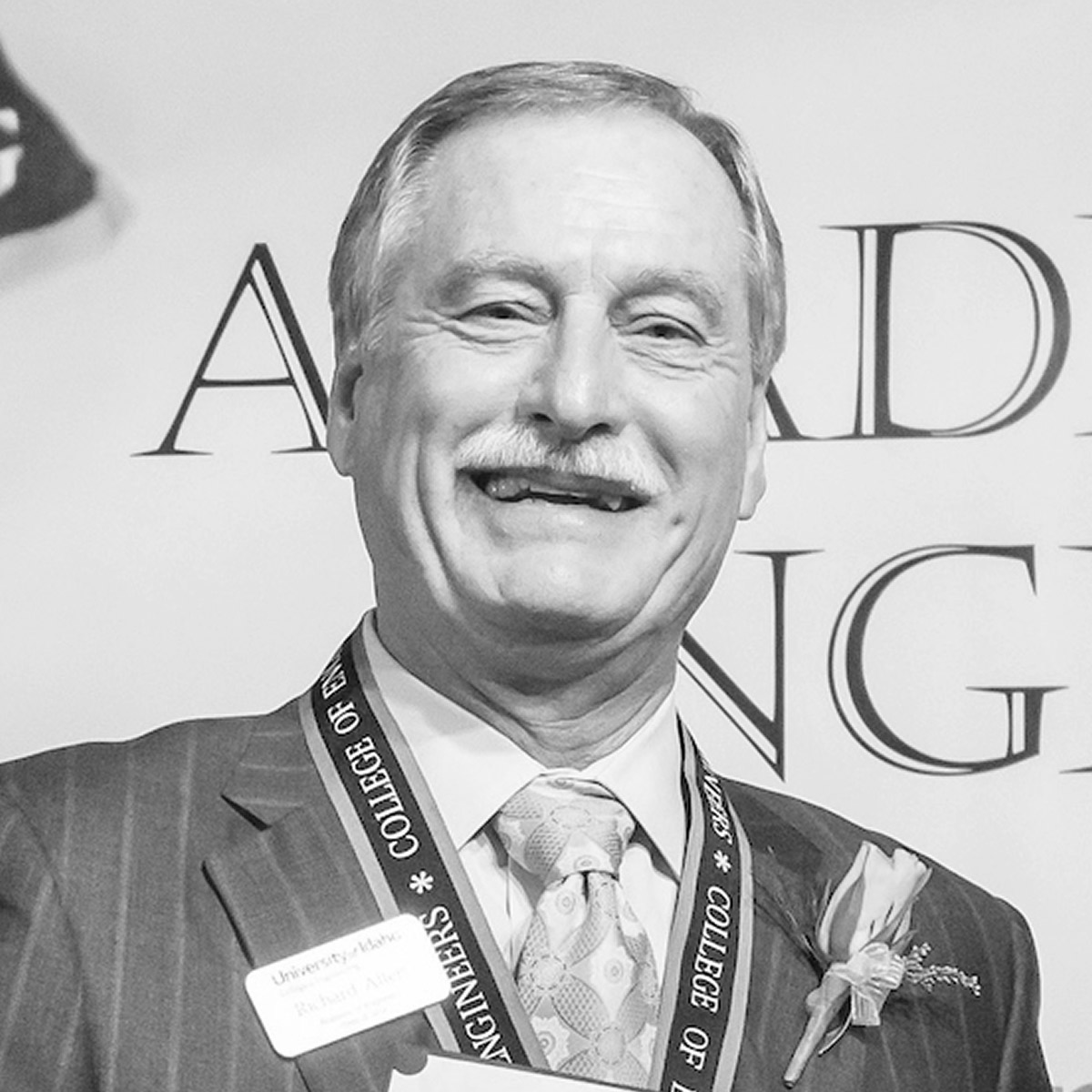
Richard Allen's career has ranged from utilizing his engineering degree in irrigation and operation/maintenance activities for Bureau of Reclamation built dams in the Pacific Northwest to management and business ownership focused on agricultural based products. Allen spent 13 years involved in irrigation delivery, project management, river operations and flood control, dam safety inspections, scheduling, report writing and coordinating with other agencies and personnel. Inspections ranged from small earthen dams to Grand Coulee Dam on the Columbia River.
In 1986 Richard bought his own business, the Gellert Company, and remained involved through 1997. This business focused on both raw product storage and an industrial division. The Gellert Company industrial division provided HVAC equipment and industrial burners to the food processing industry. The raw product storage business specialized in potatoes and onions with distribution across the northern part of the US as well as Canada. This business included design, manufacturing, distribution, sales and service. During Allen’s time in the business it was transformed from electromechanical control systems to fully computerized control units with remote control, record retention, system monitoring, and alarm capability. The resulting ability to control temperatures to a much tighter tolerance was quickly adopted as industry standard especially in the food processing industry. The growth in the business was substantial and all accomplished organically through product development and business profits. This was a UL registered shop for electrical products directly developed and manufactured. Allen was involved in all aspects of the business including design, manufacturing, sales and marketing. He also wrote technical manuals to support the company’s products and articles for industry specific publications. Allen’s career also included brief stints in commercial real estate and as the general manager of a brass sand casting foundry with a broad product line primarily tied to agriculture, including pumps and impact driven rotating sprinklers.
Allen was involved in an Angel Investment group for many years while living in Pasadena, California. Having invested in a number of start-up companies, he led due diligence on numerous prospective investments and served on the board of directors. This was a very rewarding experience allowing for the utilization of his education, career experiences and management skills in a new and influential way.
Notable University of Idaho Involvement and Accomplishments
- Current Chair of University of Idaho Foundation
- Member of University of Idaho Foundation since 2010
- Served on Presidential search committee resulting in the hire of Duane Nellis as President
- Chaired Event Center and Arena evaluation Committee
- Member of the “Campaign for Idaho” Campaign Committee
- Co-Chair of the “Inspiring Futures – Invest in the University of Idaho” Capital campaign
- Recipient of the Jim Lyle Award
- Recipient of the President’s Medallion in May of 2016
- Member of the U of I Athletics Ada County chapter for several years
- Helped start a U of I Athletics chapter in Portland/Vancouver area
- Served on National Board for Vandal Scholarships
- Served as President of the National Board for U of I Athletics
- Remained involved since college with the Sigma Alpha Epsilon Fraternity
- Chaired a $2 million dollar fundraising effort to remodel the Chapter House completed in 2008
- B.S., Agricultural Engineering, University of Idaho, 1973
Corby Anderson
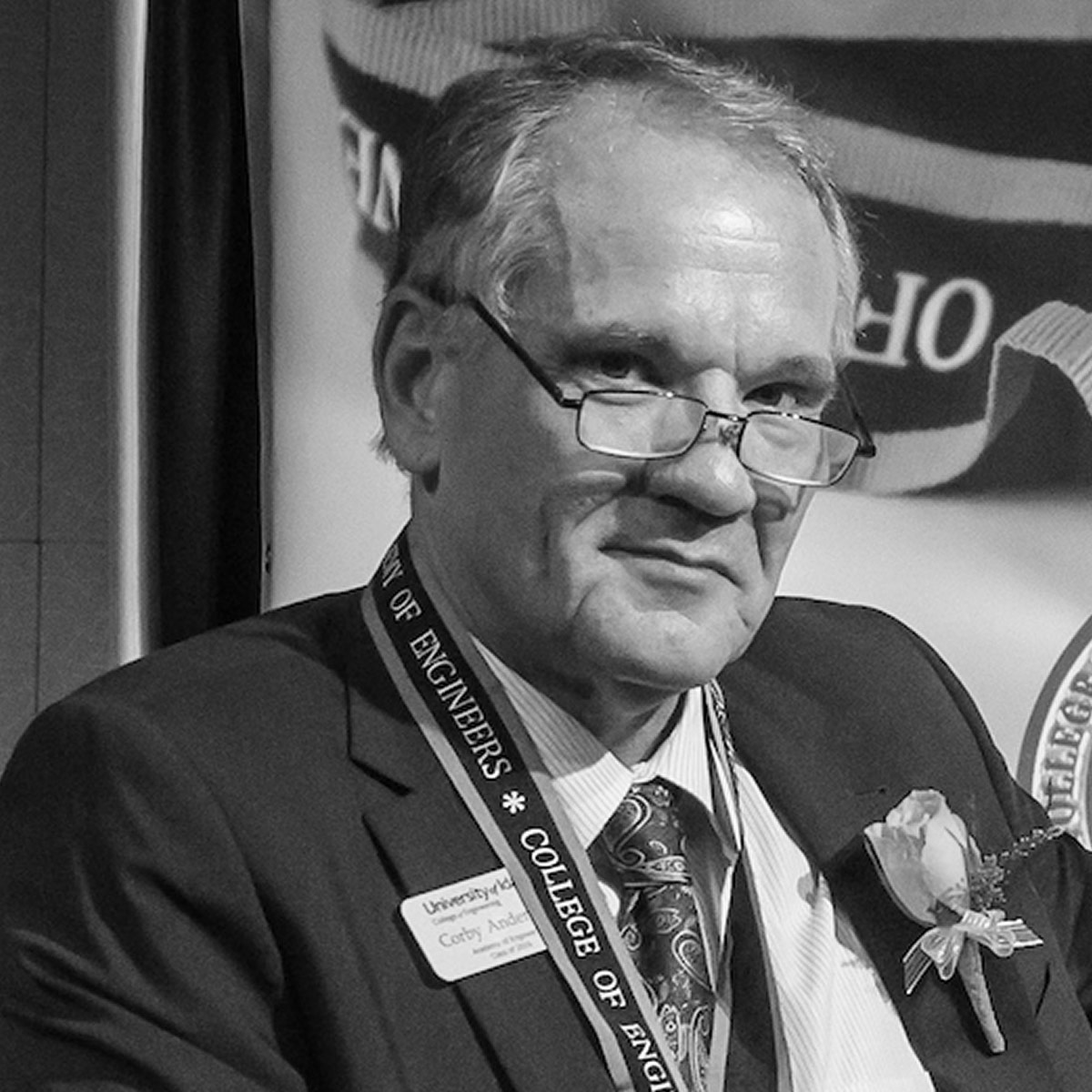
Corby Anderson is a professionally registered engineer with 37 years of experience in process, chemical and metallurgical engineering, engineering services, engineering design, teaching, research, professional service, consulting, management and industrial plant operations. His global experience has included assignments in Namibia, Slovakia, Kazakhstan, Chile, United Kingdom, Myanmar, Argentina, Brazil, Bolivia, Ecuador, Honduras, Zimbabwe, Panama, Costa Rica, Pakistan, Ireland, Belgium, China, India, Mexico, Spain, Italy, Ukraine, Republic of Georgia, Russia, Peru, Tajikistan, Venezuela, Puerto Rico, Guatemala, Japan, Canada, Norway, Philippines, Mongolia, New Guinea, Democratic Republic of Congo, Zambia, Indonesia, Nigeria, UAE, Turkey, Romania, Portugal, Greenland, Poland, South Korea, New Zealand, Morocco, Malaysia and Australia.
Industrially experienced and trained in pyrometallurgy, he also has in depth industrial experience in hydrometallurgy, electrometallurgy, environmental, recycling and mineral processing. He has developed and implemented new hydrometallurgical technologies for pressure leaching, agitated leaching, precious metal recovery, base metal recovery, process control, separations, purifications, refining and electrolysis. As chief process engineer of Sunshine Mining and Refining Company, he was an inventor of and is now a holder of industrially applied and globally recognized Nitrogen Species Catalyzed (NSC) Pressure Oxidation Technology and Alkaline Sulfide Leaching (ASL) Technology. He was also instrumental in the financially successful recycling and refining business at Sunshine. As director of the center for advanced mineral and metallurgical processing at Montana Tech, he lead the development of a financially self-supporting world class technical Center of Excellence interacting globally with industry, academia and government while providing multimillion dollar annual revenues. He has been responsible for lab work, pilot plant work, research, process development, engineering design, start-up, industrial operations, management, corporate budgeting, feasibility studies, contracting and environmental affairs for mineral processing and metallurgical plants producing metals such as silver, PGM’s, gold, antimony, nickel, cobalt, zinc, lead, germanium, gallium and copper.
He has authored and delivered nearly 600 formal presentations and published materials combined of which about 100 have been peer reviewed with over 60 as published and pending archived journal articles or invited papers. This includes 17 books, theses and edited proceedings. Indicative of publication quality, his peers awarded him and his colleagues the 1996 Extraction and Processing Technology Award from TMS for a series of key publications on the fundamentals and the industrial application of the ASL and NSC technologies he was instrumental in the development of. As well, has authored over 400 applied industrial laboratory, pilot plant, engineering, design, plant operation, due diligence, consulting, valuation, expert witness, financial evaluation, feasibility and NI 43 101 compliant professional reports.
With 21 global patent applications in his career, five of which are current, he holds 11 international patents covering six innovative technologies several of which have been reduced to successful industrial practice. He has also successfully served in an expert and testifying role in over 30 legal matters. He has served as a director, executive and advisor for both private and publicly traded companies in the US, Canada and internationally. He owns a successful private consulting engineering business. He has been an editor and reviewer for the publications such as Mineral and Metallurgical Processing Journal, International Journal of Mineral Processing, Separation and Purification Technology Journal, Journal of Physics and Chemistry of Minerals, Minerals Engineering, Hydrometallurgy and Metallurgical Transactions B.
As both a full research professor at Montana Tech and as a tenured full professor at the Colorado School of Mines, he has directed or co-directed about two dozen doctoral and master's students. His university teaching expertise is in mathematics, x-ray diffraction, mineral processing, extractive metallurgy, chemical metallurgy of nickel and cobalt, hydrometallurgy, nano-technology, fire assay and precious metal analysis, particulate sampling, coal processing, engineering design, chemical processing of materials, chemical metallurgy of copper, gold silver and PGM’s, rare metals production, transport phenomena, reactor design and chemical kinetics. He has developed and taught in over 50 global professional service courses. He teaches mineral and metallurgical engineering fundamentals to candidates seeking professional mineral engineering registration and to registered mineral examiner candidates within the US Department of the Interior and to several other professional organizations.
He is active in many professional organizations serving as an SME director, executive committee member and vice president, as an IPMI director, and as a trustee for North West Mining Association. He has been honored as a fellow of both the Institution of Chemical Engineers and of the Institute of Materials, Minerals and Mining. He registered as a chartered chemical engineer, a European engineer, a founding registered member of SME, a competent person of IOM3 and a qualified professional with SME, MMSA and IOM3. He is also a peer reviewer for IOM3 for the professional registration of engineering applicants. He has participated with the National Materials Advisory Board, National Academy of Science, National Research Council, National Science Foundation, US EPA and National Academy of Engineering. He was appointed by the Secretary of the U.S. DOI and has served on a BLM RAC. Recently he worked with the National Research Council on the Uranium Mining in Virginia study.
He has assisted in the organization of and chaired about 25 global conferences and symposiums. In 1999 and 2004, he was technical chairman for the 23rd and 28th International Precious Metals Institute meetings. In 2001, he was co-organizer of a TMS International Symposium on Cyanide. In 2002 he was a co-editor and organizer for the Mineral Processing Plant Design, Practice & Control International Symposium. In 2003 he was a co-organizer of the Fifth International Ian Ritchie Symposium on Hydrometallurgy and for the Symposium on Global Development of Copper and Gold Deposits. In 2005 and 2012 he was co-chairman for the Northwest Mining Association Annual Meeting. In 2005 he was an invited plenary speaker at the 27th meeting of the Institute of Mining Engineers of Peru. He was again a plenary speaker at PERUMIN 2011. In 2006 he was the chairman for the first Northwest Mining Association meeting held in Reno, Nevada. In recognition, he received the NWMA Presidents Award. Again, in 2013 he was chairman for the Annual NWMA Meeting. In 2007 he served as co-chairman for the SME-TMS-IPMI Precious Metals Symposium. In 2008 he served as co-organizer for the Sixth International Symposium on Hydrometallurgy. He was the Canadian Institute Chairman for the 2008 and 2009 Clean Coal Symposiums and the 2009 Uranium Symposium. He was the awardee as the TMS EPD Luncheon Speaker in 2009. He was also on the organizing committees for HydroCopper 2009, COPPER 2010, HydroProcess 2010, HydroCopper 2011, HydroProcess 2012-17, MME 2014-17. He gave a plenary lecture and short course on the hydrometallurgy of arsenic, antimony and mercury at the Hydro Process 2010 and 2016 meetings in Santiago, Chile. He also provided a comprehensive hydrometallurgical copper concentrate treatment course at HydroCopper 2011.
In 2013, he offered short courses and invited lectures in Peru. In 2008 and 2012 he was an invited speaker at the ALTA Hydroprocessing of Sulfides Symposium In 2013 he was an invited plenary speaker for international symposiums in Belgium, Peru, Poland and Japan. In 2013 he was the SME MPD programming chair which included the development of a symposium and publication of a Metallurgical Innovations Symposium book. He was also a co-organizer and co-editor for the TMS-CIM Ni Co Symposium in 2013. He was also an invited speaker for Antimony 2013 in Guilin China. In 2014, he was the CIM As Hydrometallurgy Symposium Plenary speaker. In 2015 he made invited plenaries in Morocco, UK, Italy and Zambia.
In 2002 he received a Montana Tech Distinguished Alumni Award and in 2005 the Montana Tech Distinguished Researcher Award. SME awarded him the Milton E. Wadsworth Award for Chemical Metallurgy in 2009 and the MPD Millman of Distinction Award in 2014. In 2015 he was awarded the IPMI Jun-ichiro Tanaka Distinguished Achievement Award. He received the SME Distinguished Member Award, the George S. Ansell Department of Metallurgical and Materials Engineering Outstanding Faculty Award and became a distinguished member of the Academy of Engineering in the University of Idaho College of Engineering in 2016. In 2017, he will receive the TMS EPD Distinguished Lecturer Award.
- B.S., Chemical Engineering, Montana State University, 1979
- M.S., Metallurgical Engineering, Montana Tech, 1983
- Ph.D., Mining Engineering — Metallurgy, University of Idaho, 1987
Lynn Davis
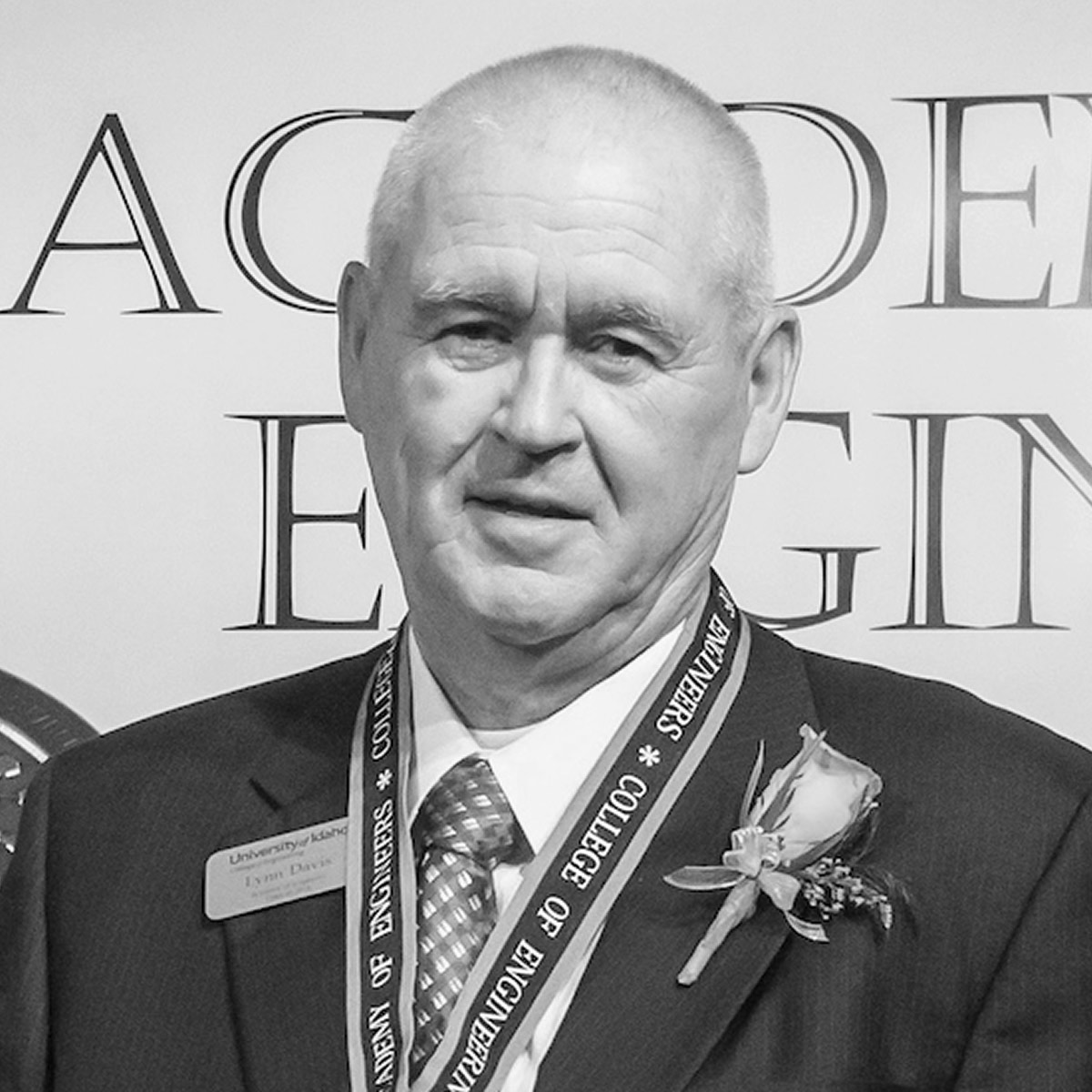
Lynn Davis graduated from Payette High School in 1967 and enroll that fall in the College of Mines with the help of an Army ROTC scholarship. He completed his undergraduate course work in December of 1971 and was subsequently commissioned a second lieutenant in the U. S. Army assigned to the Field Artillery Corps. He accepted a fellowship from the Idaho Bureau of Mines and Geology and completed his graduate work in the fall of 1972. After officers basic course at Ft. Sill, Okla., he was assigned as a Vehicle Test Officer at the Army’s Cold Regions Test Center in Ft. Greely, Alaska. In 1977, after his second tour of duty at Greely, he resigned his commission as a captain in the Ordnance Corps to take a process engineering position with Teledyne Wah Chang in Albany (TWCA), Ore. TWCA was a company which refined and manufactured zirconium, hafnium, titanium, vanadium, niobium and tantalum and their alloys for nuclear, aerospace, medical and corrosion applications.
In 1979, he was selected to layout and construct a high purity niobium chlorination and hydrolysis plant at TWCA. In 1983, he was again selected as project engineer to layout and construct a superconducting wire and cable plant for TWCA in Huntsville, Alaska. In 1984, he was named director of plant engineering and maintenance at TWCA. In 1987, he completed his registration as a professional engineer in metallurgical engineering with the State of Oregon. From 1989 to 1998, he held five different director positions involving melting, Zr/Hf chemical operations, maintenance, plant engineering, titanium sponge production and Zr/Hf business unit management. From 1998 to 2000, he held four different vice president positions in the combined Oremet Titanium and Wah Chang companies involving R&D, process engineering, environmental compliance, chemical operations, quality, operations and finally general plant manager. In September of 2000, he was named president of Wah Chang which was a wholly owned subsidiary of Allegheny Technologies Inc. In 2003, in addition to his duties as a company president, Davis became program manager for the restarting and rebuilding of the idled Oremet Titanium sponge plant.
In 2006, Davis again was assigned the additional duty of program manager for the construction of a 505 million dollar green field titanium sponge plant in Rowley, Utah. To that end, he became a general engineering contractor in Utah in 2007. The peak of his career was in 2008, when he was named group president of ATI Primary Metals and Exotic Alloys over seven manufacturing plants across the United States employing 1800 workers. Davis retired from full time work in 2011 although he consulted for two more years at the Rowley plant working on process optimization and sponge quality qualifications.
Many people helped Davis during his career and he certainly had some luck with his assignments, but he feels that the majority of credit for a successful engineering career goes to the United States Army.
- B.S., Metallurgical Engineering, University of Idaho, 1971
- M.S., Metallurgical Engineering, University of Idaho, 1972
William Eisinger
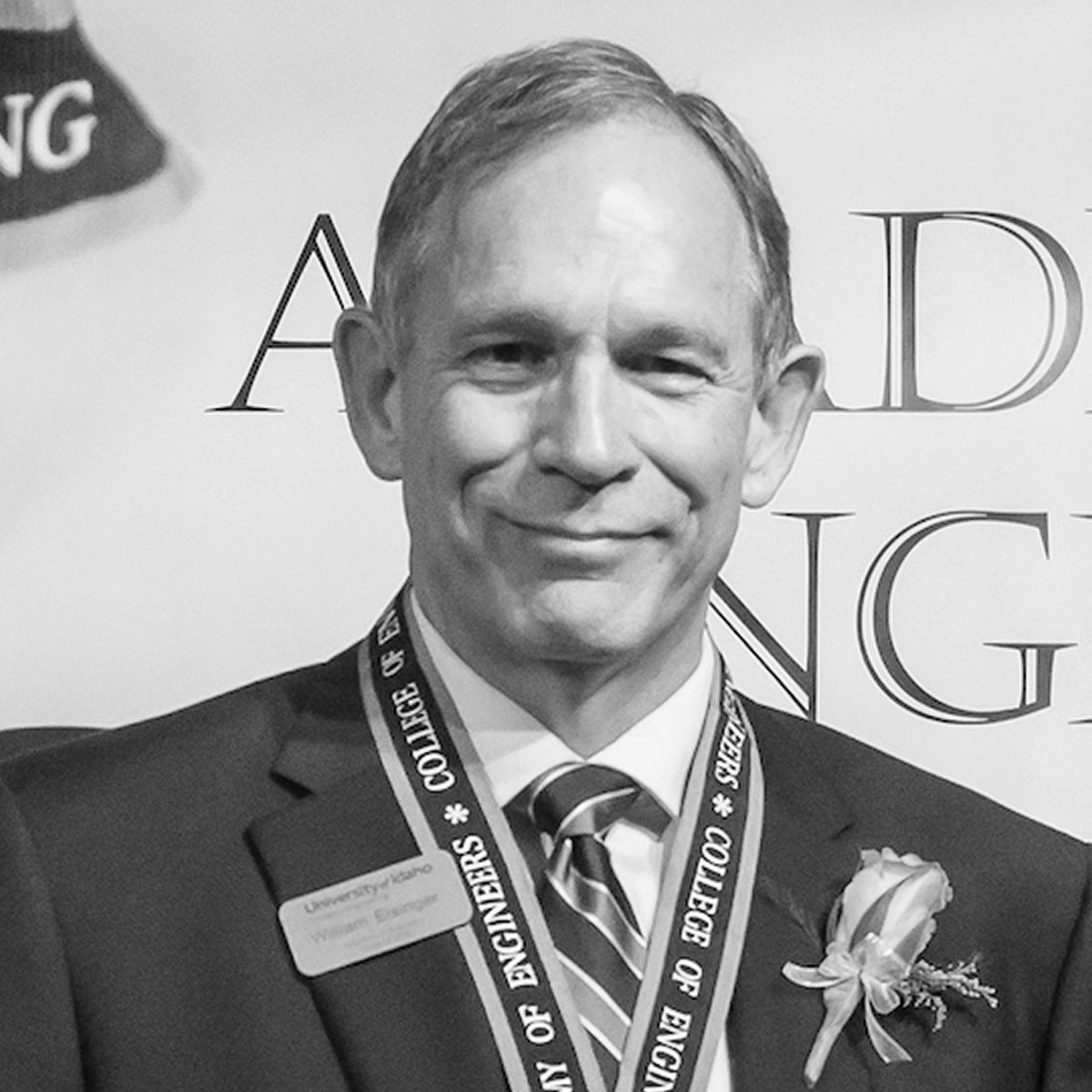
Bill Eisinger spent his career of 41 years in the electric utility industry. Following graduation from the University of Idaho he held various positions with Pacific Gas & Electric Company and Idaho Power Company. In 1989 he joined POWER Engineers. During his career Eisinger has been involved in the management and design of electric utility transmission and substation projects ranging from 46 kV to 500 kV and capital costs exceeding $1 billion. During his tenure with POWER, the firm grew from approximately 75 employees to over 2000 employees and is the largest engineering firm in the state of Idaho and one of the top 50 largest in the United States. Eisinger retired from POWER in July 2016 having served as executive vice president for the last ten years of his employment.
With support from his employer, Eisinger helped established the U of I's POWER Center for Power Engineering Excellence. This high-tech laboratory supports research that advances the field of power systems technology and helped develop a power systems engineering education program able to train the rising generation of power systems engineers. Eisinger was the 2009 U of I College of Engineering Design EXPO honorary chair and is a current member of the College of Engineering advisory board. He received the U of I Silver & Gold award in 2012, an award that recognizes living alumni who have a distinguished record of achievement and service in a specialized area of endeavor that brings honor and recognition to the university.
- B.S., Electrical Engineering, University of Idaho, 1975
- M.S., Electrical Engineering, University of Santa Clara, 1979
- M.B.A, Boise State University, 1983
Marjorie Hatter
Deceased 2021
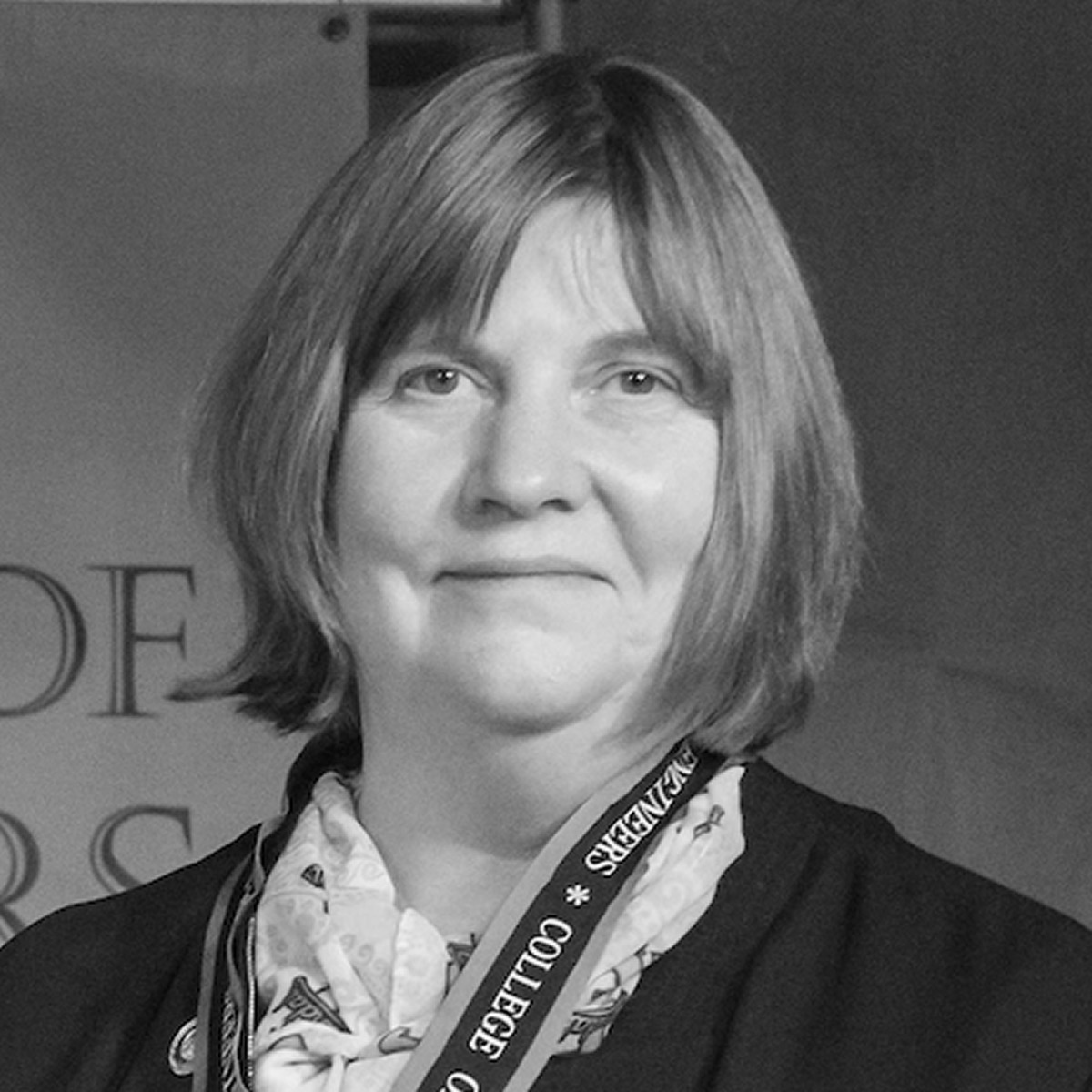
Marjorie Hatter began her career at Unocal's Science and Technology Division in Brea, California. At the research center, she worked in several areas, including geothermal energy, pilot plant processing, and catalytic process development. In 1992 Hatter joined Unocal's Corporate Environmental Remediation Department as Manager of Environmental Technology and in 1994, transferred to Unocal's Refining Division and became the Manager of Technical Services and Engineering at the San Francisco Refinery. With the purchase of the Refinery by Tosco Corporation in 1997, Hatter accepted a position as Operations Manager of the Chemical Plant at Tosco's Refinery in Martinez, California. She later worked as Manager of Engineering and Manager of Health, Safety and Environment at the Martinez and San Francisco Refineries.
In 2000, Hatter transferred to Tosco's Los Angeles Refinery, where she was Manager of Operations and Maintenance for the Carson Plant. In 2004, she became the Manager of Excel Paralubes, an independent joint venture of ConocoPhillips and Flint Hills Resources, located in Westlake, Louisiana. She became Refinery Manager the Phillips 66 Refinery in Ferndale, Washington in 2007 and retired from this position in 2014.
During her career, Hatter has also held roles in many community organizations including the United Way of Orange County, California and Leadership Long Beach also in California. She is past Treasurer and current Chair of the Western Washington University Foundation Board and is a past Chair of the Advisory Board for the Voiland School of Chemical Engineering and Bioengineering at Washington State University. She has participated as an EXPO judge and guest speaker at the University of Idaho. Hatter grew up in Grangeville, Idaho and graduated from the University of Idaho with a B.S. and M.S. in Chemical Engineering. She is married and has two children and currently resides in Blaine, Washington.
- B.S., Chemical Engineering, University of Idaho, 1977
- M.S., Chemical Engineering, University of Idaho, 1980
David Kohli
Deceased Mar. 20, 2017
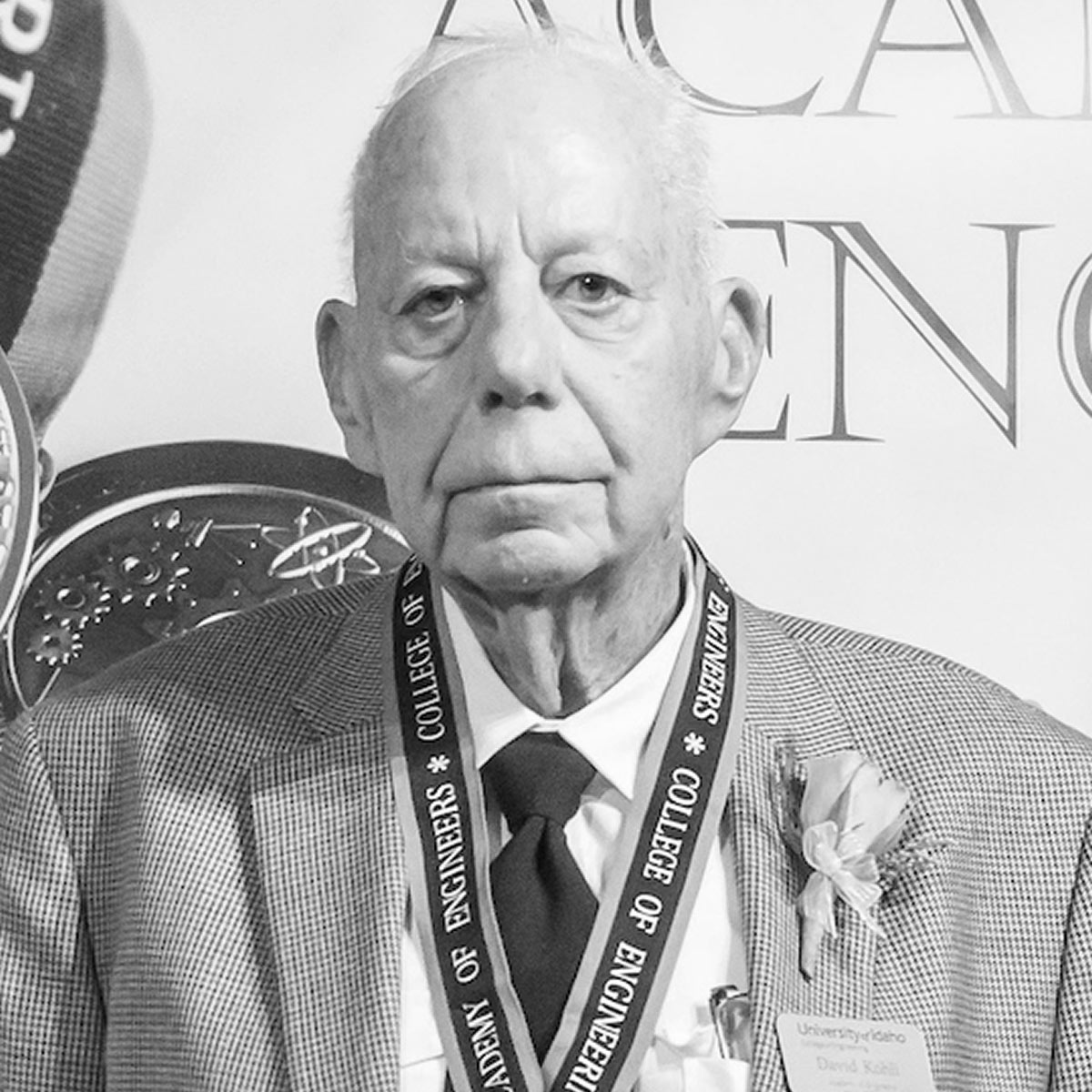
In 1956, David Kohli earned a BSME from the University of Idaho and graduated with a ROTC commission in the U.S. Army. He studied leadership training at Ft. Devens, Mass., and then was assigned to the Army Security Agency as a communication officer. This work involved mechanical oversight of the development of communication equipment endurance (shock and vibration/corrosion) and its testing, where at MIT he studied vibration and shock testing. Most of his work was at the National Security Agency and the Naval Ordinance Testing Station in Washington D.C. His great advisor and friend, U of I Engineering Dean Janssen had helped to secure his military assignments.
Kohli returned to Spokane where he began a career with Carrier Air Conditioning Company. He traveled to Carrier headquarters in Syracuse, New York, to attend their highly-regarded school learning about application and investigation of the inside design, and trouble-shooting, of all equipment, from the largest central station to the smallest residential units. After six years Kohli decided to start his own business, Parrott HVAC, Inc., by buying out an existing outfit in Coeur d’Alene, Idaho. Kohli successfully secured the largest HVAC commercial work in the area including banks, schools, factories, hotels, restaurants, auto dealerships, meat processing plants for well over 15 years. His shop expanded to include sophisticated sheet metal fabrication, architectural metal roofs and large commercial kitchen installations. The Silver Valley mining companies in North Idaho became Kohli’s main business. They needed the sophisticated cooling of the underground developments that they were mining. Working with their engineering teams Kohli designed and installed quite large air conditioning systems at all levels including 4,000 feet below the ground surface. He designed and installed large horsepower surface fans, underground booster fans and refrigeration plants utilizing controlled recirculation. He worked on assignments including shaft design, strategic planning, pumping, and refinery ventilation.
In 1983, Kohli worked for a full range consulting business Bovay Northwest in Spokane as a consulting engineer planning ventilation requirements and designing and installing HVAC systems upgrade for the Inland Northwest area. One assignment was to oversee the design and construction of a clean room for Advanced Silicone Materials, Inc. a semi-conductor wafer plant in Moses Lake, Wash. He was responsible for developing a large clean room class 10,000 to house their furnaces that grew the silicone rods that eventually became computer chips. This job also involved a large air cooling system in that these furnaces produced heat during the process. The job was complete at a class of 13,000 and after about nine years of these types of consulting projects, Kohli retired.
- B.S., Mechanical Engineering, University of Idaho, 1956
Jim Linford
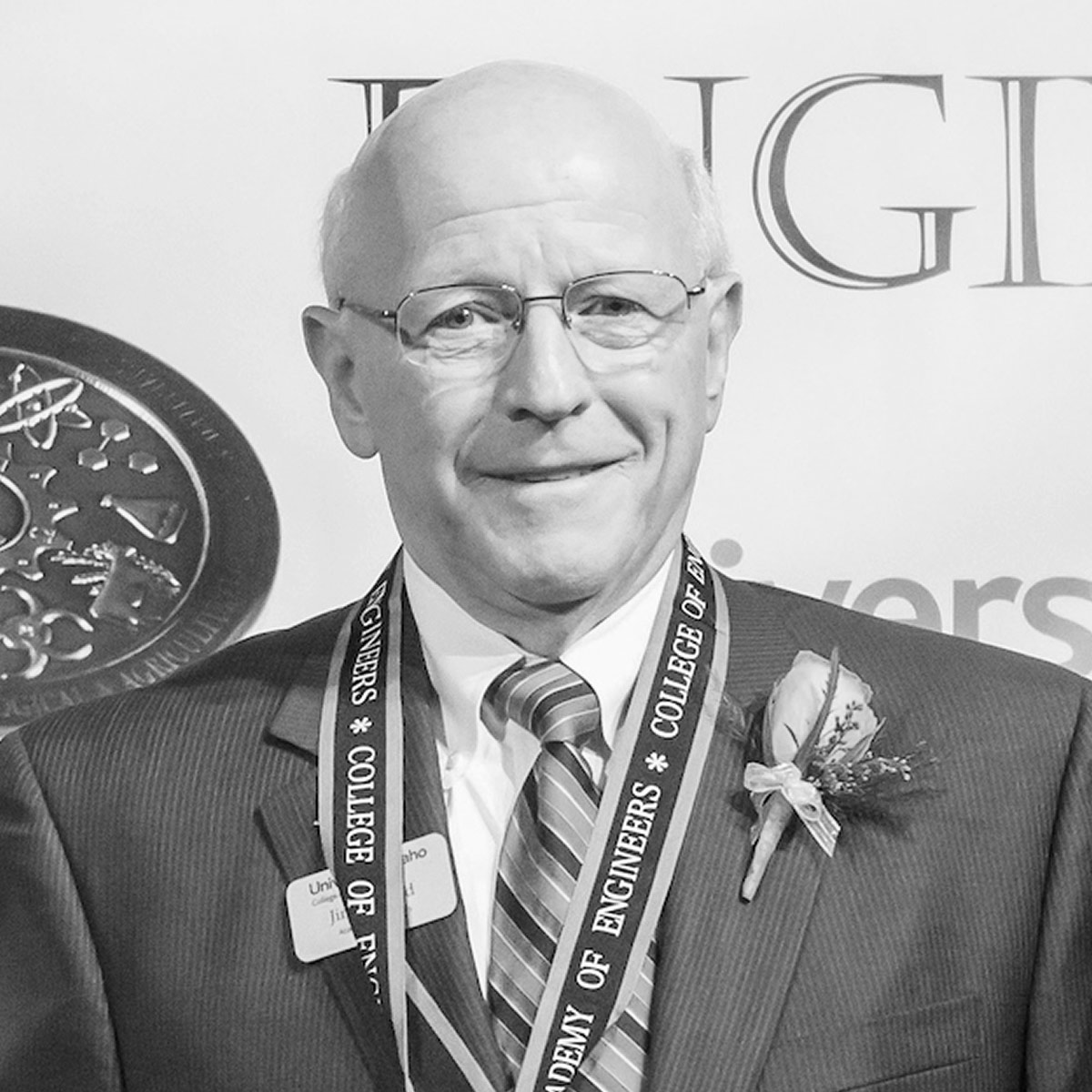
Jim Linford is principal and owner of Eagle Creek Consulting, Inc., which specializes in the food industry, technology systems, manufacturing technology, project management, operations management, logistics and supply chain management.
After graduating from the University of Idaho with a BSME in 1971 Linford worked for a small civil engineering consulting firm in Caldwell, Idaho, until shipping off to boot camp for the Idaho Army National Guard. He was commissioned a second lieutenant in 1973. In 1971, he joined the engineering department at Intermountain Gas Company in Boise, Idaho. Linford left Intermountain Gas Company in 1974 to work for The Amalgamated Sugar Company in Nampa, Idaho.
In 1977, Linford joined the engineering department of Ore-Ida Foods, Inc., at that time a wholly owned affiliate of H. J. Heinz Co., in Ontario, Oregon, and served in many capacities during the next sixteen and one-half years. He was responsible for process design, new technology development and application, new factory design and construction and project management as an engineering department manager. He then assumed the position of general manager of engineering and was responsible for all company engineering, project management and construction. Finally, he became general manager of operations for the formulated food side of the business and was responsible for nine factories across the U.S. that produced frozen food products. He also served on numerous committees of the Heinz world organization, including new technology development and application and world-class factory development.
In 1993 Linford joined Ocean Spray Cranberries in Lakeville, Massachusetts, as director of manufacturing where he was responsible for eight fruit receiving stations and seven factories for Ocean Spray and all co-pack operations.
In 1995 Linford joined CH2M-Hill in Portland, Oregon, as vice president and general manager of its food engineering division, The Food Group, to grow the engineering and construction management division to support the food industry.
In 1997 Linford became vice president of operations for Gardenburger, Inc., of Portland, Oregon. He spent nine years at Gardenburger during which the company moved plant operations from a manual batch operation to a totally automated operation producing meatless burgers, breakfast items, meals, sandwiches, and foodservice ingredients. In 2000 Linford became Senior Vice President and Chief Operating Officer. In 2006, Gardenburger was acquired by Kelloggs.
Since that time, Linford has operated his consulting business, Eagle Creek Consulting, Inc., working on projects in Portland, Oregon; Pittsburgh, Pennsylvania; Boston, Massachusetts; Pahala, Hawaii; Seattle and Cashmere, Washington, designing and building a seafood manufacturing plant, a coffee roasting plant and two macadamia nut drying plants. He also was a principal for development of a technology for tracking and monitoring product movement and plant operations globally. Linford also was involved in a business designing, developing and implementing processes and packaging of shelf-stable fresh food products.
Linford is a charter member of the Treasure Valley Section of the American Society of Mechanical Engineers and served as its chairman in 1975-1976. He held leadership roles for the Idaho Society of Professional Engineers and also served on the Board of the American Frozen Foods Institute. He served three terms on the College of Engineering Advisory Board at U of I. He was on the management board at Ore-Ida Foods/Heinz, and was a member of the Heinz Global Technology and Operations Boards. Also he has served on the Gardenburger Board of Directors. Linford especially enjoyed his term on the board of Portland Brewing Company.
Linford enjoys fishing, gardening, bicycling and skiing in his spare time.
- B.S., Mechanical Engineering, University of Idaho, 1971
Arnfinn Rusten
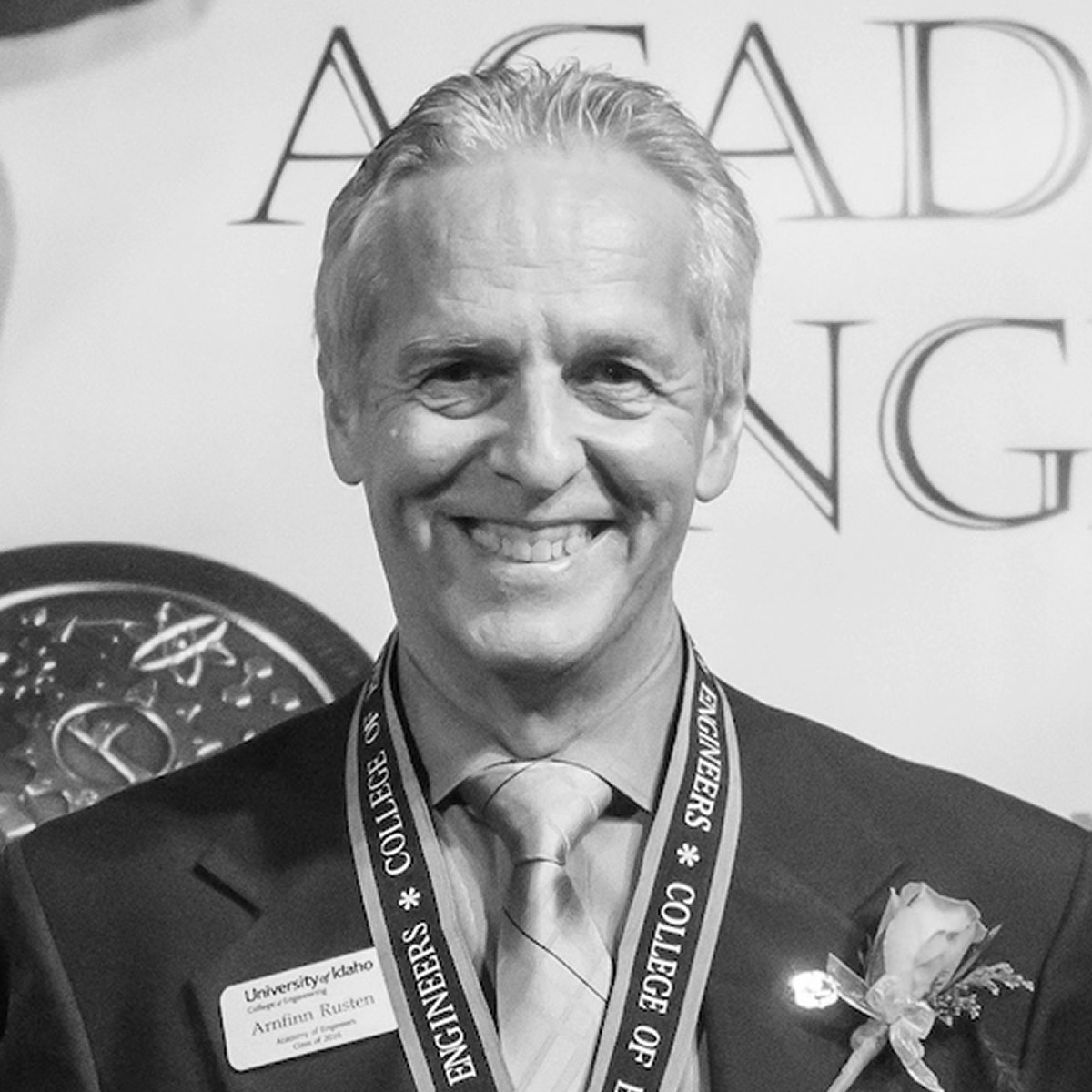
Arnfinn Rusten serves as the BergerABAM Inc.’s senior vice president and as a director on the company board. A graduate of the University of Idaho, he has 39 years of professional engineering and management experience. He started his career with BergerABAM in 1977 as a junior design engineer. Through hard work and vision, he increasingly advanced his role and in 2005 became president and CEO of this 250-person consulting firm. After becoming CEO, Rusten expanded BergerABAM's formal strategic business process, which established and achieved significant growth goals, allowing the company to continue to prosper and grow amidst challenging economic times. His leadership continues to spawn initiatives that are advancing technologies and efficiencies for clients and the engineering industry. During his professional career as a licensed civil and structural engineer in several states, Rusten managed the planning and design of transportation projects, primarily tied to waterfront, marine, and offshore structures focusing on promoting environmentally friendly methods and materials. Rusten has made direct contributions to industry-critical technology especially through his work in the Port Industry. He was awarded the Precast Concrete Industry's (PCI) Robert J. Lyman Award for the technical paper "Design-Construction of a Breakwater/Pier Structure at the U.S. Naval Station Everett, Washington" in 1998. This award recognizes papers published in the PCI Journal for contribution on design, production, and erection of precast/prestressed concrete. He has guided the development of the Northwest developed precast concrete wharf and pier construction technology now widely used world-wide. In 2014, the American Council of Engineering Companies, Washington State, awarded Rusten the prestigious Engineer of the Year Award for his outstanding contributions to the engineering community. In 2016 Rusten was awarded The American Society of Civil Engineers' Kenneth M. Childs, Jr. Ports & Harbors Practitioner Award for his technical innovation, inspiring management, integrity and commitment to the profession, which have established him as a visionary leader among his fellow professionals. Rusten stepped down as president and CEO in May 2014 and now serves as part-time senior vice president and director of the company board. He is also on the board of directors for Manson Construction Company, a Seattle based transportation construction company.
- B.S., Civil Engineering, University of Idaho, 1975
- M.S., Civil Engineering, University of Idaho, 1977
2015
Don F. Kopczynski
View ProfileCharles C. Mitchell
View ProfileBurch Roark
View ProfileKeith Van Scotter
View ProfileGeorge M. Simmons
View ProfileAllen R. Stubberud
View ProfileDon F. Kopczynski
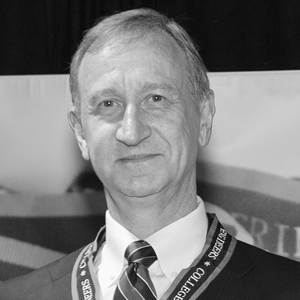
Don Kopczynski earned a bachelor's in electrical engineering from the University of Idaho in 1979. He has 36 years of experience leading engineering and construction activities for Avista Utilities. His experience covers design and construction of gas and electric transmission and distribution, fiber optic networks, and fuel cells. His work ranges from engineering network design, financial analysis for acquisitions, marketing, and customer service. Kopczynski began his career working as an area engineer for the Pacific Power and Light Company. In 1979, he was hired as an assistant electrical engineer at the Washington Water Power Company (now Avista) where he designed distribution facilities including the Spokane downtown underground network.
From 1981 to 1988 he served as a district manager. During this time he managed gas and electric construction crews first in St. Maries, Idaho, then Othello, Wash., and finally in Clarkston, Wash. In 1988, he was asked to lead a team to restructure the gas and electric operations at Avista in an effort to save money. His team conducted a comprehensive survey of activities throughout the company and made recommendations that resulted in approximately $10 million of annual savings. The recommendations streamlined the operation by eliminating layers of management and centralizing activities.
Kopczynski became manager of customer service where he focused employees on providing excellent customer service and continued to drive costs out of the operation. He implemented the first incentive plan for employees and the first quality survey focusing on how customers were treated when they called Avista. During this time, Kopczynski conducted financial analysis and negotiations to lead Avista through expansion of its territory by acquiring other service areas. Kopczynski then became director of Gas Supply and later Power Supply. He and his team led the effort to divest of Centralia coal generating station, construction of a gas turbine at Rathdrum, Idaho and successfully negotiated a “living license” for Avista’s hydroelectric operations on the Clark Fork River.
By the late 1990’s Avista had created 13 subsidiary companies in an effort to diversify its earnings. Kopczynski became president of Avista Fiber. A fiber optic infrastructure company focused on delivering high speed Ethernet service to hospitals and schools. Its first project was to interconnect the Greek houses at Washington State University to the internet — a project funded by Paul Allen. Avista fiber built out 250 miles of fiber throughout the Spokane and Coeur d’Alene area. This effort was successful and quickly sold to another communication subsidiary. By early 2000, an energy crisis in the western United States brought Kopczynski back to the Avista Utilities.
- M.B.A., Whitworth University, 2011
- M.A., Organizational Leadership, Gonzaga University, 2004
- M.S., Engineering, Washington State University, 1993
- B.S., Electrical Engineering, University of Idaho, 1979
Charles C. Mitchell
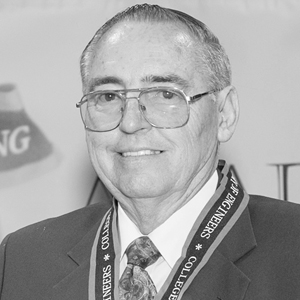
Charles Cleon Mitchell was born in Drury, Missouri in 1937. He moved with his parents to Marsing, Idaho, in early 1938 where he graduated from Marsing High School as valedictorian in 1955. Mitchell earned a bachelor's in electrical engineering in 1959 and graduated with high honors from the University of Idaho. In 1959 he was also designated a distinguished military graduate and commissioned a second lieutenant in the U.S. Army.
From June 1959 through December 1979, Mitchell served as a U.S. Army officer in a wide range of tactical unit and high-level staff positions, including command of a field artillery battalion and service in the Pentagon as a member of the Army Staff. He had four overseas tours of duty, he spent five years in Germany during two tours and two one year combat tours in Vietnam. His military training included: Artillery Officer Basic and Career Courses, he was the honor graduate of both; Airborne; Ranger; and, Armed Forces Staff College. The Army sponsored his attendance at Arizona State University where he earned a master's and doctorate in engineering in 1966 and 1968 respectively. In December 1979, Mitchell retired from the U.S. Army as a lieutenant colonel.
After his military service Mitchell spent 23 years working in the Los Angeles area. The first 21 years with Litton Data Systems and Integrated Systems Divisions, in 2001 Northrop Grumman purchased Litton, and he was assigned to their Navigation Systems Division. Over the years, Mitchell served as principal system engineer (PSE) or engineering lead for the development of several strategic and tactical command, control, communications, and intelligence systems for the U. S. military and foreign governments. In addition, he was a key technical participant in activities associated with securing new business, which included extensive global travel.
Mitchell retired from Northrop Grumman in January 2003 as senior scientist/technical director. Mitchell is a member of several scholastic and engineering honor societies: Phi Eta Sigma, Phi Kappa Phi, Sigma Tau, Alpha Pi Mu, and Tau Beta Pi. His military service is also the source of many honors: Legion of Merit, Bronze Star Medal with three oak leaf clusters (i.e., four awards), Meritorious Service Medal with oak leaf cluster (i.e., two awards), Air Medal, Army Commendation Medal, National Defense Service Medal, Armed Forces Expeditionary Medal, Vietnam Service Medal with four bronze stars for combat campaigns, Republic of Vietnam (RVN) Staff Service First Class Medal, Vietnam Campaign Medal, RVN Gallantry Cross Unit Citation with Palm, Parachutist Badge, Ranger Tab, US Army General Staff Identification Badge, and four Army Overseas Combat Service Bars. In 1993 Litton presented Mitchell with the prestigious Sam Sternbach Memorial Award for Technical Excellence. A Vietnam veteran, Mitchell is a member of the Disabled American Veterans (DAV), Veterans of Foreign Wars (VFW), and the American Legion. Mitchell married Leota Jeanne McCullough in June 1965, and they now reside in Valencia, California. Together Mitchell and his wife have four daughters and seven grandchildren living in southern California.
- Ph.D., Engineering Science, Arizona State University, 1968
- M.S., Engineering, Arizona State University, 1966
- B.S., Electrical Engineering, University of Idaho, 1959
Burch Roark
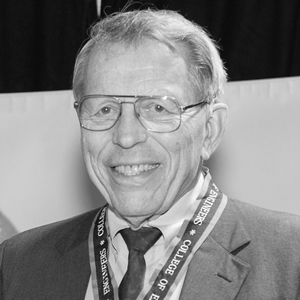
Burch Roark graduated from the University of Idaho in 1955 with a B.S in mechanical engineering. He received a football scholarship to the U of I and played all four years at the position of tackle and guard. Roark was very involved in campus activities while at U of I he is a member of the Phi Gamma Delta fraternity, was the president of the student chapter of the Society of Engineers (SAE) and served all four years in ROTC. Upon graduation Roark was commissioned a 2nd Lieutenant in the U.S. Air Force.
Lt. Roark was honorably discharged from the U.S. Air Force in 1958 at the rank of Captain after serving both as a pilot and instructor pilot.
After his military service Roark went to work for the Kaiser Aluminum and Chemical Corporation, where he remained employed in several roles for 37 years. He worked at the Trentwood rolling mill facility in Washington State as junior engineer, engineer, staff engineer, plant engineer (chief), maintenance superintendent and production superintendent. He served as project manager from 1974-78 for the first phase of a $45 million modernization project of the Trentwood facility. And then reassumed the project manager position in 1980-85 for the larger second $230 million modernization phase of the facility. Roark then transferred to Kaiser’s Ravenswood, West Virginia plant in 1985 where he served as Manager of Manufacturing and Technology, Fabrication & Reduction and as Plant Manager from 1989-1992. Roark returned to Trentwood in 1992 to take on the role of Engineering & Maintenance Manager. Roark retired from Kaiser in 1995.
After retiring from Kaiser, Roark traveled the U.S., Russia and Venezuela working as an independent consultant on large engineering projects involving the aluminum industry.
Roark is an avid antique car enthusiast, he has organized antique car shows in Spokane and owns a 1912 Baker and 1911 2-cylinder Maxwell among others. He enjoys building scale model engines in his machine shop at home.
Roark is an elder in the Opportunity Presbyterian Church of Spokane and serves as Board President of the Church’s 40 unit low income housing complex.
Burch Roark has been married to Marjie Roark for 32 years, they have a combined family from previous marriages of six children, sixteen grandchildren and four great-grandchildren.
- B.S., Mechanical Engineering, University of Idaho, 1955
Keith Van Scotter
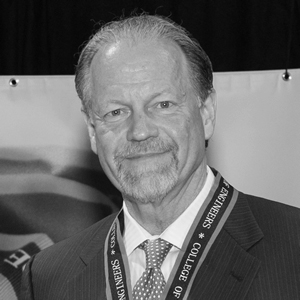
Keith Van Scotter is currently president and CEO of Maine’s Lincoln Paper and Tissue LLC (LP&T). He has served in this role since 2004. Van Scotter earned his bachelor's and master's in chemical engineering from the University of Idaho in 1977 and 1979 respectively.
As president and CEO he is currently responsible for the overall direction of $150 million annual revenues in specialty tissue and paper manufacturing. LP&T is a single mill operation that is the leading manufacturer of specialty napkin parent rolls and specializes in uncoated freesheet printing papers. LP&T’s deep-dyed and pastel tissue is used by party goods producers, airlines and food service companies to create napkins, towels, table covers and other specialty tissue products. LP&T produces 33,000 tons per year of commodity white towel and napkins and 80,000 tons a year of specialty high bulk uncoated freesheet printing paper.
LP&T’s success under Van Scotter has not been without significant challenges and what many considered against formidable odds. The Lincoln mill that is at the heart of LP&T’s success was idle in 2000 when then owner Eastern Pulp and Paper filed for Chapter 11 bankruptcy, and remained idle until 2004, when Van Scotter was brought in by creditors to help turn the mill around. When a deal to turnaround Eastern Pulp and Paper fell through Van Scotter formed a partnership that lead to the creation of Lincoln Paper and Tissue LLC. On May 28, 2004 with employees waiting at the gate LP&T opened the mill. Van Scotter noted at the time that there was “no margin for error,” and felt that if the mill could survive operationally and financially for 90 days they would be successful. In fact after nine weeks the mill was cash flow positive.
Prior to heading the management team at LP&T, Van Scotter served as vice president and general manager of Michigan Operations for Mead (now Mead Westvaco.) He also served as vice president for Edmundston Operations for Fraser Papers, vice president for Corporate Planning for Fraser Papers, and held positions at Boise Cascade, Union Camp and Weyerhaeuser.
Van Scotter has served on several industry and regional boards of directors including Michigan Forest Products Council, Wisconsin Paper Group, Michigan State Chamber of Commerce New Brunswick Manufacturers Association and the American Forest and Paper Association.
Van Scotter won the Paper Industry Management Association (PIMA) Executive of the Year in 2007. He received the Maine Biz Magazine “NEXT” award in 2005 as one of the ten people shaping the future of Maine’s economy, specifically for his efforts in restarting the Lincoln mill and he is also recipient of the 2009 Herman Louis Joachim Award for Excellence in Management from Syracuse University College of Environmental Science and Forestry.
- M.S., Chemical Engineering, University of Idaho, 1979
- B.S., Chemical Engineering, University of Idaho, 1977
George M. Simmons
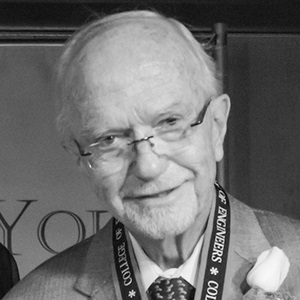
George Simmons is professor emeritus at the University of Idaho and dean emeritus of Seattle University’s College of Science and Engineering. After graduating from Stanford University with his doctorate in 1970 Simmons went to work for NASA as a postdoctoral research associate and later as a senior engineer at Cal Tech-JPL.
In 1975 Simmons returned to U of I where he spent twenty-three years serving as faculty member and chair of the Chemical Engineering department and in several key university administrative positions. Simmons served as assistant vice president for Academic Affairs, associate vice president for Academic Affairs and Research, vice provost for Academic Affairs, Teaching and Undergraduate Studies, interim provost and assistant vice president for Research, before moving to Seattle University in 1998.
As an administrator at U of I, Simmons concentrated efforts on student retention and success. He also drafted policies on patent and copyright, and new admission standards consistent with requirements of State Board of Education.
Simmons is author of publications primarily in the areas of geothermal energy utilization, pyrolysis, high pressure kinetics, and student retention. He holds a patent in solid fuel propulsion.
Over the course of his career Simmons has received several national honors and awards. He is a national honoree of Tau Beta Pi, Phi Kappa Phi, Alpha Sigma Nu and the Golden Key societies. Simmons was selected in 1993, 1984, 1983, and twice in 1981, by senior recipients of the U of I Alumni Award for Excellence as “most influential” faculty member. Simmons is also a member of the American Institute of Chemical Engineers, National Society of Professional Engineers and is a retired Licensed Professional Engineer in the State of Idaho.
He also has a long record of public service. Simmons has served on the advisory board for the Martin Institute for Peace Studies and Conflict Resolution at the U of I since 2014, he is a longtime member of Kiwanis International, served on the Board of Directors for the Washington Idaho Symphony Association and he committed close to a decade of service to the Associated Western Universities Board of Directors and related committees and activities. He currently serves on the advisory board for Washington State PLTW, Project Lead the Way, engineering curricular program for high school students.
Simmons retired from Seattle University as the Howard Wright Chair & Dean of the College of Science and Engineering in 2007. He currently spends his time developing new skills and expertise in renaissance and baroque music. He plays in two renaissance performing groups in Seattle, and Columbia, Maryland. He recently published four complete sets of modern transcriptions of renaissance consort music from the early 1600s.
- Ph.D., Chemical Engineering, Stanford University, 1970
- M.S., Chemical Engineering, University of Idaho, 1966
- B.S., Chemical Engineering, University of Idaho, 1965
Allen R. Stubberud
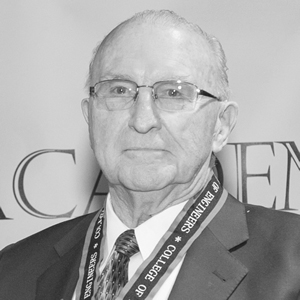
Allen Stubberud is currently professor emeritus in the Department of Electrical Engineering and Computer Science at the University of California, Irvine. He graduated from the University of Idaho as an undergraduate in 1956 with a bachelor's in electrical engineering.
Prior to his accomplished academic career, Stubberud was employed in industry first at General Electric Company as a test engineer, at the Garrett Corporation as an engineering assistant and at both Hughes Aircraft Company and Aerospace Corporation as a member of their technical staffs.
After receiving his master’s and doctorate from the University of California at Los Angeles, Stubberud went to work for the then School of Engineering and Applied Science at UCLA as an assistant professor. In 1969 he took an associate professor position in electrical engineering at the University of California, Irvine (UCI). While at UCI he has served in many administrative positions, notably chair of the Electrical and Computer Engineering Department, associate dean and dean of Engineering.
Stubberud is a registered Professional Engineer in both Electrical Engineering and Control Systems Engineering (California). His academic interests lie in the areas of control systems, estimation theory, neural networks, and fuzzy logic. He is author of over 170 books, book chapters, and technical publications and over 50 technical reports on advanced signal processing techniques, including stochastic processes and estimation, neural network algorithms, genetic programming, adaptive signal processing. He also served on the U.S. Air Force Scientific Advisory Board and on two committees of the NATO Advisory Group on Advanced Research and Development. He has served in numerous positions with several professional/technical organizations, notably as the director of IEEE Region 6, a member of the IEEE Board of Directors.
Throughout his career Stubberud has been engaged in defense related consulting. For forty years he has worked as a consultant for companies such as McDonnell-Douglas Corporation, Jet Propulsion Laboratory, and Northrop Corporation to name only a few.
In 1983 Stubberud was appointed by the President of the United States as chief scientist of the U.S. Air Force. He also served as the director of the then ECSE (currently the Electrical, Communications and Cyber Systems) Division of the National Science Foundation in Washington D.C.
Stubberud is recipient of numerous awards honors and recognition: he is a Fellow of IEEE, IAE, AAAS, AIAA and The New York Academy of Sciences. He has received both the IEEE Centennial and Millennium Medals. He also has twice received the highest decoration U.S. Air Force bestows on a civilian, the U.S. Air Force Exceptional Civilian Service Decoration in 1985 and 1990.
Stubberud is a prolific researcher receiving over $1.5 million in extramural grant funding to serve as primary investigator (PI) and/or co-PI on 27 research projects. As a faculty member, he was dissertation chairman for 46 Ph.D. students and thesis chairman for 56 masters degree students.
- Ph.D., Engineering, University of California, Los Angeles, 1962
- M.S., Engineering, University of California, Los Angeles, 1958
- B.S., Electrical Engineering, University of Idaho, 1956
2014
Donald E. Eddy
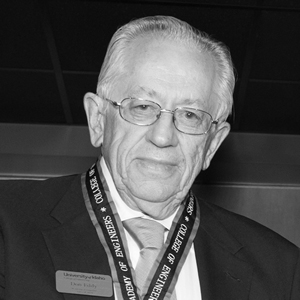
Don Eddy is a retired professional engineer and consults with the aerospace industry. Eddy graduated from the University of Idaho in 1955 in mechanical engineering. He went on to work for the Rocketdyne Division of Rockwell International Corporation for 37 years. Eddy’s expertise is in the design and development of liquid propellant rocket engine turbomachinery, hot gas turbine systems, axial and centrifugal flow pumps, and filter systems. While at Rocketdyne, Eddy worked on the design and development of the Navaho, Jupiter, Thor, Atlas, and Saturn rocket engines.
Eddy has many accomplishments in the rocket engine design and development field but he is most well-known for his work on NASA’s Space Shuttle Program at Rocketdyne. Eddy was the associate program manager for the production of the shuttle main engine. In this role he directed 250 engineers in turbomachinery. Eddy and his team were responsible for the gamut of shuttle main engine design and development including schedule, technical and cost performance, budgeting and all engine components. After retiring from Rocketdyne in 1992 Eddy spent time as an independent consultant for the newly formed Rocketdyne division of the Boeing Corporation. He continued to lend his expertise to the Space Shuttle main engine systems design, the Delta IV vehicle RS-68 engine, and design for advanced rocket engine systems of the RS-83 and 84 Lox-Hydrogen staged combustion cycle engines.
Eddy continues to consult in the aerospace industry. He has worked with Blue Origin, LLC the aerospace company formed by Amazon founder Jeff Bezos to develop technologies to enable human access to space at dramatically lower cost and increased reliability. Eddy most recently worked with Aerojet Rocketdyne as an independent review team member for United State Air Force’s Hydrocarbon Boost Technology Demonstrator (HBTD) and Upper Stage Engine Technology (USET) programs. Eddy and his wife Dolores were married in 1957. They currently live in Woodland Hills, California have three adult daughters, Laura, Linda and Lisa, eight grandchildren and five great-grandchildren.
- B.S., Mechanical Engineering, University of Idaho, 1955
- M.B.A., Wharton School, University of Pennsylvania, 1988
Louis L. Edwards
Deceased July 25, 2016
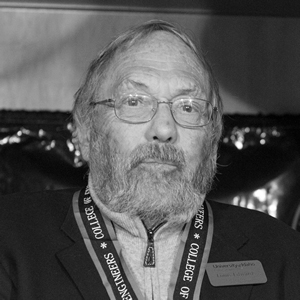
Louis Edwards is a retired University of Idaho professor of chemical engineering. Recruited in 1961 by Mel Jackson, the founding chair of the Department of Chemical and Materials Engineering, “Lou” launched his career at the university as an instructor and also as one of the first doctoral students in the department’s burgeoning graduate program.
Although a rookie in the classroom, Edwards quickly emerged as a student favorite, earning the 1964 Associated Students of the University of Idaho Outstanding Faculty Award. It was the first of several awards professor Edwards received for excellence in teaching during his career. Edwards earned full professor in 1971 and continued to help build the graduate program as a mentor to many masters and doctoral candidates. Even as a full professor, Edwards remained a fixture in the department’s undergraduate program, teaching two of the program’s required courses for nearly five decades. His approach in the classroom has left a lasting impression on countless chemical engineering students.
In addition to Edwards’ teaching accomplishments, he is a two-time recipient of U of I’s Award for Excellence in Scholarship. Edwards has made several noteworthy contributions to the field of chemical engineering. He is an international authority in pulp and paper, authoring close to 120 publications on the subject and serving as a consultant to more than 30 companies worldwide.
In the 1970s, Edwards led the development of a computer software simulation program that became one of the first technologies of its kind in the pulp and paper industry. Today, companies around the world use versions of the program to model and design papermaking processes that are more efficient and environmentally friendly. In the 1980s and 1990s, Edwards spent his summers in Italy, where he continued to work developing a process for turning trash cardboard into new paper rolls. Edwards retired from U of I in June of 2012.
In recognition of his 50 years of inspiring scholarship and service, the College of Engineering has recently created the Lou Edwards Endowed Chair in Chemical Engineering. The fund supports the recruitment and retention of top faculty members who emulate Professor Edwards’s excellence in leadership, teaching and research in the field.
After 53 years of Idaho winters, Edwards and his wife Doris will be moving sunny Newport Beach, California to join their daughter, Katherine, granddaughter and great grandson. They also have a daughter, Elizabeth, who lives with her husband in the Seattle area.
- B.S., Chemical Engineering, Rensselaer Polytechnic Institute, 1958
- M.S., Chemical Engineering, University of Delaware, 1960
- Ph.D., Chemical Engineering, University of Idaho, 1966
Robert M. Griffith
Deceased March 28, 2014

After graduating from the University of Idaho Robert "Bob" Griffith went to work for Kaiser Aluminum Corporation in Spokane as a design engineer and project manager. During his tenure at Kaiser, Griffith became the lead project engineer for Kaiser as they entered the aluminum can business. Griffith oversaw the team that implemented innovative design and precision manufacturing techniques to produce aluminum cans. Griffith was instrumental in developing and patenting such aluminum can production techniques. Griffith was at Kaiser until 1964 when he went to work for ASC, Inc. metal building manufacturers as division manager and then vice president of the international company. Griffith was in charge of the building products business that included overseeing 11 domestic manufacturing centers ranging from Florida to Washington. In this time he also managed ASC’s machine tools division.
In 1979, as the consumer electronics industry was growing Griffith recognized the opportunity and need for precision sheet metal fabrication. After Hewlett-Packed built a plant in Liberty Lake, Wash., Griffith started Accra-Fab a sheet metal fabrication and manufacturing company. During Griffith’s time and founder and president of Accra-Fab, it became one of HP’s largest suppliers of thin gauge aluminum products. Accra-Fab’s success led to the construction of two plants one in Spokane and one in Vancouver, Wash. Accra-Fab grew to design and manufacture a number of products for clients around the world serving a variety of industries from Malaysia to Scotland including electronics, medical, aerospace, military, telecommunications and more. In 1994, Griffith sold Accra-Fab and to this day Accra-Fab is a thriving business.
Griffith was also an avid photographer. In his retirement Griffith pursued photography as a second career and had his work published in several books and magazines. Griffith and his wife Dolores took more than 35 excursions to all seven continents, including Antarctica where Griffith captured inspired photos of the continent’s six species of penguins. Griffith won both the prestigious Nature Slide of the Year and the Wildlife Slide of the Year in the Nature Division of the Photographic Society of America. Griffith allowed the College of Engineering to use his photos for the last five years as the cover photo for our holiday card, including this year.
Sadly Griffith’s health recently deteriorated and he passed away March 28, 2014. We thank Griffith and his wife Dolores for being major supporters of the College of Engineering. Our deepest condolences to the Griffith family.
- B.S., Chemical Engineering, University of Idaho, 1951
James H. Milligan
Deceased 2024
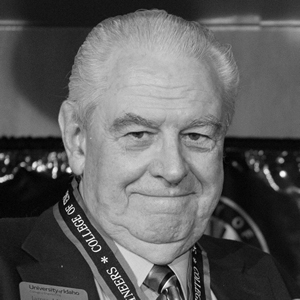
Jim Milligan is a retired, chair, of the University of Idaho, Department of Civil Engineering. Milligan was a professor of Civil Engineering from 1972 until his retirement in 2001. During his tenure at the University of Idaho, Milligan served as professor, department chair, and associate dean of the College of Engineering. As department chair he established and accomplished the goal of having the entire civil engineering faculty registered as professional engineers.
Milligan has been very active on both the national and state boards of professional engineering. He has served on the Idaho Board of Professional Engineers and Professional Land Surveyors for several years and was the most recent board chair. He remains active on the National Council of Examiners for Engineers and Surveyors by serving as a member of the Exams for Professional Engineers Committee and the Civil Engineering Examination Subcommittee.
Milligan is also a member of the Idaho Society of Professional Engineers, the American Society of Civil Engineers, Phi Kappa Phi, National Association of Groundwater Engineers and Scientists and the American Society for Engineering Education. In 1996, Milligan received the Governor’s State of Idaho Recognition Award for meritorious services rendered during the flooding disaster in North Idaho.
In 2004, Jim received the Idaho Excellence in Engineering Educator Award. His selection was made by consensus by the Idaho Society of Professional Engineers. This peer-nominated honor recognizes engineering educators who have had a significant impact on the engineering profession in Idaho.
Milligan and his wife Bonnie live in Moscow, Idaho and recently celebrated their 52 wedding anniversary. They have four children and fifteen grand-children who live across the globe. Robert, their oldest son is a chemical engineer, working as chief process engineer on an $8 billion plant being constructed in Saudi Arabia. Milligan’s two younger sons, Sean and Jarrod, are both civil engineers and work for the U.S. Army Corps of Engineers in the Walla Walla, Wash., district. Janice their daughter is not an engineer, but coincidentally is married to one and lives in Utah.
- B.S., Civil Engineering, Utah State University, 1963
- Ph.D., Civil Engineering, Utah State University, 1969
James C. Okeson

Jim Okeson graduated from the University of Idaho as a chemical engineer in 1962 and not long afterwards received orders from the U.S. Navy to report to submarine school. At the same time Okeson earned a Fulbright Scholarship to study in the Netherlands. Okeson was able to postpone his orders, marry his wife Jean and study in Holland for a year, where they had their first son, Kevin.
After returning from the Netherlands Okeson began the “nuclear pipeline” submarine prototype training program near Idaho Falls. Upon completion of his training Okeson was assigned to the submarine USS Kamehameha. After completing two patrols with the Kamehameha (one was over 70 days continuously submerged and undetected, a personal record), Okeson was assigned to be engineer officer of the USS James Monroe, a ballistic missile submarine. But it was Okeson’s next commission as executive officer on the fast attack nuclear submarine the USS Barb, that he was involved in a plot straight out of Hollywood. In 1977, a long-range B-52 bomber caught in the path of a typhoon crashed off of the coast of Guam. The USS Barb already submerged raced to the location unaffected by the typhoon until it surfaced in waters with up to 40 foot swells. For almost 48 hours the crew of the Barb demonstrated superb seamanship to not only find but rescue all five B-52 crewmembers who were separated on three different rafts in violent waters.
After the leading a successful rescue, Okeson received his first commanding officer commission in 1979. Okeson was assigned the USS Billfish nuclear attack submarine. He served as the Billfish commander for five years until being assigned commander of the US Navy’s Nuclear Power Training Unit (NPTU) in Idaho Falls in 1984. Okeson spent three years at NPTU before receiving his final commission as commander of Submarine Squadron Ten (SubRon 10) in New London, Connecticut. Okeson retired from the Navy in 1989. His distinguished 27 year career earned Okeson the Legion of Merit Award and commendation from President George H.W. Bush.
Following his service in the Navy, Okeson returned to Idaho to work for the Idaho National Engineering Laboratory (INEL) now INL. He worked with defense contractors Edgerton, Germeshausen and Grier (EG&G), Lockheed Martin and finally Bechtel. As general manager of EG&G, Okeson was assigned to managed the Advanced Test Reactor, the nation’s largest materials test reactor for two years. Okeson led the technical team which resolved the daunting political, technical, emotional, and legal task of recovery and removal of buried nuclear waste materials at INEL.
In 2004, Okeson completed his first marathon, since then he has finished 14 marathons all over the country and world, ranging from the eastern shore of Lake Michigan to the Great Wall of China. Okeson lives with his wife Jean in St. George, Utah. They are the parents of four children and 20 grandchildren, ranging in age from 25 to 4. Unfortunately, Okeson cannot attend the Academy of Engineers induction ceremony, he is busy traveling checking locations off his bucket list and is currently in South Africa.
- B.S., Chemical Engineering, University of Idaho, 1962
- University of Idaho Fulbright Scholar
James H. Ritter
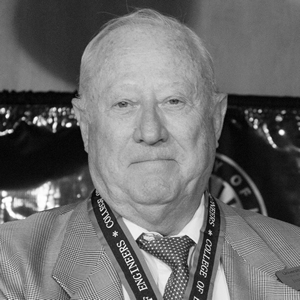
Jim Ritter is retired, president, chairman and CEO of Aviation Manufacturing Group LLC. Ritter currently is working with the Boise Angel Alliance to help fund “seed stage” startup companies.
After graduating from the University of Idaho with a master’s degree in mechanical engineering in 1971, Ritter worked for General Electric as a manager in the manufacturing of engine parts in Seattle. Ritter became quality manager of the service shop facility that designed and manufactured components to support commercial aircraft production, cal-rod heating systems for domestic and international land and sea based nuclear reactors. In this capacity Ritter developed the first known quality operating manual for aerospace and nuclear regulatory agency controlled systems.
Ritter became the vice president for quality assurance at Teledyne CAE where he designed, manufactured, and tested un-manned engines for “black” programs used to support strategic “nuclear” delivery systems.
In 1987, Ritter became president, CEO of Teledyne Neosho which overhauled and repaired commercial-regional airline and military engines and components.
In 1992, Ritter became vice chairmen, CEO of FNMI of Columbia, South Carolina, a U.S. military small arms manufacturing company. His charge as CEO was to implement a financial turnaround by supporting the group to acquire weapons systems manufacturers or to develop joint co-production agreements. By 1993, under Ritter’s leadership FNMI established profitability and secured 90% of the U.S. small arms production contracts.
Ritter is most recently the chairman, CEO of Aviation Manufacturing Group LLC, out of Yankton, South Dakota. Aviation Manufacturing Group, LLC, manufactures flight safety and flight-critical parts, components, and assemblies for the aerospace industry. The company offers parts and component subassemblies for flight controls, thrust reversers, and airframe structures, assemblies used in flap and slat drives, fixed wing and rotary wing flight control assemblies, and tie and control rods for aircraft structures and sub-systems. It also offers non-standard products, including control tubes and assemblies, track liners, swaged tubes, and various precision machined parts for commercial aircraft applications. Ritter has grown Aviation Manufacturing Group’s customer base to include Boeing, Goodrich Aero Structures, Honeywell, Korean Air, Triumph-Vought Aircraft, Honda, and Bell Textron Helicopter, among many others. Ritter and his wife Susan Ritter have been married for 39 years. They live in Eagle and McCall, Idaho. They have two children. Son, Michael, is a graduate of Rose-Hulman Institute of Technology and daughter, Kathryn Anne, is director and technology transfer officer at Boise State University.
- B.S., Mechanical Engineering, University of Idaho, 1968
- M.S., Mechanical Engineering, University of Idaho, 1971
Frank J. Thomas
Deceased April 20, 2019

Frank Thomas is founder and former president of the Pacific-Sierra Research Corporation. He is currently retired but continues to serve on Pacific-Sierra Research’s Board of Directors.
After graduating from the University of Idaho Thomas worked for the Sandia Corporation until 1956. In 1957 Thomas went to work for defense contractor Aerojet General Nucleonics, as a program manager, where he was responsible for the design of the ML-1 nuclear power plant, the first closed-cycle gas-turbine power plant in the United States.
Thomas served as an assistant director of research and engineering for the United States Office of the Secretary of Defense (ODDRE) from 1964-67 in which capacity he evaluated defense programs to ensure technical, schedule, and funding realism. In 1967, Thomas joined the RAND Corporation as the senior physical scientist working on research in nuclear physics and arms-control verification.
In 1971, Thomas founded Pacific-Sierra Research Corporation. As president he directed the company’s research in diverse scientific areas, including information technology, communications, software development, optics, epidemiology, and arms-control technology. After growing the company from three to over 300 people, Thomas retired in 1998 and has worked as an independent contractor up until recently.
During his career Thomas also served on a number of U.S. government technical and policy panels and committees. Of note are his chairmanship of the Department of Energy’s Hydrotest Program Assessment Panel and DARPA’s Panel on Evaluation of Treaty Evasion. For his service, Thomas was awarded the Secretary of Defense’s Meritorious Civilian Service award.
Thomas and his wife Carol Thomas recently celebrated their 65th wedding anniversary. They currently reside in Malibu, California and have three children, four grandchildren and four great grandchildren.
- B.S., Electrical Engineering, University of Idaho, 1952
- M.S., Nuclear Engineering, University of California at Berkeley, 1957
2013
Harry Cougher
View ProfilePaul May
View ProfileSatish Pamidi
View ProfileLyle Parks
View ProfileCharles Peterson
View ProfileMargrit von Braun
View ProfileHarry Cougher
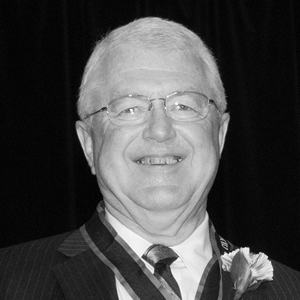
Harry Cougher’s career was solidly based in the Silver Valley of Northern Idaho. During his career he held a variety of senior positions with the following companies; 17 years with The Bunker Hill Company, 17 years with the Sunshine Mining Company, and six years with the Coeur d’Alene Mines Corporation. As VP of operations for Coeur d’Alene, he was instrumental in the building of the Kensington Mine, in Juneau. Additionally, Cougher held the position of executive director of Central Mine Rescue for nearly half his career. He was a very young VP, and excelled at both technical aspects and operational aspects of mining, which is sometimes a rarity. Cougher is widely regarded by his peers as a “miner’s miner” and one of the best operators in the country. After spending 40 years in various Silver Valley mine shafts, Harry Franklin Cougher won the prestigious William Lawrence Saunders Gold Medal Award in 2010.
As one of the heroes of the Sunshine Mine Fire of 1972 he participated in several reconnaissance missions, remaining active in the search and rescue operation for 13 days until the last victims were recovered. His actions during the disaster later earned the man the “State of Idaho Certificate of Commendation” in 1972. In 1977 Cougher became Bunker Hill’s Manager of Mining in the Coeur d’Alene mining district.
Cougher left the Silver Valley in 1983 for the dry semi-deserts of Amarillo, Texas where he found employment as the vice president of operations for Pioneer Nuclear. After a year he returned to the Silver Valley as the mine manager for the Sunshine Mining Company.
He was general manager of Sunshine’s Kellogg Division, changing to vice president/general manager, then to senior vice president of mining and finally chief operating officer.
In November 2001, after his second 17-year stint, he changed companies again, accepting a position with Coeur d’Alene Mines Company as the manager of the Galena, Coeur and Caladay mines.
When Coeur d’Alene sold its Silver Valley Mining Operations in May, 2006 Cougher finally hung up his miner’s hat and retired from the valley.
He was a career-long member of the American Institute of Mining Engineers and SME, the Northwest Mining Association and The Idaho Mining Association. Cougher served as a trustee of the Northwest Mining Association from 1986 to 1988 while also serving on the board of directors of the Idaho Mining Association representing three different companies: the Bunker Hill Co. (1980-1981), Sunshine Mining Co. (1996-2000) and Coeur d’Alene Mines (2002-2006). He also held the position of president twice from 1998 to 1999 and from 2003 to 2005.
- B.S., Mining Engineering, University of Idaho, 1966
Wayne DeWitt
Deceased Dec. 26, 2017
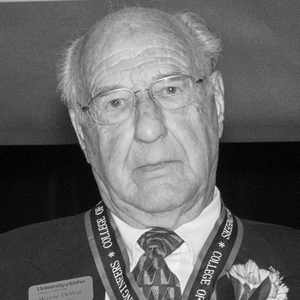
Shortly after receiving his degree from the University of Idaho, Wayne DeWitt joined the Marine Corp. His initial training was at Quantico, Va., where he received his commission as a second lieutenant in the fall of 1953. After further training at Quantico, Va., he was sent to Japan and Korea for a year.
DeWitt accepted an offer from Allis Chalmers in Milwaukee, Wis. The job offered a two year training program for engineers where he worked in several departments. In the hydraulic turbine department, DeWitt and a company lead man erected the first Kaplan type turbine on the erection floor, before shipment to the Dallas Dam.
Next, DeWitt accepted a job with Willamette Western in Portland, Ore., where he entered into foundation work which was his lifetime support system. He left eight years later as a vice president of the Foundation Division having opened and managed offices in Portland, Seattle, San Francisco and Los Angeles.
DeWitt obtained his first Patent with Willamette Western Co. through a bid project from the state of Oregon. He had the shop build a rather simple tool to extract the hundreds of berthing wood piles that required no men to attach or release the extracted pile and sent the tool out to the job. The foreman called after a couple of hours and said “Wayne you had better patent this”. Over several years, Vulcan Iron Works, Nashville, paid DeWitt royalties for this patent.
DeWitt joined a local bridge construction company and his contributions were knowledge, contacts, good reputation and respect of the general contractors. The bridge company contracted in the Oregon and Washington areas and had a small amount of foundation equipment. After eighteen months in business together, DeWitt purchased it and changed the name of the company to DeWitt Construction.
DeWitt obtained several patents prior to the award of the Driven Grout Patent. The patent for Auger Cast Pile (owned by Intrusion Prepac Company) expired, so he installed Auger Cast Pile. He believed there was a better way, so he created the Driven Grout Pile. It is now universally accepted and specified by engineers in the Portland and Seattle markets. It is much less costly, carries more load and materials are immediately available.
- B.S., Civil Engineering, University of Idaho, 1953
Paul May
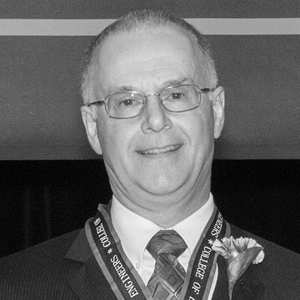
The biography of Paul May summarizes the accomplishments of an individual from a small town who was committed to succeed in life. May grew up in Pierce, Idaho, and graduated from Pierce High School in a senior class of 13 graduates. He then entered the engineering program at the University of Idaho and with the strong influence from his professors, including Henry Silha, Ted Norgard, Jasper Avery and Richard Jacobsen, he graduated in 1969, cum laude, with a bachelor's mechanical engineering degree.
May immediately joined Wagstaff Machine Works (later renamed to Wagstaff Engineering, Inc. and again renamed to Wagstaff, Inc.), a small manufacturing company of 35 employees that was just beginning to make an impact in the aluminum industry with the direct chill casting equipment that they were designing and manufacturing. The company has had a commendable growth pattern since that time and now has approximately 350 employees worldwide and has provided casting equipment for aluminum plants in 55 foreign countries as well as the entire aluminum industry in the United States. Currently the company employs approximately 50 graduate engineers with about a quarter of them U of I graduates. See Wagstaff’s website at wagstaff.com for further details.
May started as a design engineer for Wagstaff and shared sales duties as well. During the period from 1969 to 1990, he served in the positions of chief engineer, sales manager and then 12 years as plant manager. In 1990, he left Wagstaff to become the operations manager of MacKay Manufacturing Inc. in the Spokane Valley. The company went through extensive growth in the years that May was there.
In 2002, May rejoined Wagstaff as vice president of manufacturing operations. He later served as chief operating officer and his last four and a half years as chief executive officer. With his management and leadership skills he redirected the corporate leadership which had become disoriented prior to his return. May retired from Wagstaff in July, 2011.
- B.S., Mechanical Engineering, University of Idaho, 1969
Satish Pamidi
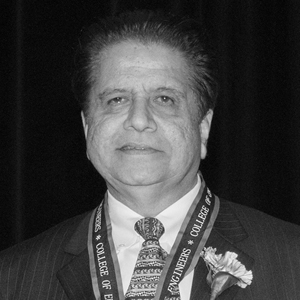
Satish Pamidi was born in Tumkur, India and raised in Mysore, India. His father was an accounts officer for Indian Railways, while his mother was a homemaker who raised their five sons and three daughters. As a teenager, Pamidi had ambitions of moving to the United States to attend graduate school. After completing his undergraduate studies in India, he became the first person in his family to move to the United States.
Pamidi earned his bachelor’s in electrical engineering from the University of Mysore in India. After graduation he taught for two years at the university, and then moved to the United States to complete a semester of graduate courses at Brigham Young University in Utah. He was admitted to the University of Idaho in 1969 with a teaching assistantship, and graduated with a master's in electrical engineering in 1971.
After graduating from U of I, Pamidi worked for several engineering firms in Chicago where he was responsible for designing electrical systems for a number of prominent buildings and hospitals throughout the Midwest. In 1979, he moved to San Francisco to join Skidmore, Owings & Merrill, a world renowned architectural and engineering firm. He took on the responsibility of designing electrical systems for a number of high-rise structures throughout the world including Russia, Indonesia, and Singapore. During this time, he earned a Certificate of Business Management from the University of California, Berkeley. In 1986, he became an associate partner at Skidmore, Owings & Merrill, heading the firm’s West Coast Electrical and Mechanical division.
In 1991, Pamidi was presented with an opportunity to establish and oversee the electrical engineering department for Ajmani & Associates, an engineering firm in San Francisco. Within two years, Ajmani & Associates was rebranded as Ajmani & Pamidi. Five years later, Pamidi acquired the firm and became President and CEO. Over the past twenty-five years, Ajmani & Pamidi has designed electrical and mechanical systems for several prominent projects including the San Francisco International Airport Terminal, San Francisco Giants Baseball Stadium (AT&T Park), Oakland Raiders Football Stadium (O.co Coliseum), Golden State Warriors Basketball Arena (Oracle Arena), San Francisco’s Moscone Convention Center (the City’s largest convention and exhibition complex), as well as several theaters, court houses, museums, residential buildings and high-rise offices. Many of the firm’s projects have been recipients of numerous awards and distinctions. Pamidi is active in several professional engineering organizations and is a registered professional engineer in multiple states.
Pamidi and his wife Uma reside in Danville, California. Uma has been a pre-school teacher for over 20 years. Their son, and only child, Shaam is a marketing executive in San Francisco.
- M.S., Electrical Engineering, University of Idaho, 1971
Lyle Parks
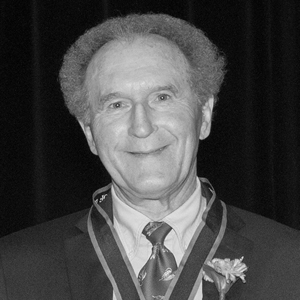
Lyle Parks’ career started as a research engineer for American Potato Co. (now Basic American Foods, Inc.) in Blackfoot, Idaho. The work involved developing dehydrated product ideas and processes associated with the product ideas. He was involved in all areas of technical and production activities with a close interface with the marketing and sales organizations. During his early research and development tenure, Parks developed and /or patented the three most successful dehydrated potato products in use in the retail and food service markets from the late 1960’s till his retirement in 1997.
In 1979, Parks became vice president of engineering and directed the company’s design engineering, process engineering, and environmental activities. In 1986, he became vice president of Research and Development. His responsibility was to direct all the new product/process activities of Basic American Foods, including concept development, product and process development, pilot plant operations, and patent/ technology protection.
As a vice president, Parks was a member of BAF’s executive committee. He was a long time member of the Institute of Food Technologists.
Parks and his wife Sharon contributed regularly to education at the University of Idaho during his career at Basic American Foods. Upon retirement, the Parks ‘ donated appreciated stock to U of I in the form of a “charitable remainder trust”. The Parks’ designated that upon their death, the income from the trust would be used for scholarship(s) for Kendrick High School graduates and funding for the Engineering and Agriculture and Life Sciences Colleges at U of I. Parks felt this was a very appropriate to gift the two institutions that so adequately prepared him for his career.
- Program for Management Development, Harvard Business School, 1983
- B.S., Chemical Engineering, University of Idaho, 1963
Charles Peterson
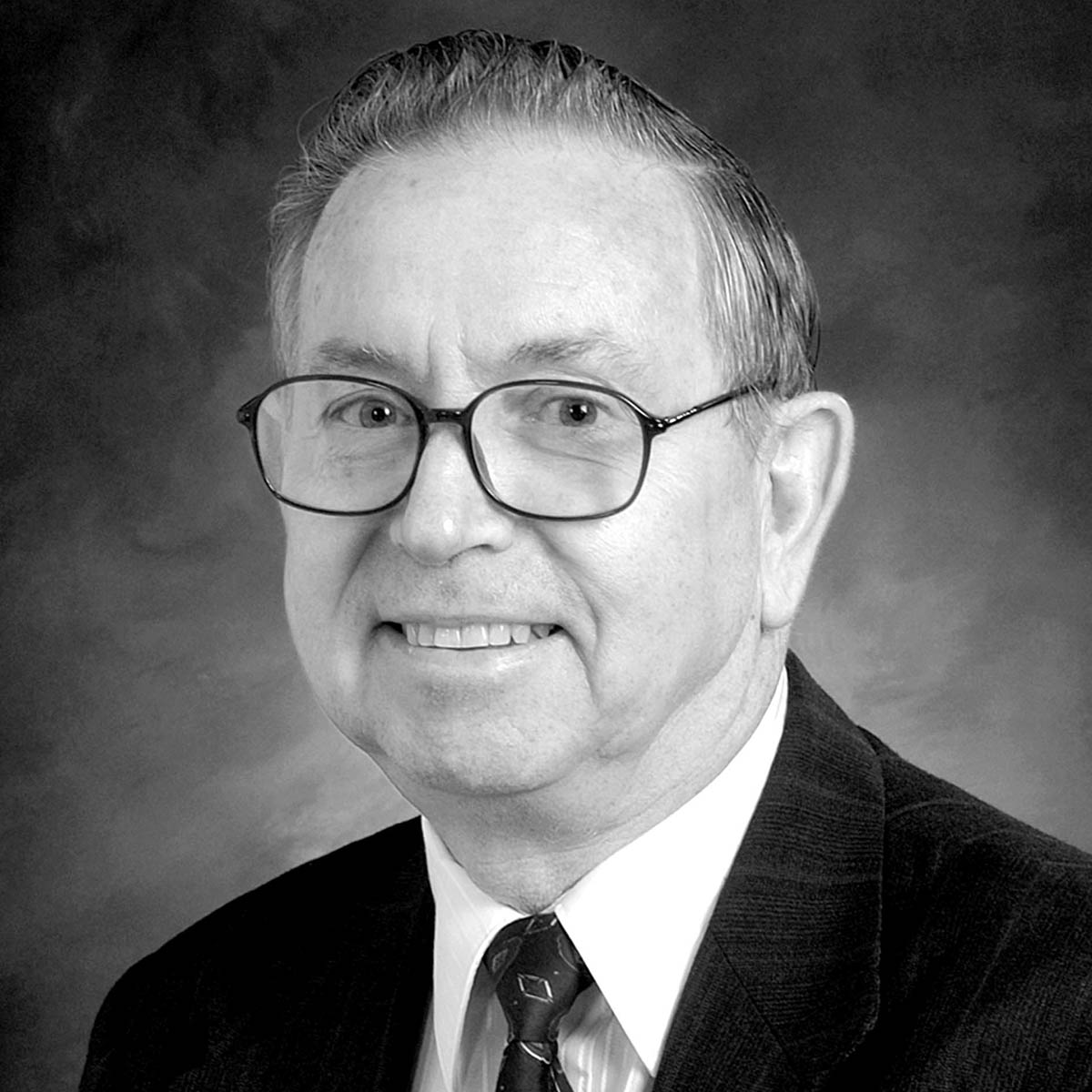
Charles Peterson was a professor, interim department chair for Biological and Agricultural Engineering, and interim dean at the University of Idaho. He began researching vegetable oil for diesel fuel in 1979. Now, Peterson is recognized worldwide as the pioneer in biodiesel research. Peterson’s work in developing biodiesel as an alternative fuel earned him and the University of Idaho the 2002 Innovator Award, which was presented on August 27, 2002 in Boise. He has collaborated with over 49 coauthors from 1965-2006 and currently has 18 publications.
Some of Peterson's major accomplishments include teaching awards, research accomplishments in harvesting and storage of sugar beets and potatoes; equipment for erosion control in the Palouse; equipment for precision agriculture; often considered a pioneer in biodiesel (vegetable alternative to diesel fuel) research and development in the US. He is a registered Professional Engineer, American Society of Agricultural and Biological Engineers Fellow; two patents. Significant Recognitions Include: Phi Kappa Phi, Distinguished Faculty Award, 1997; Idaho Business Review Innovator of the Year Award, 2002; Idaho Society of Professional Engineers Excellence in Engineering Education Award, 2006.
Peterson enjoyed living in Moscow and says it is a good place to raise a family. Working at the University of Idaho was a stimulating experience for him. He enjoyed the students and the many faculty and staff that had come and gone over the years.
- Ph.D., Engineering Science, Washington State University, 1973
- M.S., Agricultural Engineering, University of Idaho, 1966
- B.S., Agricultural Engineering, University of Idaho, 1961
Margrit von Braun
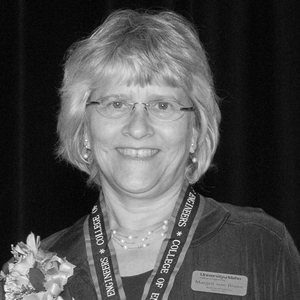
TerraGraphics specializes in providing high quality environmental science and engineering services to meet our clients’ needs on complex environmental projects. Our experienced scientists and engineers utilize a multi-disciplinary approach and work closely with applicable regulatory agencies to ensure projects progress smoothly while avoiding unnecessary delays.
For hazardous and solid waste, cleanup, closure, and development projects, TerraGraphics provides: Phase I Environmental Site Assessments (ESAs) Phase II ESA and site characterization services Human health risk assessments and feasibility studies Database management, GIS, and mapping Remedial action alternative analyses Permitting and regulatory compliance assistance Remedial action oversight and confirmation Public involvement and education Since 1984, our personnel have completed hundreds of ESAs, site characterization projects, and remedial action oversight projects for lending institutions at the local and national levels, universities, hospitals, insurance companies, private industry, real estate agencies, inner-city housing projects, Indian reservations, petroleum industry sites, solid and hazardous waste landfills, railroad properties, agricultural chemical storage and distribution facilities, and the Environmental Protection Agency (EPA).
TerraGraphics has evaluated properties ranging from a small parcel of farmland to a Superfund site covering 21 square miles. Our work has taken us throughout the United States and into Canada, Russia, and Australia. TerraGraphics’ familiarity with this region of the country, however, as well our vast network of information sources, enables us to put together teams to tackle complex environmental projects with an emphasis on meeting requirements unique to the northwest.
The planet’s environmental challenges are global but solutions to some of the most urgent issues depend on a small group of dedicated individuals and organizations. The Green Star Awards, launched by the United Nations and Green Cross International, shines a light on the often heroic efforts being taken in one of the most difficult and sometimes dangerous realms: the interface of environment and disasters. The second annual Green Star award ceremony was held in Bern, Switzerland, recognizing six outstanding environmental emergency leaders selected by an international panel of judges. The Blacksmith Institute, TerraGraphics and the Dutch arm of Doctors Without Borders got their Green Star for efforts to resolve a largely ignored crisis killing children in northern Nigeria. Here, many residents are forced to survive through unsafe forms of artisanal mining. The by-products of their labors contaminate food, water, and in some villages, are wiping out a generation of children. These three organizations are working to treat the cases of acute poisoning, make livelihoods safer and villages cleaner to stem the wave of sickness and death plaguing the region.
- Ph.D., Environmental Engineering, Washington State University, 1989
- M. Engr. Civil Engineering, University of Idaho, 1980
- B.S. Engineering Mechanics, Georgia Tech, 1974
2012
Jeffrey S. Ashby
View ProfileDouglas A. Blum
View ProfileWilliam C. Bowes
View ProfileRobert C. Harrell
View ProfileKaren L. Higgins
View ProfileJack C. Swearengen
View ProfileVirginia B. Valentine
View ProfileJeffrey S. Ashby
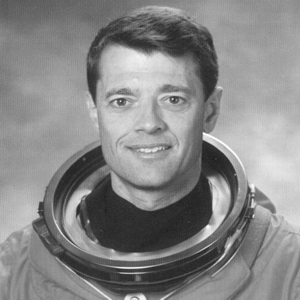
Retired astronaut Jeffrey Ashby graduated from Evergreen High School, Evergreen, Colo., in 1972; received a bachelor's degree in mechanical engineering from the University of Idaho in 1976, and a master's in aviation systems from the University of Tennessee in 1993. Ashby is a graduate of the Naval Test Pilot School and the Naval Fighter Weapons School (Top Gun).
In his 25-year Navy career, Ashby accumulated over 7,000 flight hours and 1,000 aircraft carrier landings during six aircraft carrier deployments. As a test pilot, he directed testing of the FA-18 Hornet’s smart weapons, night vision, and electronic warfare systems. Ashby logged 65 combat missions in the FA-18 during Operations Desert Storm and Southern Watch in Iraq, and Operation Continue Hope in Somalia before serving as the commanding officer of Strike Fighter Squadron 94 aboard the USS Abraham Lincoln — under his leadership, VFA-94 earned the coveted Battle “E” Award designating it as the Navy’s top FA-18 squadron in 1994. He reported to the Johnson Space Center for astronaut duties in 1995, completing three space missions, with 436 orbits around the Earth and over 660 hours in zero G. After a four-year special assignment to the Headquarters, Air Force Space Command in Colorado Springs, Colo., Ashby joined Alliant Tech Systems (AT K) Space Systems Group in 2008 as the vice president of business development.
In 1999, Ashby was the pilot on Space Shuttle Columbia. The primary objective of this mission was to deploy the Chandra X-ray Observatory. Measuring 45 feet long, Chandra is the largest satellite the shuttle has ever launched. It is the most sophisticated x-ray observatory to date allowing scientists to study exotic phenomena such as exploding stars, quasars, and black holes.
In 2001, he served as pilot aboard Space Shuttle Endeavour on the sixth assembly flight of the International Space Station. During this complex mission, Ashby operated the shuttle’s robotic arm to transfer Canadarm2 from the shuttle payload bay to the space station. Two space walks were performed to activate the station’s robotic arm enabling it to be used for future assembly tasks. After undocking Endeavour, he flew a unique profile around the station to capture some of the images seen in the IMAX-3D film “The International Space Station.
In 2002, Ashby was the mission commander of Space Shuttle Atlantis on the ninth assembly flight of the International Space Station. The crew installed the 15-ton Integrated Truss Segment S1 to the starboard side of the space station. Three space walks were performed to activate the truss, and prepare for solar arrays which will power future science modules. STS-112 was the first mission to fly the “shuttlecam” which captured dramatic views from Atlantis as the shuttle left the planet. Captain Ashby was a recipient of the Defense Superior Service Medal; Legion of Merit; Distinguished Flying Cross; Defense Meritorious Service Medal; Meritorious Service Medal; four Navy Air Medals; two Navy Commendation Medals; Navy Achievement Medal; Navy Attack Aviator of the Year 1991; NASA Outstanding Leadership Medal; NASA Exceptional Service Medal; and three NASA Space Flight Medals.
Ashby was raised in the Rocky Mountains where he developed a love for skiing, soaring, backpacking and fly-fishing. Ashby and his wife, Paige, share their home with two spoiled dogs.
- B.S., Mechanical Engineering, 1977
- M.S., Aviation Systems, 1993
- United States Naval Fighter Weapons School/Naval Test Pilot School, 1986
Forrest M. Bird
Deceased Aug. 2, 2015
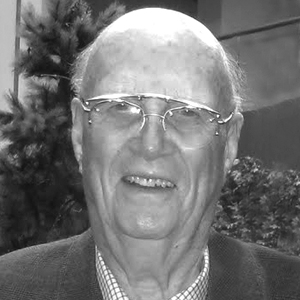
Forrest Bird was born in Stoughton, Massachusetts, on June 9, 1921. Bird became a pilot at an early age due to the encouragement of his father, a World War I pilot, and from meeting Orville Wright at an early age. He performed his first solo flight at age 14; by age 16, he was working to obtain multiple major pilot certifications. Bird enlisted with the United States Army Air Corps, and entered active duty in 1941 as a technical air training officer. This rank, combined with the onset of World War II, gave him the opportunity to pilot almost every aircraft in service including early jet aircraft and helicopters.
By 1955, after having attended numerous medical schools and completed diverse residencies, he developed the prototype Bird Universal Medical Respirator for acute or chronic cardiopulmonary care. He tested the device by traveling in his own airplanes to medical schools and asking doctors for their most ill patients. In each case, known therapies had failed and the patient was expected to succumb to cardiopulmonary failure. Bird then invented the Baby Bird® respirator for infants that helped reduce mortality rates from 70 to less than ten percent for infants with respiratory problems.
A true inventor and entrepreneur, Bird holds more than 200 patents and founded Bird Corporation in 1954 and now is the founder and owner of Percussionarie Corporation based in Sandpoint, Idaho. Based on his research, the company developed a number of advanced breathing-related devices, including the Mark 7® Respirator, which provides the patient with volume ventilation and is still in use around the world.
Bird won the Lifetime Scientific Achievement Award in 1985 and received another one in September 2005. He continues to contribute to the field of pulmonary science by participating in the development of the VDR, a ventilator that permits management of the most challenging patients including ARDS, Trauma and inhalation injury. In 1995, Bird was inducted into the National Inventors Hall of Fame; he is still working with their research teams. He was named “Inventor of the Week” by MIT in February 2001.
Bird is president of Bird Space Technology in Sandpoint, Idaho. He and his wife, Pamela Bird, are founders of the Bird Aviation Museum and Invention Center, located on their northern Idaho ranch. This unique aero-medical museum features a rotating collection of more than 20 unique aircraft, rare vintage cars and a display of inventions from Bird and others.
Bird has been honored with several prestigious awards, including the Presidential Citizens Medal in 2008, presented by President George W. Bush in a ceremony in the Oval Office. This special award honors those who have served the country in extraordinary ways and has only been presented to approximately 100 other citizens to date. Bird visited the Oval Office again in 2009, when he received the National Medal of Technology and Innovation from President Barack Obama, who said of Bird: “Inventors are national icons, embodying the very best of American ingenuity and inspire a new generation of thinkers and innovators. Their extraordinary achievements strengthen our nation every day — not just intellectually and technologically, but also economically, by helping create new industries and opportunities that others before them could never have imagined.
The degree of Doctor of Science was conferred upon Bird by the University of Idaho in 2011.
Aviator, innovator, entrepreneur, scientist, professor, physician, veteran overall Renaissance man, Forrest Morton Bird died Sunday, August 2, 2015 at the age of 94 at his home in Sagle, Idaho. Obituary written by his wife Pamela Bird (pdf).
Deceased Aug. 2, 2015h
- B.S., Agricultural Engineering
- M.D., 1940s
- Ph.D., 1976
- Four Honorary Doctorates
Douglas A. Blum
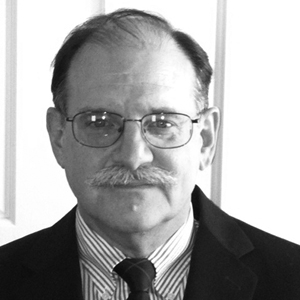
Douglas Blum is currently the executive sponsor for several projects and programs throughout North America for Oracle USA Inc. This portfolio includes engagements from Oracle’s Public Sector Division and programs inherited through Oracle’s acquisition of Sun. He had been advising the Oracle Corporate offices on the establishment of the Project Management Office and related activities for the Integration of Sun into Oracle. Earlier, he served as the program executive from Oracle for the Cash 4 Clunkers U.S. national program working with DOT, NHTSA and the FAA . Prior to that, he was designated as the program executive from Oracle Consulting assigned to support all consulting delivery to the United States Air Force, with the primary responsibility as the Oracle Program Director reporting to the AFPMO ECSS Program Director.
Blum joined Oracle in Norway in 1994 responsible for many pan-European implementations and was the director for the project management service line and community in the Oracle Scandinavian offices. Blum joined Oracle North America in 1996 and served as the vice president for the Global Project Management service line in Oracle Consulting. He helped establish Oracle Consulting’s connection with the Project Management Institute (PMI) and participated for one term on the newly formed Corporate Executive Counsel as Oracle’s representative. Blum has been with the Public Sector for ten years and in his current role as public sector consulting program executive and is assigned to the largest and/or the most strategic programs in the portfolio. Blum has received several performance awards and recognitions within Oracle Consulting, including the executive service line leader and Oracle consulting senior director of the year awards.
Prior to Oracle, Blum worked in Norway primarily as a director for an international operations division, responsible for projects in the former Soviet Union, India, Pakistan, and several pan-European programs within Information Technology.
Blum was an NCO in the U.S. Marine Corps and served in Vietnam and with the U.S. Embassies of Budapest, Hungary; Moscow U.S.S.R. and Oslo, Norway. After an honorable discharge from the U.S. Marine Corps, Blum received an associates of science degree in Forest Technology from North Idaho College and worked for several years in Forestry in northwestern Montana. Blum received his bachelor's in civil engineering from the University of Idaho in 1984. He studied project management curriculum at the University of Trondheim in Norway.
Blum resides with his wife Anne Catherine outside of Rochester, New York and has two grown daughters, Corrine and Jacqueline, who are now establishing their own careers in business and consulting.
- B.S., Civil Engineering, 1984
William C. Bowes
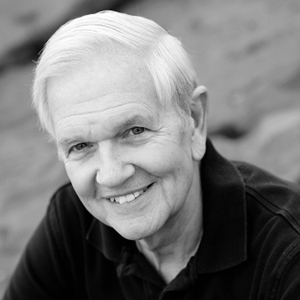
William Bowes is a retired Navy vice admiral, having served 33 years in the Navy in numerous operational and acquisition assignments. As a vice admiral he served as the commander of the Naval Air Systems Command, the principal deputy assistant secretary of the Navy for Research, Development and Acquisition (RDA), and the acting assistant secretary of the Navy for RDA.
As a naval aviator, he commanded an A-7E squadron, flew 350 combat missions during the Vietnam conflict and has flown over 5,000 hours in more than 50 different United States and foreign military aircraft types. He is an accomplished test pilot and program manager. He served as the program manager for the F-14 and Phoenix missile programs, the Joint Cruise Missiles Project, which developed and deployed the Tomahawk cruise missile, and was the first director of DOD’s Joint Unmanned Aerial Vehicles Project.
After retiring from the Navy, Bowes joined Hughes Aircraft as a senior vice president and deputy general manager of the newly forming Sensors and Communications Sector. After Hughes was acquired by Raytheon, Bowes joined Litton Industries as the vice president of Corporate Strategic Planning, and subsequently led the creation of the Military Aircraft Electronics Systems business unit after Litton was acquired by Northrop Grumman.
Since retiring from Northrop Grumman he has served as a director on a number of public company, private company and non-profit boards. Bowes currently serves as a director on the boards of Cobham Defense Systems, R&F Products and the Carnegie Mellon University Software Engineering Institute. Bowes is the vice chairman of the Naval Research Advisory Committee. He is a fellow in the Society of Experimental Test Pilots (SETP), a member of the Golden Eagles, a member of the University of Idaho Alumni Hall of Fame, and he has received numerous awards during his career, including the AIAA National Quality Management Award, the SETP Doolittle Aerospace Management Excellence Award, the Defense Distinguished Service Medal, two Navy Distinguished Service Medals, three Legions of Merit, three Distinguished Flying Crosses, thirty-six Air Medals and eight Navy Commendation Medals.
Bowes holds a bachelor's in chemical engineering from U of I, a master's in systems acquisition management from the Navy Postgraduate School, and he is a graduate of the U.S. Navy Test Pilot School. He is a certified director from the Director Training and Certification Program at the UCLA Anderson School of Management.
- B.S., Chemical Engineering, 1963
- United States Naval Test Pilot School, 1968
- M.S., Systems Acquisition Management at Naval Postgraduate School, 1974
Jess S. Haldeman
Deceased Feb. 12, 2007 (posthumously awarded)
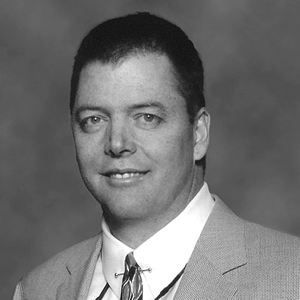
Jess Haldeman was born in McCall, Idaho, in 1960 where he grew-up with a great love and respect for nature and in particular the Rocky Mountains that surrounded him. During his high school years Haldeman showed an innate talent for math and science portending his future success.
Haldeman attended Boise State in 1979 as a freshman, transferred to Oklahoma to study chemical engineering and in 1981 transferred to the University of Idaho to be closer to his future wife Dana, who was attending Spokane College. They were married in August of 1983.
While at the U of I, Haldeman was involved in a National Science Foundation-funded project that involved constructing and monitoring roofs at a range of angles to see which would hold up better during heavy snowfall. Haldeman was excited to participate and always went that extra mile to find the answer to construction problems — even borrowing equipment from his father’s construction company, Haldeman and Williamson. The study went so well that the results are still referenced today in the International Building Code.
In 1985, Haldeman graduated from the U of I with a bachelor’s in Civil and Structural Engineering and earned a master’s one year later. During college, Haldeman also enjoyed playing golf and skiing.
After graduation, Haldeman accepted a job with John A. Martin Associates in Las Vegas and began to work on large projects immediately. One of his first challenges was to complete the structural design of a ten-story Bank of America office building in Las Vegas. It was a large project for someone fresh out of college, but Haldeman’s calm nature, determination and strong work ethic made him an instant success. As his reputation and experience grew so did his projects including the renovation of the Golden Nugget Casino and the design of the Mirage and Treasure Island Hotels on the Las Vegas Strip.
Haldeman continued to increase his engineering experience by working many extra hours on large resort projects, such as the MGM Grand Hotel and Casino. Throughout this journey Haldeman endeared himself to and befriended many people including architects, contractors and owners, building an honest and professional reputation.
In 1995 Haldeman started Lochsa Engineering with close friend and fellow U of I Civil Engineering graduate Mark Hedge. They named the company after a river in north central Idaho to remind them of their Idaho roots and work ethic. Lochsa Engineering designed a high-rise tower at Circus Circus with partner Dave Peterson and continued to grow quickly. Partners Bill Karren and Ted Egerton, a U of I civil traffic engineering graduate joined in 1997 and Ken Mize and John Zielinski in 2006.
Throughout the Circus Circus project, Haldeman continued to build friendships with contractors and architects, which in-turn allowed Lochsa to secure impressive projects like the Mandalay Bay Resort and Casino. Projects like the Palms Casino and the Grand Canyon Skywalk have also been added to Locha’s resume. As of today, Lochsa has over 170 employees.
In 2001, Lochsa added a Surveying Department with Glen Davis as a partner and in 2005 opened an office in Boise partnering with Lee Harrison and U of I graduate Riley Mahaffey.
During his life Haldeman was a mentor to many — he had a booming voice and a powerful presence. Haldeman passed away in 2007 and will be forever missed. His engineering contributions continue to exist on the Las Vegas skyline. Haldeman and partner Mark Hedge were inducted as Charter Members of the U of I’s Academy of Engineers in 2007.
- (Posthumously)
- B.S., Civil Engineering, 1984
- M.S., Civil Engineering, 1987
Robert C. Harrell
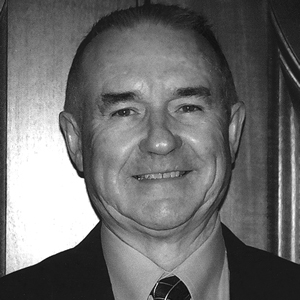
Robert Harrell graduated from the University of Idaho in 1964 with a bachelor's degree in chemical engineering. He began his career with the Shell Oil Company at the Anacortes Refinery in Washington State. In Anacortes, Harrell met his future wife Alison who was living and working there after moving from her home in South Africa.
Harrell was involved in numerous technical and operational assignments at the refinery before moving to Shell’s head office in New York City. He participated in many additional technical, operational and marketing assignments before becoming a member of Shell’s senior management team. In the late 1980’s, he served two years in London, England, as a liaison between the Shell Oil Company and Royal Dutch/Shell.
In the early 1990’s, Harrell became vice president of refining and supply for the Shell Oil Products Company with responsibilities for all of Shell’s refineries in the United States and the Supply/Trading Organization. He later became vice president of commercial products with marketing and business responsibilities for all commercial products sold in the United States. He also served on the board of directors for two of Shell’s subsidiary companies. He retired in 1997 after nearly 33 years with Shell.
Royal Dutch Shell, commonly known as Shell, is a global oil and gas company headquartered in The Hague, Netherlands and has its registered office in London, United Kingdom. It is the fifth-largest company in the world (and the second-largest energy company) according to a composite measure by Forbes magazine and one of the six oil and gas “super majors”.
Shell has operations in over 90 countries, produces around 3.1 million barrels of oil equivalent per day and has 44,000 service stations worldwide. Shell Oil Company, its subsidiary in the United States, is one of its largest businesses.
Harrell and his wife live in Kingwood, Texas. They continue their active life and enjoy traveling to together all over the world. Harrell enjoys golfing, walking and bicycling. They have two sons, Rod and Kyle.
- B.S., Chemical Engineering, 1964
Karen L. Higgins
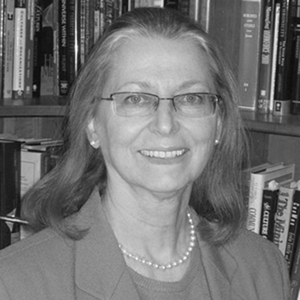
Karen Higgins earned a bachelor’s in mathematics in 1972 and a master’s in electrical engineering in 1973 from the University of Idaho. She continued her education at Claremont Graduate University, Claremont, California, where she received an M.B.A. and doctorate in Executive Management.
Higgins retired in 2005 after an exceptional 32-year career for the Naval Air Warfare Center Weapons Division (NAWCWD) at China Lake and Point Mugu, California. China Lake, in California’s Mojave Desert, offers a wide variety of geographical features in close proximity... mountains, deserts, canyons, caves and forests. Point Mugu, west of Los Angeles on the Pacific coast, manages a huge sea range as well as facilities on San Nicolas Island. The un-encroached and unique air and land ranges at China Lake and sea ranges at Point Mugu provide unmatched geographic conditions in which to develop and test weapon systems and explore tactics for desert, mountain and ocean environments. Through over 60 years of unparalleled products, NAWCWD remains a world leader in RDT&E of complex weapon systems and subsystems, software integration, electronic warfare, energetic materials and battlespace simulation; it is especially known for inventing the chemiluminescent light stick and for designing the Sidewinder missile.
For over ten years, Higgins served in first, second and third line management for various technical departments, divisions and branches of the NAWCWD. She spent seven years as project manager for programs that include Sidewinder missile and an organization-wide communication system. She spent over eight years as a software designer and system engineer for complex real-time integrated weapons systems.
From 1997 to 2005, Higgins served in the U.S. Navy Senior Executive Service, including over seven years as executive director and director for research and engineering at NAWCWD. She oversaw NAWCWD’s $1 billion budget, $2.8 billion in facilities (more than 2,000 buildings), 1.1 million acre land range and 36,000 square mile sea range. Higgins was responsible for 5,000 civilian personnel. She was involved in strategic planning, reorganizations and downsizing, and did extensive external interface and mentoring.
Before retiring, Higgins spent two years in Washington, D.C. working with Pentagon officials to consolidate several Navy, Marine, Army and Air Force military bases. With her weapons expertise and ability to facilitate groups with diverse agendas, she was assigned to lead the Base Realignment and Closure Weapons & Armaments Technical Subgroup for OSD.
Since 2006, Higgins has been president of her own management consulting company, Élan Leadership Concepts. Her company assesses organizational functionality and leadership, and provides training courses such as “The Art & Science of Leadership” and “Morality and Leadership.
Higgins is currently an adjunct professor at the Peter F. Drucker and Masatoshi Ito Graduate School of Management at Claremont Graduate University where she teaches Project Management, Systems Thinking and Ethical Leadership to multi-national MBA, Executive MBA and doctoral students.
Higgins has recently published two books. To explore a curiosity about the financial crisis of 2008-2009, she wrote Financial Whirlpools (2013). Her second book, Economic Growth and Sustainability (2015), uses a systems perspective to investigate global trends and recommend actions to bring about a better world. She is working on a third book titled The Seven Colors of Leadership. This next book describes seven qualities (for the colors of the spectrum) that millennial generation leaders must develop to turn current trends around and to nurture human flourishing.
She is a member of the following societies: Phi Beta Kappa, Sigma Xi Research Society and the Beta Gamma Sigma Business Honor Society. She has received many awards, including the Navy Meritorious Civilian Service Award, the Navy Superior Civilian Service Award, the Presidential Rank Award, the OSD Medal for Exceptional Civilian Service and the Navy Distinguished Civilian Service Award, the highest civilian award. She was inducted into U of I’s Academy of Engineers in 2012.
She enjoys her grandchildren, practices yoga, writes, and loves ballroom dancing and the LA Clippers. Higgins remembers Gary Maki, her U of I professor who talked her into majoring in electrical engineering. She says that he completely changed her life.
- B.S. Mathematics, University of Idaho, 1972
- M.S., Electrical Engineering, University of Idaho, 1973
- M.B.A., Claremont Graduate University, 1991
- Ph.D., Executive Management, Claremont Graduate University, 1997
Richard T. Jacobsen
Deceased Aug. 2019
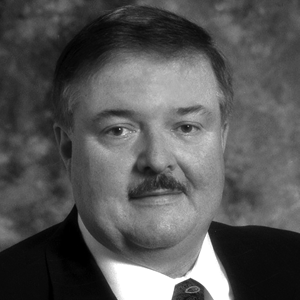
Richard Jacobsen is executive director for Research and Technology Transfer and professor of Nuclear Engineering at Idaho State University (ISU).
He supports campus-wide research and related efforts as the interim vice president for Research and Economic Development.
Jacobsen serves as the associate director for the Center for Advanced Energy Studies (CAES) and Technology Transfer Officer at Idaho State. Prior to his current appointments, Jacobsen served as the dean of Engineering at ISU from 2006 to 2010.
From 1999 to 2005, under the management of Bechtel BWXT Idaho LLC, Jacobsen was chief scientist and concurrently served as deputy and associate laboratory director at the Idaho National Engineering and Environmental Laboratory (INEEL), now Idaho National Lab (INL) in Idaho Falls.
At the University of Idaho in Moscow Jacobsen served as dean of the College of Engineering from 1990 to 1999. He was the director of the Center for Applied Thermodynamic Studies (CAT S) from 1986 to 1999 and associate director from 1985 to 1990. He served as the chairman of the Department of Mechanical Engineering from 1980 to 1985. Jacobsen was a faculty member in the U of I Mechanical Engineering Department for 42 years and is currently a professor emeritus.
Jacobsen is active in the American Society of Mechanical Engineers (ASME) holding several elected national offices, including chair of the board on Research and Technology Development, vice president for Finance, Knowledge and Community Sector, vice president for Research and vice president for Professional Practice, in addition to various committee assignments.
In 1963, Jacobsen earned a bachelor’s and in 1965 a master’s in mechanical engineering from the U of I and a doctorate in engineering science from Washington State University in 1972. Jacobsen’s research publications include 11 books and chapters in books; 60 refereed journal publications; 11 refereed conference proceedings; and 108 research reports, notes and technical reports.
- B.S., Mechanical Engineering, 1963
- M.S., Mechanical Engineering, 1965
- Ph.D., Engineering Science, 1972
Eugene H. Luntey
Deceased Sept. 8, 2022
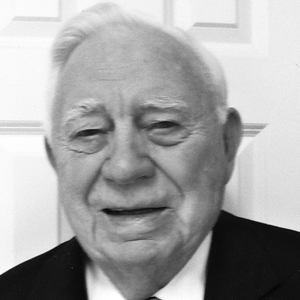
Eugene Luntey was born and grew up in Buhl, Idaho, population of 2,500, and delivered newspapers and worked in the only drug store in town during high school. He graduated from the University of Idaho with a bachelor’s degree in chemical engineering in 1943 and received a scholarship to the Institute of Gas Technology at the Illinois Institute of Technology in Chicago.
But it was World War II and the government had other plans for him. He joined the Navy, and for the next two and a half years, worked for the Office of Scientific Research and Development, on rockets to be fired from naval aircraft. He joined the Navy as an ensign and trained as an airborne electronics officer. After two and one half years of training Navy pilots in radar and electronic navigation, including dropping torpedoes, he returned to the Illinois Institute of Technology.
In 1948, Luntey accepted a position at the Brooklyn Union Gas Company in New York as a junior engineer. During his time there, he worked nearly every engineering job possible including supervising, installing and maintaining the mains and services for the entire borough. He participated in the “conversion” where sections of the pipeline systems were isolated so that natural gas could be turned in to that section to replace the old “manufactured gas” which had been used for one hundred years. During this time he became a licensed engineer with the State of New York. Luntey remained with Brooklyn Union for his entire 38 year career eventually becoming assistant vice president, vice president, executive vice president and finally, for the last eleven years, president and chairman.
Luntey was very active in the natural gas industry in the United States and around the world. He served as chairman of the New York Gas Group, as well as president of the Society of Gas Lighting. He was a member of the New York State Energy Development Authority, chairman of the Gas Research Institute and chairman of the American Gas Association. As a member of the International Gas Union, he made trips to China, Russia, Japan, Great Britain, Sweden, Australia, New Zealand and other countries to discuss mutual problems. He signed the first Technology Exchange agreements with Tokyo Gas and Osaka Gas companies which provided for the exchange of engineers for training in developing technologies.
Luntey also worked extensively in the public service arena. He served on the local Civic Association and the Port Washington Board of Education. He was deputy mayor and chief police commissioner of Sands Point for 25 years and, in New York City, he mentored the Rockefeller Fellows of the New York City Partnership, and served on the boards of the Regional Plan Association and NYC Planning committees. In Brooklyn, he served on the boards of the Brooklyn Museum, the Brooklyn Academy of Music, the Polytechnic University and headed fund-raising efforts for the Brooklyn Botanic Garden and the Long Island College Hospital. In 1983, Luntey joined the Board of Trustees of Long Island University. He became the first chancellor of the Brooklyn Campus and went on to serve five years as chairman of the entire university.
Luntey has received honorary doctorate degrees from St. Francis College in Brooklyn, Polytechnic University and Long Island University. In 1993, U of I recognized him as an outstanding alumnus with the Silver and Gold Award. That year, he also gave the commencement address to the graduating engineers, fifty years to the day from his own graduation from the same stage in the same building.
Luntey and his wife Betty currently reside on Hilton Head Island in the winter months and on Shelter Island, New York, in the summer.
How many people do you know get a fishing trip on the Snake River in Idaho as a 90th birthday present? Probably only one and that would be Gene Luntey, who loved every minute of it. It was a gift from his son, Kirk.
- B.S., Chemical Engineering, 1943
- Two Honorary Doctorates
Joseph N. Rumble
Deceased Jan. 5, 2016
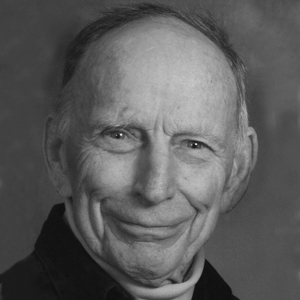
Joseph Rumble was born in Lincoln, Neb., in 1927. His father was a small-town Iowa boy who graduated from the University of Iowa with a business degree and traveled to many cities to find work especially during the Great Depression.
Rumble lived with his family in Galveston, Houston, Waco, Dallas, Fort Worth and they finally settled in Albuquerque, N.M., where Rumble attended junior high and high school.
Rumble was an average student spending many hours under the hoods of junker cars but, nonetheless, scored in the top five percent of students in the state after taking the New Mexico Senior Achievement Test. The summer before his junior year of high school, Rumble took a job with the U.S. Forest Service in northern Idaho.
He traveled to Coeur d’Alene as a fire crew member in 1944 and returned the following summer as a fire lookout. Rumble graduated from high school in 1945.
In 1945, following in his half-brother’s steps, Rumble decided to attend the University of Idaho. Within a few months of starting school he was drafted into the Navy, tested high in the Eddy Test for electronics, radio and radar and was sent to Navy Class A electronic service schools for 15 months — at Great Lakes, Illinois, Ward Island, Texas and Memphis, Tenn.
Rumble was discharged in time to restart at U of I in 1948 planning to take forestry.
When he talked to other forestry graduates when he learned that jobs in that field were not available, and learned from the College of Mines Dean Fahrenwald that opportunities in mining were plentiful and Dean Fahrenwald said, “If you can’t find a job, I will hire you myself!” Rumble became a mining engineering student right then and there.
Bill Staley, head of Mining, and Joe Newton, head of Metallurgical Engineering, became his mentors at the U of I. Both faculty members stressed creativity, innovation, hard work, and taught not to fear failure. Rumble says, “They both gave me a lifetime career standard in interpersonal training, especially in developing trust, which was one of my best tools in my working life.” When Rumble graduated in d 1952, he had 52 job interviews and 50 offers. At graduation he received two degrees — bachelor's in mining engineering and bachelor's in metallurgical engineering.
Rumble’s mining career began at U.S. Vanadium Corporation’s Pine Creek tungsten operations, the “mine in the sky,” at 13,000 feet in the Sierras out of Bishop, California. He was assigned to the chemical analysis lab that tracts the process of ore to tungsten concentrate. His next assignment was in the mine, working as a diamond drilling assistant in the long-hole stopping procedure.
Living conditions at Pine Creek left much to be desired, and in 1952 Rumble secured a job in Yerington, Nev., at Anaconda’s open pit copper mine. One of his first challenges was to improve sampling methods for the Joy Drilling Machines using Hughes Tricone Bits that drilled the 10 inch blast holes. He developed a continuous sampling system and sample splitting that provided a very representative sample.
He then had the job of analyzing and improving large Dart truck tire performance.
Their fleet of forty 30-ton off-road trucks generated an annual tire cost of over $3,000,000. After investigating how long the tires were lasting, tire inflation standards, and failure type and repair procedures, Rumble worked with the supplier and improved tire performance and reduced tire costs by 30 percent. Rumble then became a leach plant production engineer, with the opportunity to become a shift supervisor.
After two years, Rumble decided that shift work while raising a growing family compromised many of his family values. It was time to move on, and he took a position with Mountain States Telephone Company in Boise, Idaho, where he was a transposition and protection engineer for the open wire systems of the mid-1950s.
He became the operator of several radio telephone experiments that showed limited use for existing equipment, but big opportunities if it could be integrated into a wide coverage area. The cell phones of today were the logical outcome of those early experiments.
The attraction of working on a three-dam hydro project on the Snake River enticed Rumble to work for Morrison Knudsen Construction Company. He soon realized that shift work at Yerington was not the best choice for his family and he then accepted a position with Alcoa in Wenatchee, Wash., as a process engineer in the smelting operations. He began in the anode plant. The carbon baking furnaces had refractory flues that had been built in place, and this was the way it had always been done. Rumble saw a huge advantage that by building the flues at a remote place it would be a prefabricated flue that could be dropped in place, saving labor and furnace productivity. His invention worked fine, and Alcoa is still using that concept today, fabricating their flues at a refractory company.
Rumble’s next assignment was the at ingot plant, where molten aluminum was cast into ingot of various sizes. He developed the first 30/50-lb. interlocking, open-mold ingot that made a much more secure bundle (package) for shipping.
Rumble also came up with the concept of direct chill continuous cast ingot that was cleaner and high quality than competitors. The plant mechanical engineer and Rumble developed a submerged pour system for casting 30- and 50-lb. open mold ingots that are still in use today.
Rumble worked at Wenatchee for 16 years and then transferred to Point Comfort, Texas, as ingot plant superintendent. They were casting 36,000-lb. aluminum ingot for rolling into rigid container sheets for the aluminum beverage can industry. After three years and many productivity improvements Rumble was promoted to a job at Badin, North Carolina. The Badin ingot plant made a lot of products, but the biggest challenge was to get the new technology of Hunter-Douglas cast sheet productivity to be competitive with other methods of casting ingots. Rumble saw an opportunity to install SPC (statistical process control) in the casting process.
His concept was to have the casting operators make their own measurements and tweak the process to make the roll cast sheet have the highest quality standards in the industry. The SPC worked very well and the operators were doing all the process adjustments with no directions from technicians or a supervisor. They became the preferred supplier to the foil rolling plant in Lebanon, Pennsylvania.
Rumble’s last challenge at Badin was creating a shipping department with an autonomous work force, which made all the decisions on shipping orders, timing, crew size, etc., without any supervision.
Rumble is pleased and proud to see his six sons graduate from college, with three of them pursuing engineering and one a cement contractor. The other two are also excelling, as a CPA and a Ph.D. wildlife biologist, respectively.
His first wife passed away in 1987 and he remarried in 1989 to Susan and they have enjoyed a busy retirement with many community and church activities, biking, skiing, traveling, and hiking. They have walked the entire Appalachian Trail and live on a 17-acre apple and pear orchard seven miles west of Wenatchee.
- B.S., Mining Engineering, 1952
- B.S., Metallurgical Engineering, 1952
James E. Russell
Deceased Jun. 20, 2019
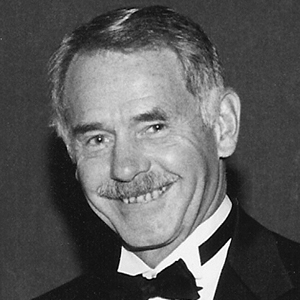
James (Jim) Russell was born in Sandpoint Idaho in 1933 and grew up in North Idaho as one of six children of Alex and Mae Russell. He played multiple sports at Sandpoint High School and graduated in third in his class in 1951.
In 1952, he enrolled in engineering at the University of Idaho assisted by an academic and citizenship scholarship. He served on the Social Activities Committee, was a member of the Intercollegiate Knights, was an All Star in two intramural sports, completed ROT C and was president of his Living Group, Independent Students and the Senior Class of 1956. Upon graduation in 1956, he received an Army commission and accepted an engineering job at RCA in Lancaster, Penn., where he worked for one year and obtained a patent for the company in power tube design and manufacturing.
From 1957-1960, Russell served as an Army officer at the Redstone Arsenal Guided Missile School in Huntsville, Ala., where he directed 75 instructors teaching missile guidance and propulsion courses for U.S. and foreign military personnel. He established the first military course in transistors and Werner Von Braun’s missile experts participated in the course, not long thereafter the United States launched the nation’s first satellite.
Russell worked for the Operations Research Office, John Hopkins University, a Federal Contract Research Center in 1960 and then from 1961-1972, for the Research Analysis Corporation (RAC) in McLean, Va., when Congress directed that the work be transitioned to the private non-profit. While at RAC he completed 46 hours of graduate study in mathematical statistics at American University and learned how to apply operations research methods from RAC’s OR pioneers. He became a leading expert in communications security associated with radio frequency and call sign assignments for tactical radio networks and lead a team applying operations research techniques to automate radio frequency assignments for Army units in Europe. This led to Russell becoming the featured speaker at the military executive course in Operations Research and Systems Analysis (ORSA) several dozen times.
In 1969, at the request of the Joint Chiefs of Staff, he spent six weeks with land, sea and air military units in eight countries in the Pacific including Vietnam and on the Laos border evaluating serious military communication security issues and recommending improvements.
In 1972 when Congress directed that RAC be sold, Russell led a team of 20 analysts to join Science Applications International Corporation (SAIC) which then was a small employee-owned science and engineering company of 90 people. Initially he led divisions in quantitative analysis and computer systems integration for governmental and commercial organizations in areas such as advanced defense technology, health care, statistical surveys, information management systems and others.
For over 30 years as Senior Vice President for Corporate Development he provided leadership in growth of the company to $6 billion in annual revenue in markets such as defense, health care systems, transportation, law enforcement, energy and environment. In 2004, he transitioned to a consulting employee and has continued to help SAIC grow to $11 billion in annual revenue by 2012.
From 2004 to the present as an independent consultant, senior advisor and private investor, Russell has assisted over 100 innovative technology companies in their development and growth. This includes consulting work with the Foundation for Enterprise Development assisting companies funded under the Defense Advanced Research Projects Agency (DARPA) Small Business Innovative Research program transition a wide variety of advanced technology into use.
During his career, Russell has served as a director on corporate boards, senior corporate advisor, information technology consultant for universities, private investor and a member of several professional and military technology committees. His private foundation provides charitable support to U of I and non-profit organizations fostering science and technology initiatives in the United States. He has enjoyed a lifetime in sports as a player, coach and commissioner and his ongoing favorites are tennis, golf and fishing (especially in Idaho).
He married Virginia (Ginny) Kelley in Sandpoint before moving east in 1956 and they raised two children, James and Debra. The Russell’s currently live in Rockville, Maryland and have a vacation home on the Pend Oreille River near Sandpoint where they enjoy family and friends.
- B.S., Electrical Engineering, 1956
Charles M. Sievert
Deceased 2024
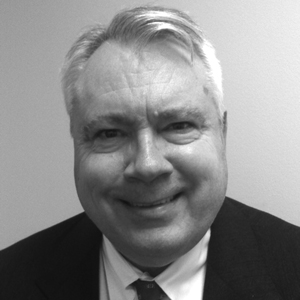
Charles Sievert was born in 1947 in Chester, Idaho about 50 miles north of Idaho Falls. He attended U of I, where he was in the Naval Reserve Officers Training Corps (NROTC) program, the college-based, commissioned officer training program of the United States Navy and the United States Marine Corps and graduated with a Bachelor of Science in Chemical Engineering in 1969.
After graduation, Sievert served as a United States naval officer during the Vietnam War-era for four years and then began his career working for Exxon Chemical in Baton Rouge, Louisiana. There he served as a design engineer, financial analyst and product manager over his five year tenure at the company. Sievert was then transferred to a management position at Exxon’s headquarters in Houston. Sievert left Exxon in 1978, and joined the Pace Company in Houston as a market research consultant.
In 1980, Sievert left Pace to become one of the three founders of Chemical Data in Houston, Texas. For over 30 years, Sievert has been one of the consultants writing their flagship international publication — the “Monthly Petrochemical and Plastics Analysis.” Sievert is currently the President of Chemical Data that provides ongoing market research and analysis for the U.S. plastics, petrochemical and petroleum industries.
Their exclusive services for the industry include twice monthly multi-client studies that cover most everything from crude oil and natural gas to plastics. Their clients span the globe and include investment, energy, oil, chemical, and consumer product companies. Their clients also include a number of plastics converters and plastics consumers, both large and small. One of Sievert’s reports provides continuous U.S. market coverage of 34 major petrochemicals and plastics. Another report provides continuous coverage of the world petroleum situation as well as the U.S. petroleum and natural gas industries. The study focuses on current and future supply, demand, and pricing for the following: U.S. and world crude oil, U.S. average crude acquisition cost, refined products (gasoline, jet fuel, distillate), natural gas and natural gas liquids, petrochemical feedstocks, to name a few. Included in these reports are various reports on manufacturing economics, supply and demand balances, prices, and other topics.
- B.S., Chemical Engineering, 1969
Jack C. Swearengen
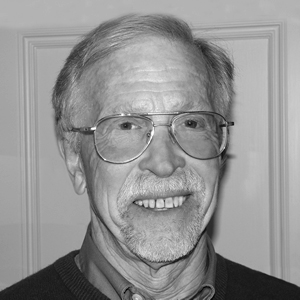
Jack Swearengen graduated from the University of Idaho in 1961 in Mechanical Engineering and earned a master’s in mechanical engineering at the University of Arizona in 1963. He worked four years in industry developing automation equipment and then returned to the University of Washington to study for a doctorate.
After earning his doctorate in mechanical engineering in 1970, Swearengen joined Sandia National Laboratories to do research on strength and fracture toughness of materials. In 1981, he moved from materials research to renewable energy (solar thermal and fusion), then to advanced weapon systems development, and finally to arms control and weapons dismantlement. From 1988-1991 he served as science advisor for the Secretary of Defense and participated in the Strategic Arms Reduction Treaty negotiations in Geneva, Switzerland. “Weapons development followed by arms control and then work on safe dismantlement of the Cold War arsenal,” Swearengen notes. “If that isn’t job security, I don’t know what is.” Swearengen’s work on nuclear weapons and arms control gave him a first-hand view of how profoundly nuclear weapons had changed the course of history — and it stimulated a new interest that eventually redirected his career to technology and society studies. In 1996, Swearengen accepted an offer from Washington State University to head the engineering programs at WSU’s brand-new campus in Vancouver, Wash. In addition to starting new degree programs in manufacturing engineering and computer science, Swearengen taught systems design, design for manufacture, materials science, operations management, and green design & manufacturing.
His accomplishments included assembling an Industrial Advisory Board, designing the laboratories in the new Engineering & Life Sciences Building, recruiting both faculty and students, getting the program accredited by ABET, and securing research grants and publishing sufficient papers to earn tenure (which was awarded in 2002). He retired from WSU in 2002 and currently is an emeritus professor and founding director of engineering programs there.
In 2002, Swearengen was recognized by the Society of Manufacturing Engineers for Outstanding Achievement in Education. Previously he received the Secretary of Defense Award for Excellence, the Joint Ordnance Commanders’ Group Award of Merit, and Sandia Laboratories Presidents Quality Award. He is a member of the American Society of Mechanical Engineers and a Fellow of the American Scientific Affiliation.
Swearengen is chair of Friends of SMART (Sonoma Marin Area Rail Transit) and a member of Sonoma County Transportation and Land Use Coalition.
Presently Swearengen is chief scientist for WindtoGreen LLC — seeking to use wind or solar power to produce anhydrous ammonia from entirely renewable resources.
He spends whatever time is left promoting sustainable transportation and land use, and giving talks and writing articles based upon his book Beyond Paradise: Technology and the Kingdom of God. He argues that technology is not morally neutral, that sustainability is a biblical objective, and that technology must be used for the benefit of people and nature alike.
Swearengen has served as consultant to the U.S. Army Defense Ammunition Center, Sandia Laboratories, WSU Vancouver, and the State of Louisiana. He has published more than sixty journal papers including ten on technology and society, and fifty corporate reports and white papers.
- B.S., Mechanical Engineering, 1961
- M.S., Mechanical Engineering, 1963
- Ph.D., Mechanical Engineering, 1970
Virginia B. Valentine

Virginia Bax Valentine graduated in 1980 from the University of Idaho with a Bachelor’s of Science in Civil Engineering and earned a Masters of Public Administration from the University of Nevada Las Vegas, Phi Alpha Alpha (The National Honor Society for Public Affairs and Administration) in 2000.
During the summer of her junior year at Idaho, Valentine did an internship for the City of Salem, in Salem, Ore. She worked as a construction inspector for offsite improvements and became certified to conduct nuclear density tests.
After graduation, Valentine started her first job at JUB Engineers in Coeur d’Alene, Idaho as a design engineer. She designed rural water and wastewater treatment systems including several pump stations.
She served as resident engineer for the construction of a river intake system, water treatment plan, reservoirs, and the water distribution system for the Three Mile Water District in Bonner’s Ferry, Idaho.
In August of 1981, Valentine moved to Las Vegas, Nevada where she went to work as a design engineer for VTN Nevada, Las Vegas, Nevada. She worked on the design of land development projects including grading and drainage plans, prepared flood studies, and designed infrastructure for land development projects including waste water collection systems, roadways, waterlines, and drainage systems.
Two years later, Valentine joined URS Consulting Engineers in Las Vegas as a project engineer for wastewater treatment and pumping systems. She worked on resident engineering on the Henderson, Nevada Wastewater Treatment Plan.
In 1984, Valentine moved to Black and Veatch Consulting Engineers in Las Vegas as a project engineer for environmental projects including feasibility, planning, design, and construction management. She managed the first comprehensive study of the Tropicana and Flamingo Hotel washes in Clark County.
Valentine became the first chief engineer and general manager of the Clark County Regional Flood Control District in Las Vegas in 1986. As general manager of a newly created agency, she developed all the District’s programs including master planning, capital improvement, flood plain management regulations, flood warning system, and the District’s first National Pollutant Discharge Elimination storm water discharge permit. She was successful in gaining authorization and appropriations for a $250 million federal project with the USACE.
In 1993, Valentine became a senior vice president of Post, Buckley, Schuh and Jernigan, (PBSJ) a national consulting engineering firm. At PBSJ, Valentine was responsible for overseeing the Public Works and Environmental Divisions in the Western Region. Her job included environmental services such as flood control and water resources projects from planning through construction. She was responsible for budgeting and management for environmental services in the region and managed multimillion dollar design and construction projects for flood control, transportation, and utilities. She was the principal in charge for the program management services provided to the City of North Las Vegas, instituted the GIS division within the environmental services in the western region and was the project manager for the first fully GIS Flood Control Master Plan for the Las Vegas Valley.
Valentine became the city manager for the City of Las Vegas, Las Vegas, Nevada in 1998. The City of Las Vegas has 16 departments, 2,800 employees, and in FY 2002 a combined budget of $740 million. At that time the City of Las Vegas was one of the fastest-growing cities in the country and had over 600,000 residents. The city has a council/manager form of government and Valentine reported to the mayor and city council.
Four years later, Valentine became the senior vice president of the Las Vegas Chamber of Commerce, Las Vegas, Nevada. She was responsible for the Government Affairs Department including state and local government lobbying on business issues and represented the chamber at the 2003 special session of the legislature.
Valentine was appointed as assistant county manager for Clark County in November of 2002. In that capacity she oversaw numerous county departments including air quality and environmental management, assessor, comprehensive planning, development services, fire, public works, redevelopment, real property management, recorder and water reclamation. During her tenure at the county, she was previously assigned to oversee the Departments of Information Technology, Family Services, Public Guardian, Social Service, Parks & Community Services and Elections and University Medical Center. From 2002 to 2011, Valentine was the chief executive officer for Clark County, Nevada.
The county provides extensive regional and municipal-type services to over 2 million residents. In her position as the county’s chief executive officer, she was charged with carrying out the policies established by the seven member Board of County Commissioners. She provided administrative oversight for 38 diverse and geographically dispersed departments and agencies (including McCarran International Airport, University Medical Center of Southern Nevada, and the Clark County Water Reclamation District), and more than 12,100 full-time and 4,000 part-time employees. Approximately 900,000 residents live in the unincorporated area which includes the urban area including the Las Vegas Strip and several rural towns.
Valentine is currently the president of the Nevada Resort Association (NRA). The NRA is an industry trade association representing Nevada’s resort/casino industry. The NRA is involved in state and local regulations, lawmaking, and policies effecting gaming.
Valentine has received the following honors and awards:
- Woman of Distinction Award (WODA) in Government, 2010
- Honored by HELP of Southern Nevada, Women in Non-Traditional Roles, 2009
- ASCE Civil Government Award 2008, national award for professional achievement, 2008
- One of the 50 Most Influential People in Southern Nevada, In Business Las Vegas magazine, 2008
- Listed as an extraordinary woman engineer in Changing Our World: True Stories of Women Engineers, 2006
- The book was launched at the National Press Club in Washington, D.C., on Feb. 21, 2006
- One of the 20 Most Influential Women in Nevada (In Business Las Vegas Magazine), 2000
- “Woman and Youth Award” (Las Vegas Boys and Girls Club), 1996
- “Woman of Achievement” in Science (Las Vegas Chamber of Commerce), 1993
- ASCE Engineer of the Year in Government (Southern Nevada Branch), 1990
- ASCE “Edmund Friedman Young Engineer” National Award for Professional Achievement, 1988
- Finalist for Woman of the Year in Government (Las Vegas Chamber of Commerce), 1987
- NSPE Young Engineer of the Year (Nevada), 1984
- NSPE Young Engineer of the Year (Southern Nevada), 1983
- B.S., Civil Engineering, University of Idaho, 1980
- M.S., Public Administration, University of Nevada, 2000
2011
Thomas L. Anderson
View ProfileClayton D. Boyce
View ProfileR. James Coleman
View ProfileStanley P. Desjardins
View ProfileRobert R. Furgason
View ProfileRonald C. Olson
View ProfileBess L. Vance
View ProfileTommy W. Ambrose
Deceased 2020
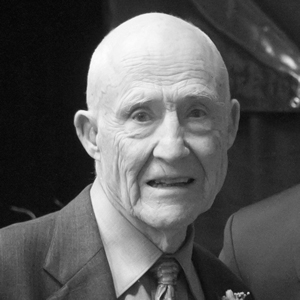
Tommy Ambrose spent his youth on a sheep ranch near Jerome, Idaho and at the age of 17 enlisted in the United States Navy. He served on an aircraft carrier in the Pacific Theatre during World War II and then returned to Idaho to complete bachelor's (’50) and master's (’51) degrees in chemical engineering at the University of Idaho. Ambrose played as a center on the varsity football team for three years while studying chemical engineering. He then married his 50’s classmate Shirley Ann Ball, and they have three daughters, Pamela Lee, a professional cellist; Julie Lynn, a major gifts director for a symphony orchestra; and Leslie Ann, a principal software designer.
Ambrose completed his doctorate at Oregon State University in 1957 and subsequently was awarded an honorary doctorate by U of I. His first job was with the General Electric Company at the Hanford Atomic Works in Richland, Wash., where was engaged in reactor research and development followed by managerial responsibility for processes and nuclear safety. He worked for Battelle Memorial Institute from 1969 to 1990 in various capacities including director of the Seattle Research Center and then as vice president and director of the Pacific Northwest National Laboratory in Richland, Wash. He also served as a liaison officer for Battelle’s four international laboratories.
Ambrose retired from Battelle to serve the University of California System as liaison between its president and three Department of Energy’s National Laboratories which they managed at Livermore, Los Alamos and Berkeley. Ambrose served on Washington’s Commerce and Economic Development Committee and its Council for Post-Secondary Education, and Idaho’s Science and Technology Council. He was a member of the Board of Directors of the University of Idaho Foundation, engineering advisory boards for the U of I, University of Washington and Idaho State University and eight years on ABET (Accreditation Board for Engineering and Technology). He has also served on boards at Columbia Basin College, Northwest College and university Association for Science, Pacific Science Center Foundation, Columbus Symphony Orchestra, and Ohio Wesleyan University. Ambrose received the U of I’s Hall of Fame award in 1980, the Oregon State University College of Engineering Hall of Fame award in 2001 and the Idaho State University College of Engineering’s Professional Achievement award in 2000.
- B.S. Chemical Engineering 1950
- M.S. Chemical Engineering 1951
- Ph.D. Chemical Engineering 1957
- Honorary Doctorate, Idaho 1981
Thomas L. Anderson
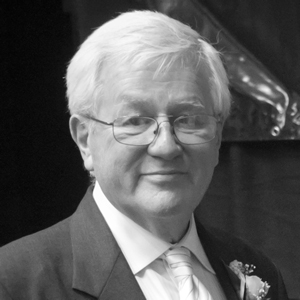
Tom Anderson was born in 1936 and raised in Everett, Wash., by his Scandinavian parents who married in Sandpoint, Idaho. Anderson loved skiing, fishing, building model airplanes and constructing objects with his Erector Set. He was active in many extracurricular activities in school including being an algebra tutor and class president. He attended Everett Junior College and later transferred to the University of Idaho on a skiing scholarship. He helped to pay for his tuition and expenses by working for the Engineering Experiment Station. He was vice president of his fraternity and a three-year member of the varsity ski team that placed among the top teams annually at the NCAA National Ski Championships.
Anderson earned his bachelor's (’58) and master's (’61) degrees in civil engineering at U of I and a doctorate (’67) in civil engineering from the University of Colorado at Boulder. He received a Distinguished Engineering Alumnus Award from CU in 1994.
Anderson taught in the department of civil engineering at U of I from 1958 to 1970, where he also coached the U of I varsity ski team for three years. At this same time he worked at Boeing Airplane Company and attended the University of Colorado at Boulder.
In 1970, Anderson took a position with Battelle Memorial Institute in Richland, Wash., and after four years, joined Fluor Engineers and Constructors in Los Angeles. He spent 27 years with Fluor in a variety of assignments of increasing responsibility that provided an opportunity to make contributions to structural dynamics applications. Anderson was general manager of engineering services for Fluor’s southern California operations center where he directed $250 million in engineering design services annually. His first assignment at Fluor was responsibility for the seismic design of the Alyeska Pipeline pump stations and Valdez marine terminal, including all structures and equipment. He later designed the seismic base isolation system for the 911 Emergency Response Center for dispatch of all Los Angeles County fire and medical assistance which was the first seismically isolated building for Los Angeles County that ensured continuity of operations during and following destructive earthquakes.
When on sabbatical leave from Fluor in the mid ‘90s, he completed a two-year postdoctoral fellowship at RAND’s Critical Technologies Institute in Washington, D.C., where he worked with the Office of Science and Technology Policy in improving science and technology policy formulation in the Executive Office of President Clinton.
In 2000, he was appointed program officer at the National Science Foundation (NSF) where he managed the George E. Brown, Jr. Network for Earthquake Engineering Simulation (NEES) Program involving project management for all NEES experimental equipment awards to major research universities across the nation. Anderson continued as a consultant for a number of years after retiring from NSF, providing engineering, management, policy and advisory assistance to a range of clients. His technical specialty is earthquake engineering and structural dynamics, and he has published extensively in these fields.
Anderson still skis the black diamond runs, enjoys the theater, cooking, gardening and travel. Anderson has three sons, Steven, David and Eric and two stepdaughters, Wendy and Jill, and 14 grandchildren! He and his wife, Elizabeth, reside in Arlington, Va.
- B.S., Civil Engineering, 1958
- M.S., Civil Engineering, 1961
- Ph.D., Structural Dynamics, 1967
Clayton D. Boyce
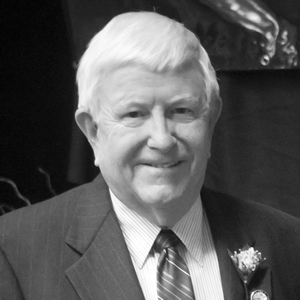
Clayton (Clay) D. Boyce was born and grew up near the mountain town of St. Maries in northern Idaho. His parents were of modest means; he attended the local schools and graduated from high school in 1947. By working after school and vacations he pursued his hobby of model airplanes and earned a student pilot’s license at the local wheat field/airport.
In 1948, he enrolled at the University of Idaho and graduated with a bachelor's in mechanical engineering in 1953. While in school he participated in the AFROTC Program and was commissioned as a second lieutenant after graduation. His first job as an engineer was with Cessna Aircraft in Wichita, Kan., where he worked as a design engineer on the USAF T-37 jet trainer program.
Boyce was called to active duty by the U.S. Air Force in late 1953 and assigned to Patrick AFB, Fla. (Atlantic Missile Range/Cape Canaveral). He served as a guidance systems officer in the 1st Pilotless Bomber (Matador) Squadron first-of-a-kind for the Air Force. The Matador carried a 40 kiloton nuclear warhead and in 1954, the squadron was deployed to Germany as part of the Cold War/NATO arms buildup in Europe. Subsequently, he was assigned to the USAF Active Reserve and currently holds a commission as captain in the USAF Retired Reserve.
When released from active duty in 1955, he accepted employment with Aerojet Engineering Company (later Aerojet-General Corp). He remained employed by Aerojet for 36 years until retirement in 1991. While at Aerojet he held various positions in engineering and management. The highlight of his career was participation in mankind’s greatest adventure, the Apollo Moon Program. In 1962, NASA/NAA awarded Aerojet the contract to develop and qualify the Apollo Service Module Main Engine-the first rocket engine with the goal of putting men in orbit around the moon and then bring them home again. Boyce was assigned as the engineering manager for this rocket program and every engineering discipline learned from University of Idaho provided him the competence and confidence to successfully resolve the myriad of technical challenges that he encountered.
In 1969, prior to Neil Armstrong’s historic Apollo 11 mission to the Moon, NASA requested his relocation to the Manned Space Center (later the Johnson Space Center) in Houston, Texas, for on-site technical support of the mission. He was honored to sit in the Apollo Mission Control Center during all the Apollo moon landings.
He enjoyed other exciting assignments worldwide by providing technical and marketing support to Aeroject’s customers in Japan, Korea, Taiwan, Philippines, Hong Kong, Thailand and Singapore. His final assignment for Aerojet was with USAF Wright Patterson AFB, Ohio where he provided on-site technical support for Aerojet’ s Scramjet Propulsion Contracts related to The National Aerospace Plane Program-better known as President Reagan’s Hypersonic Orient Express.
Prior to retirement in 1991, Boyce created Clay & Associates, a company that provided technical consulting activities to the Aerospace Industry. Clients included Aerojet, USAF, Johnson Space Center, Stennis Space Center, American Institute of Aeronautics and Astronautics, Johns Hopkins University/Chemical Propulsion Information Analysis Center, Aerospace Corporation and the Joint Army Navy NASA Air Force Propulsion Technology Conference.
Boyce and Carol, his wife, currently reside in Gold River, Calif., and have three children. Dianne Boyce ’70, Boyce’s daughter, and William Boyce ’84, son, are both University of Idaho graduates. Terri Wyels, Carol’s daughter, graduated from USC. They have four grandchildren — Cassandra Boyce, Brad Boyce, Kenda Wyels and Kyler Wyels. Since retirement, they have enjoyed extensive world travel with a goal to stand on all the continents. Only Antarctica remains to be achieved!
- B.S., Mechanical Engineering, 1953
R. James Coleman
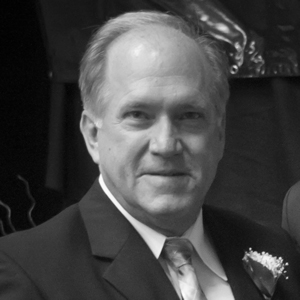
Jim Coleman was born and raised in southern Idaho. He earned a bachelor's (’75) and a master's (’76) in civil engineering at the University of Idaho. Coleman started his career with J-U-B Engineers, Inc. in Nampa, Idaho as a design engineer and then moved to Twin Falls, Idaho in 1978, and continued to perform engineering work as a project engineer and project manager. For the next six years he served as the city engineer for eight communities in the Twin Falls area. In 1980, Coleman was named assistant regional manager and in 1984, he was named the regional manager for the J-U-B Coeur d’Alene office.
In 1986, regional manager duties were expanded to include oversight of the Kennewick, Wash., office and Coleman’s responsibilities grew to include personnel management, business development as well as project management. Coleman was elected to the J-U-B Engineers, Inc. Board of Directors in 1985, elected to be president of J-U-B in 1990 and subsequently assumed the role of president/CEO. Under Coleman’s leadership J-U-B grew from 70 employees in five offices to 300 employees in eleven offices.
In 2005, after working for J-U-B for 29 years, Coleman started his own firm, Coleman Engineering, Inc. (CE). Coleman Engineering is a civil engineering consulting firm specializing in value analysis on engineering projects, water and wastewater projects, commercial and residential development, infrastructure design, project management and public relations on community development projects. Coleman Engineering is located in North Idaho and serves Idaho and Wyoming private and public clients of all sizes.
Coleman Engineering has been active in conducting value engineering studies for schools, infrastructure facilities and public buildings throughout the Pacific Northwest and Intermountain West. For the Wyoming School Facilities Commission they provided value engineering and analysis on their new and renovated schools throughout the state. CE developed a team of professionals from various disciplines to carefully evaluate each new and renovated school to find solutions to reducing capital and long term costs for school facility. This work has resulted in many projects being completed below budget with lower life cycle costs while providing the projects with high performance and sustainable design features.
In 2007, Governor Otter appointed Coleman to the Idaho Transportation Board as the District 1 representative and his knowledge and expertise in civil engineering, as well as extensive experience in aviation have contributed to its success. The board is concerned with Idaho airports, ports, roads, bridges and railroads. Coleman also sits on the Inland Pacific HUB which promotes international trade through airports, ports, and railroads. He is also a governor-appointed member of the Idaho EPSCoR Advisory Committee.
Throughout his career, Coleman has also volunteered his time on local and state committees and boards. These include having served as chairman, Coeur d’Alene Chamber of Commerce, chairman U of I College of Engineering advisory board, Rotary Club of Coeur d’Alene board of directors, Coeur d’Alene/Spokane regional chair, U of I Cornerstone of Innovation Campaign, president, North Idaho College (NIC) Foundation, Excel Foundation board of directors, chairman Idaho Engineering Education Advisory Board, president, Idaho Youth Soccer Association, member, Governor’s Science & Technology Committee and University of Idaho North Idaho Advisory Committee, tri-chair, NIC Foundation Community Campaign and cabinet member, Kroc Community Center Capital Campaign. Coleman’s community service also includes water and wastewater projects completed through Rotary International in Central America and Africa.
Coleman is married to Jerre (Clayton) Coleman (B.A., French, ‘76 U of I), also an Idaho native. They have two children, Courtney and Vincent, and reside in Hayden, Idaho.
- B.S., Civil Engineering, 1975
- M.S., Civil Engineering, 1976
Stanley P. Desjardins
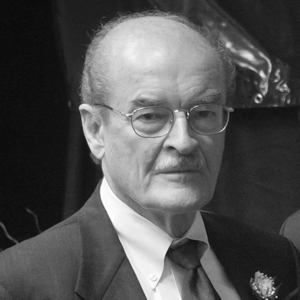
Stanley Palmer Desjardins was born to Samuel Morgan and Stella Ethel (Palmer) Desjardins in a farm town in northern Minnesota in 1930. His family followed his father to a U.S. Army base in Idaho during World War II. Desjardins later joined the National Guard and served active duty in the Korean War. In 1954, he enrolled at the University of Idaho with GI Bill® benefits studying mechanical engineering and developing an interest in solid-propellant rocketry.
Desjardins earned a degree in mechanical engineering in 1958 and after graduation took his first engineering job at Thiokol Chemical Corporation in Utah, working on the nozzle design for the U.S. Air Force Minuteman program, that in the late 1950s, was working on advances in solid-fuel propellants. The Minuteman is a three-stage, solid-propellant, rocket-powered ICBM (intercontinental ballistic missile) with a range of approximately 5,500 nautical miles.
Ten years later, Desjardins accepted a job offer from a small Arizona company to study crash safety and airline security. After working there for several years, Desjardins founded Simula, Inc. in 1975, to further the research, technology, and produce components incorporating that expertise into systems for improving occupants’ chances of survival in vehicle crashes. The company’s first big break was to supply energy-absorbing, crashworthy seats to the Sikorsky Aircraft Corp. Later, federal regulators contracted with Simula to study jet airliner crashes, and the company’s research determined stronger seats were necessary to improve safety. The company went on to design and produce crashworthy seats for military and commercial airplanes and helicopters and side-airbag systems for aviation and automobiles.
Desjardins was president and CEO of Simula for 20 years, president for 25 years and chairman of the board of Simula Inc. for 26 years. During that time, Simula developed and/or produced crash-resistant seats for the UH-60A Black Hawk and derivatives, SH-60B Seahawk, AH-64A Apache, SH-3 Sea King, CH-53 Sea Stallion, V-22 Osprey tilt-rotor, RAH-66 Comanche, UH-1Y, UH-1Z and several foreign aircraft including the Hindustan Aeronautics Limited (HAL) Advanced Light Helicopter (ALH), the Westland/Agusta EH101, and the Royal Australian Air Force S-70-A9. Simula has developed and produced crash-resistant seats for several commercial aircraft as well, including the Bell 212, 412, 230, 430, 427, the new 607 tilt-rotor, and the Kaman K-MAX, helicopters. Working with Japanese engineers from Tenyru, Simula developed seats for the new OH-1 and MH2000 helicopters. Simula also developed and built all of the sidewall and centerline troop seats for the US Air Force’s C-17 Globemaster III transport aircraft. The performance record for these seats is outstanding including “saves” in crashes of energy levels far exceeding the specified design environment.
In a related field, Simula developed and produced air bag restraints. Examples include the Cockpit Air Bag Systems (CABS) for the U.S. Army’s UH-60 Black Hawk and OH-58 Kiowa Warrior as well as side airbags for several automobiles including BMW. Desjardins retired from Simula, Inc. in 2001 when Simula was a publically traded company with twelve facilities worldwide with approximately 1400 employees.
In 2002, Desjardins founded a new company, Safe, Inc., to continue research to advance the state-of-the-art in crashworthy seats, as well as other interests. Early work has centered around SBIR projects including development of a ballistic armor covering for aviators’ helmets, development of a new lightweight crashworthy troop seat for Navy helicopters, a seat for Army and Marine ground vehicles that limits the impulsive loads imposed on the occupant as a result of a mine blast under the vehicle, new tie-downs for equipment carried in Navy helicopters, a loading device that allows passengers, both ambulatory and those in wheelchairs, to board railcars from either high or low platforms, as well as other related projects.
In a very recent project, Safe developed and delivered energy absorbing struts to NASA. The struts will be used to connect the Orion crew-carrying pallet to the outer structure of the crew capsule. If the load magnitudes during reentry and/or splash down are extreme, the energy absorbing struts will stroke limiting the loads exerted on the crew to tolerable levels. Safe’s staff now includes 14 people of which ten are engineering.
Desjardins was responsible for three major revisions of the U.S. Army’s Aircraft Crash Survival Design Guide, which is widely recognized as the authority on crash-resistant aircraft design criteria. He is the inventor or co-inventor of six patents, and his many awards include recognition from the American Helicopter Society in 2003 for his contributions that increase aircrew and passenger safety. He has been nominated for induction into the National Aviation Hall of Fame, and was selected as a U of I Hall of Fame recipient in 1996 and as the McGuire Center for Entrepreneurship Entrepreneurial Fellow by the University of Arizona in 1996. He is an Outstanding Alumnus, a former member of the College of Engineering Advisory Board and has served as an EXPO judge many times.
In recognition of his leadership in and contributions to the field of aviation safety, U of I honored Desjardins an Honorary Doctorate degree in 2010.
Desjardins resides with his wife, June Rudyk, in Scottsdale, Arizona. They have one daughter, Sandra.
GI Bill® is a registered trademark of the U.S. Department of Veterans Affairs (VA). More information about education benefits offered by the VA is available at the official U.S. government website at https://www.benefits.va.gov/gibill.
- B.S., Mechanical Engineering, 1958
- Honorary Doctorate, Idaho 2010
Robert R. Furgason
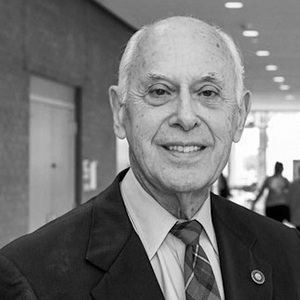
Robert Furgason earned a bachelor's (‘56) and a master's (’58) in chemical engineering at the University of Idaho. In 1961, he received a doctorate in chemical engineering from Northwestern University and an Honorary Doctorate degree from the University of Idaho in 2006.
Furgason began his distinguished academic career as an instructor in the department of chemical engineering at the University of Idaho in 1957. In the early sixties he served as an assistant professor, then as associate professor, and in 1967, became professor of chemical engineering. He served as chairman of the Department of Chemical Engineering from 1965 to 1974.
In 1974, Furgason was named dean of the College of Engineering at the University of Idaho and in 1978, vice president for academic affairs and research. Furgason moved to Lincoln, Nebraska in 1984, to take on the role as the vice chancellor for academic affairs at the University of Nebraska.
In 1990, Furgason became the first president of Texas A & M University-Corpus Christi (TAMU-CC). His 13-year tenure was marked by unprecedented growth in enrollment, programs and facilities as well as numerous awards for the University’s academic programs. Over $185 million of construction occurred on the A&M-Corpus Christi campus during his tenure as president.
Furgason became the first executive director of the Harte Research Institute (HRI) in January 2005. While at the HRI, Furgason oversaw the development of the new Institute, from the earliest planning stages through the construction of the state-of-the-art facility. He also played a key role in bringing the endowed chairs and other personnel onboard. Since its inception in 2004, the HRI has become the premier research institute for advancing the long-term sustainability and conservation of the Gulf of Mexico. Through its trilateral relationship with Mexico and Cuba, the HRI has established and activated an agenda to promote excellence in conservation, research and innovative public policy.
Philanthropist Edward H. Harte, whose $46 million endowed gift paved the way for the Institute’s creation, said that Furgason, while president of A&M-Corpus Christi, participated actively in the incubation of the ideas behind the Harte Research Institute.
Furgason has been pivotal to the establishment and success of the Harte Research Institute,” said Harte. “He has been part of everything we have done, and we owe him a great debt.
He stepped down from his post as executive director of the Harte Research Institute in 2008.
Within the Corpus Christi community, Furgason and his wife, Gloria, have been tireless champions for the performing arts. They led fundraising efforts to expand the South Texas Institute for the Arts, build the University’s $18 million Performing Arts Center and bring internationally-known artists to Corpus Christi through the Gloria and Robert R. Furgason Bravo! Series for the Performing Arts.
Furgason is a member of the Phi Kappa Phi, Tau Beta Pi, Phi Beta Delta and the Phi Eta Sigma honor societies. He has received over 25 awards including the Accreditation Board for Engineering and Technology Grinter Award, the American Society of Engineering Education Centennial Medalist, the University of Idaho Alumni Hall of Fame award and the University of Idaho Outstanding Teaching Award to name a few. He is a Fellow of the American Institute of Chemical Engineers and is a Fellow of the Accreditation Board for Engineering and Technology (ABET) and served as its president.
Furgason and Gloria, his wife, reside in Corpus Christi, Texas. They have two sons, Steven and Brian.
- B.S., Chemical Engineering, 1956
- M.S., Chemical Engineering, 1958
- Ph.D., Chemical Engineering, 1961
- Honorary Doctorate, Idaho, 2006
Jack K. Lemley
Deceased Nov. 29, 2021

Jack Lemley earned a bachelor's in architecture from the University of Idaho in 1960. Lemley has over 50 years of management experience in international industrial infrastructure, design and construction. This experience encompasses a broad cross section of the management of engineering and construction work, including heavy civil construction, mining, power generation, industrial and institutional building projects. His work ranged from direct involvement at the general manager level to marketing, contract negotiations, and finance.
Lemley began his eminent career by working for the Guy F. Atkinson Company in 1960. In 1967, he became an assistant project engineer and shift superintendent where he managed the initiation of operations for construction of an 800 foot high earth and rock fill for the Mica Dam and U.G. Powerhouse. For the next twelve years he continued to work for Atkinson, or subsidiary. He was a project manager with Walsh-Canonie (joint venture), as a contracts and engineering manager with Water Tunnel Contractors (consortium), and as general manager of Walsh Construction Company (subsidiary).
From 1977 to 1978, he served as vice president of special assignments for Morrison-Knudsen North American operations, assisting the executive vice president in administration and coordination of the activities in the seven North American performance centers.
In 1979, he became general manager of the King Khalid Military City project in Saudi Arabia for Morrison Knudsen. He was in charge of the overall management of the $1.3 billion project to build a city for 70,000 people in the Eastern Province of the Kingdom of Saudi Arabia. As prime contractor, work involved the design and construction of city infrastructure, including the world’s largest pre-cast element manufacturing facility; maintenance and operation of communications and utilities; life support and logistics services; prototype construction for the Military City; and assistance to the Corps of Engineers in management of other construction contractors.
Lemley then became group vice president of the Heavy and Marine Group of Morrison Knudsen in 1983, and was responsible for overall domestic and international operations. He was also in charge of the overall management of several major projects including the $800 million OK Tedi Gold and Copper Mine Development in Papua, New Guinea, the $300 million Trans-Panama Pipeline, and the $1.9 billion Cerrejon Coal Mine, Railroad, and Port Facility in Columbia, and the I-90 P.M. in Bellevue-Seattle, Washington.
In 1985, Lemley became senior vice president of the construction division of Morrison Knudsen. He was responsible for directing all engineering and construction activities as well as exercising general supervision over all division’s accounting functions. He reviewed project development in areas of marine, underground, heavy, civil, mining, transportation systems, military works, and utility programs to determine the progress of work and efficiency of operations. Additional responsibilities included maintaining amicable relationships with company clients and promoting satisfactory relations with government agencies and the general public.
Lemley participated as a member on the Department of Energy Advisory Board for the design and construction of the Super Conducting Collider facility.
From early 1989, until the project was completed in December, 1993, he served as chief executive of Transmanche-Link, the consortium of five British and five French companies that designed and built the Channel Tunnel (also referred to as the Chunnel), the largest privately funded construction project in history. An excess of 14,000 people were employed on the project, the worlds’ largest privately financed (with no governmental assistance or guarantees) construction project valued in an excess of $21 billion. In recognition of this effort, he was made a Commander of the British Empire in 1996 and was ENR’s “Man of the Year” in 1992.
From 1995 to 2001 Lemley was chairman and CEO of American Ecology Corporation, a nuclear and chemical environmental service company based in Boise, Idaho. Through its U.S. Ecology unit, the company operates a low-level nuclear waste disposal facility in Washington State for the Northwest Compact facility and received a license approval for a similar facility in California for the Southwest Compact at Ward Valley. Furthermore, American Ecology operated a nuclear waste material processing facility in Oakridge, Tenn.
More recently Lemley served as chairman of the United Kingdom Olympic Delivery Authority, which was responsible for delivering the infrastructure for the 2012 Summer Olympic Games. He oversaw the delivery of the infrastructure and venues needed for the 2012 Olympics, including the main stadium, aquatic center, athlete housing, and related transportation systems.
He was president and chief executive officer of Lemley International headquartered in Boise, Idaho, a management-consulting firm established to serve public and private clients worldwide in the engineering/construction industry. This company offers project management and technical support services for organization/planning, cost estimating, procurement, safety and quality assurance, equipment selection/maintenance, scheduling, and underground development and tunneling. In addition, Lemley International provides services for construction and program management, labor consultation, claims support and resolution, and peer review board participation. Recently one high-profile contract included reviewing the management of the $14 billion Massachusetts Turnpike project.
Lemley was a Chartered Civil Engineer (UK), a UKFEANI Registered European Engineer (UK), and a Chartered Engineer (UK). He was a Fellow of the American Society of Civil Engineers and the Institution of Civil Engineers in London. He was a Fellow, American Arbitration Association, American Underground Space Association, British Tunneling Society, and International Tunneling Association. Lemley was a Life Member, U.S. National Committee on Tunneling Technology, 20 year member U.S. Committee Large Dams, member, the Moles, the Beavers, American Military Engineers, Worshipful Engineers (UK) and founding member of the Disputes Review Board Foundation.
Lemley’s Awards
- 2009 Trustee Emeritus College of Idaho
- 2007 Engineer of the Year, Idaho State University
- 2006 Honorary Doctor of Science Degree, Albertson’s College of Idaho
- 2005 American Society of Civil Engineers Outstanding Projects and Leaders (OPAL) Award
- 2004 National Academy of Construction Induction
- 2003 Distinguished Alumni Award, North Idaho College
- 1999 Engineering News-Record, “125 Years…125 Top People” selection
- 1998 Honorary Doctor of Science Degree, University of Idaho
- 1997 Idaho’s Hall of Fame Association, Outstanding Achievement in Industry
- 1996 Honorary Commander of the Excellent Order of the British Empire
- 1994 British Construction Industry Awards, Special Award for Channel Tunnel
- 1994 ASCE – John I. Parcel-Leif J. Sverdrup Engineering Management Award
- 1994 Civil Engineering Management Award
- 1993 Mich. State Dean’s Award Distinguished Contributors to Eng., Science, Design & Practice
- 1992 Golden Beaver Award for Supervision
- 1992 ACEC Fellow – Distinguished Award of Merit
- 1992 American Underground Space Association Award of Merit
- 1991 Engineering News-Record “Man of the Year”
- 1991 ASCE Construction Management Award
- 1991 University of Idaho Alumni Hall of Fame
- B.A., Architecture, 1960
- Honorary Doctorate, Idaho, 1998
- Honorary Doctorate, Albertson’s College of Idaho, 2006
John R. Marks
Deceased May 16, 2014
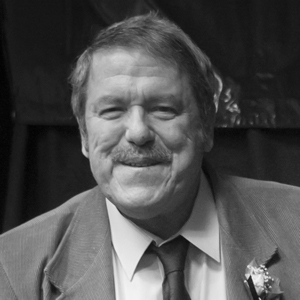
John R. Marks, Jr. was born and raised in Wisconsin. In 1966, the Marks family moved to Boise, Idaho where he attended and graduated from high school. Marks earned a bachelor's degree in mining engineering at the University of Idaho in 1973 and began his mining career as a junior engineer at Hecla Mining Company in the Silver Valley of north Idaho. He did surveying, mine planning and design at the Star Mine and ventilation engineering for the Star and Lucky Friday mines.
From 1975 to 1977, he continued his education at the University of Idaho as a graduate student and served as an instructor and tutor. Marks completed his thesis, “Computer-Aided Design of Large Underground Direct-Contact Heat Exchangers” in 1990 and earned a master's in mining engineering.
In 1977, Marks returned to Hecla Mining Company as a mining and ventilation engineer where he was responsible for all ventilation and refrigeration at the Star, Lucky Friday and Con Sil Mines. He Became a senior mine engineer in 1980 and was responsible for all mine engineering functions at the Lucky Friday Mine.
For the next 19 years, Marks worked for the Homestake Mining Company in Lead, S.D., as a ventilation engineer, then as the chief ventilation and health engineer. The former Homestake mine is 8,000 feet deep and contains 370 miles of tunnels. Between 1876 and 2003 the Homestake Mine produced 42 million ounces of gold worth about $3.5 billion. Marks was responsible for all ventilation and refrigeration at all levels of the mine. He designed and installed a 3,000 horsepower (hp) surface fan, a double 1,000 hp underground booster fan and a 2,300 ton refrigeration plant utilizing controlled recirculation. In 1996, he worked on assignments including shaft design, strategic planning, pumping, ore haulage, waste rock removal and refinery ventilation.
In 2001, Marks worked at Stillwater Mining Company in Nye, Mont., as a consulting engineer planning ventilation requirements and designing a $10 million system upgrade for the Stillwater platinum/palladium mine. A year later he joined the engineering transition team for the National Underground Science Laboratory facilitating the conversion of the Homestake Mine into a science laboratory. Plans are now under way to turn Homestake into the first national laboratory for underground science in the United States — and the largest and deepest facility of its kind in the world. Scientists hope to use the lab in the mine for an experiment to find out what role neutrinos played in the evolution of the universe. It is one of more than 40 scientific experiments scientists already have proposed for the new laboratory.
From 2002 to present, Marks has been a mine ventilation consultant. He is presently consulting for the South Dakota Science and Technology Authority on the conversion of the Homestake Mine into the National Deep Underground Science and Engineering Laboratory (DUSEL) and has consulted with, and/or continues to work with many other mines in South Africa, Bulgaria, three Canadian provinces, and U.S corporate offices for mines in Guatemala and Indonesia.
Marks served as an adjunct professor for the South Dakota School of Mines and Technology in Rapid City, S.D., teaching mine ventilation. He has taught seminars at most western mining schools in mine economics and mine ventilation, air conditioning, computer applications and diesel use. He has authored or co-authored over 25 papers in mining, including chapters in ASHRAE’s 2003 & 2007 Applications Handbooks, a mining textbook, and the new Society of Mining Engineer’s (SME-AIME) 2011 Mining Engineering Handbook. In 1992, he was Chairman of Society of Mining Engineer’s (SME) Underground Ventilation Committee. He holds several professional memberships including Tau Beta Pi, the National Engineering Honor Society. He received the Black Hills Safety Professional of the Year honor and in 2008, was awarded the prestigious SME’s Hartman Award for excellence in mine ventilation.
- B.S., Mining Engineering, 1973
- M.S., Mining Engineering, 1990
Zimri E. Mills
Deceased Jan. 1, 2016
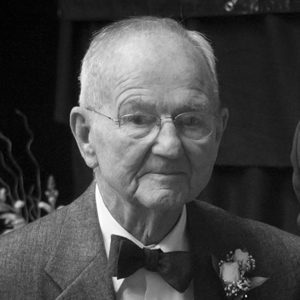
Zimri Mills was born in 1924 in Wilder, Idaho, and second in a family of seven children. His parents were part of the homestead movement of the early 1900's and became Idaho farmers. Mills lettered in football and basketball, was student body president and acted in school plays. He graduated in 1943 from Wilder High School.
Mills went directly into the U.S. Army and was assigned to anti-aircraft artillery basic training at Camp Callen, Calif., and then sent to the University of Oregon to become an officer in the U.S. Army Corps of Engineers. However, in early 1944 with the warning of an imminent invasion of Europe, he was re-assigned to an operating unit at Camp Cook, Calif., the 11th Armored Division of the Armored Infantry Battalion. In December 1944, he was sent to France where he joined in the fight of the Battle of the Bulge under General George Patton. Mills was wounded by shrapnel in his legs and discharged in July 1945.
Upon returning to the states, Mills farmed briefly with his father, but his injuries made farming difficult and he decided to get an education. He attended the University of Idaho and became a member of the engineering honor society, Sigma Tau, and within three years completed a BS in agricultural engineering.
In the summer of 1949, Mills worked as a trainee of the United States Department of Agriculture’s Soil Conservation Service (now called the Natural Resources Conservation Service) and began his professional career as a soil engineer in Caldwell, Idaho, providing technical assistance to farmers and other private landowners and managers. In 1951, he was transferred to Shoshone, Idaho, and worked in Lincoln, Gooding, Blaine, and Camas counties. Two years later, he was transferred to Portland, Oregon, to work as a hydrologist for the western region. Mills was transferred back to Idaho after the Oregon offices closed and worked in irrigation and drainage work, eventually also working in hydrologic engineering for Idaho and Nevada.
In 1959, Mills was transferred to Amherst, Massachusetts, where he worked for the State of Massachusetts as an engineer working on watershed protection for small watersheds. His primary activity included the planning, design and construction of flood control dams, mostly earth-filled dams.
In 1963, a U of I college friend started the Trus Joist Corporation in Boise, Idaho, and persuaded Mills to join the group as a Trus Joist engineer. Trus Joist at the time specialized in light wood structural elements, primarily for roof and floor systems. The innovative design of the system was not governed by standard wood engineering criteria, so special approvals were required from regulatory bodies to use this pioneering technology.
Mills was part of the Trus Joist engineering team that developed unique (their own) grading guidelines for the wood, design values and manufacturing standards. This required the testing, analysis and defense of new standards to the building code authorities. Mills, together with his colleagues, developed the specialized manufacturing standards for the Trus Joist technology, including having to create the literature for engineers and architects and installation instructions for builders.
Trus Joist systems were primarily installed on roof and/or floor systems on spans of 28 to 100 feet. They continually upgraded their designs which again required additional proof of testing and evaluation for regulatory bodies to approve.
Over a period of several years Trus Joist developed a complete product line and sold it throughout the United States, Canada and, eventually in Sweden, Germany and England. The largest roofing system that they developed and installed, which won the American Society of Civil Engineer’s Outstanding Structural Achievement Award in 1976, was the indoor stadium at U of I, the Kibbie Dome, in Moscow, Idaho. This structure had a 400 foot clear span, with a clearance above the playing field equivalent to a twelve story building and at that time was the largest indoor college facility in the nation. Many recognized this achievement as a masterpiece where talent, technology, vision and commitment were manifest in a unique creation and Trus Joist’s barrel arch stadium cover received worldwide recognition.
Mills was active in the American Society of Testing Materials where he helped to develop many standards of wood design and fire prevention. He was also active in the Society of Professional Engineers and served on the U of I Engineering Advisory Board.
In 1947, he married Fidelia Zabala and they had a daughter and son. Fidelia passed away in 1955 and Mills a year later married Maizie McClaran Anno, whose husband, a mining engineer, had been killed in a mining accident. Maizie has a son. They started life together with three children, Bryan, Delynn and Robert, who all subsequently graduated from Borah High School in Boise. Delynn attended U of I, and Bryan and Robert attended Boise State University. They are all married now and Mills and Maizie have six grandchildren and two great-grandchildren.
As a family, they enjoy skiing, fishing, hunting and golf. They reside in Boise enjoy playing bridge. They have traveled worldwide to most continents, visiting many of the continent’s diverse countries.
- B.S., Agricultural Engineering, 1950
Albert F. Myers
Deceased Mar. 20, 2016

Albert Myers earned a bachelors (’69) and a master’s (’71) degree in mechanical engineering at the University of Idaho and was a Sloan Fellow at the Alfred P. Sloan School at the Massachusetts Institute of Technology where he earned a master’s degree in industrial management in 1992.
Myers served in the U.S. Army and was stationed at NASA’s Dryden Flight Research Center (DFRC) located in Edwards, Calif., where he held a number of positions including chief of the flight control engineering branch. DFRC is NASA’s primary center for atmospheric flight research and operations, the primary alternate landing site for the space shuttle and the orbital support station for the International Space Station.
Myers joined Northrop Grumman in 1981 as manager of flight controls engineering for the B-2 program where he later held other leadership positions including chief project engineer, deputy program manager and vice president of test operations.
In 2006, Myers became an elected member of the National Academy of Engineering which is an honor among the highest professional distinctions accorded an engineer. The Academy recognized Myers for his contributions to the flight control systems for NASA research aircraft and for his leadership in the development of the B-2 stealth aircraft flight control system. “This honor recognizes Myers’ superb technical abilities, his hard work and his many innovations,” said Ronald Sugar, then chairman, CEO and president of Northrop Grumman. “In keeping with his engineering excellence, he also played an important role in making Northrup Grumman the leading company it is today.
This same year he retired as corporate vice president of strategy and technology and chief technology officer for Northrop Grumman Corporation. As vice president he oversaw the ongoing development of the company’s strategic framework responsible for facilitating company-wide initiatives in technology and program development. He also served on the company’s corporate policy council. Previously, he was vice president and treasurer for Northrup Grumman, responsible for the treasury, mergers and acquisitions, risk management, real estate, pension and savings investments and trust management.
During his tenure at Northrop Grumman, the company completed in excess of $25 billion in strategic acquisitions and divestitures. The company, a global defense company headquartered in Los Angeles, Calif., had 125,000 employees and operated in all 50 states and 25 countries and served U.S. and international military, government and commercial customers.
Myers served from 1989 through 1998 on the NASA Aeronautics Advisory Board. He received the NASA Exceptional Service Medal and the 1981 Dryden Director's Award. He was elected to the University of Idaho Alumni Hall of Fame in 1997 and was the 2009 recipient of the IEEE Simon Ramo Medal which cited his role in the development of the digital flight control system for the B-2 stealth bomber.
- B.S., Mechanical Engineering, 1969
- M.S., Mechanical Engineering, 1971
Ronald C. Olson
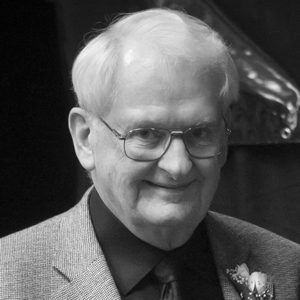
Ronald Olson was born in Sioux Falls, S.D., and raised in Everett, Wash. In 1958, he earned a bachelor's in electrical engineering from the University of Idaho. Olson attended the Defense Systems Management College located at Fort Belvoir, Va., chartered to provide executive-level international program management courses to defense contractors’ workforce across the globe. He also earned a certificate from the Senior Executive Sloan School of Management at the Massachusetts Institute of Technology.
Olson began his career at the Boeing Company working as a program engineer on the BOMARC and HIBEX (High G Booster Experiment) missile programs. He subsequently held several positions on the Short Range Attack Missile (SRAM) program which included guidance and control design, missile design, carrier aircraft equipment design and senior engineering management.
Olson became the division’s chief engineer following a number of assignments in the business development arena. In 1985, Olson became a program manager and for many years provided leadership to the Small Intercontinental Ballistic Missile (ICBM) Mobile Basing program, the P-3 Update IV Anti-submarine Warfare program, and the FD-15 Air Launched Anti-satellite (ASAT) program.
Olson then became the Missile Systems program manager, Boeing Defense & Space Group, Missiles & Space Division, where he led the development and manufacture of strategic and tactical missile systems. Under Olson’s purview were such strategic programs as the Minuteman missile, the Air-Launched Cruise Missile (ALCM) and its variants, Boeing’s highly successful AVENGER air defense system, the U.S. Army’s Airborne Surveillance Test Bed, and developmental efforts like the Enhanced Fiber Optic Guided Missile (EFOG-M) weapon system.
In 1998, Olson became president of Sea Launch Co., LDC, a Boeing-led multi-national corporation, which was developing a sea-based commercial satellite launching service. In this role Olson oversaw the activities of the Sea Launch Co. partners in a unique commercial launching service that was contracted to place satellites in orbit in the summer of 1998. The international industrial partners, comprising three major aerospace companies and Europe’s largest ship builder, were Boeing (U.S.), Kvaerner a.s. (Norway), RSC Energia (Russia) and NPO-Yuzhnoye (Ukraine). The Sea Launch partners established a U.S. home port for their unique new operation, which launched satellites from a sea-based pad operating in international waters in the Pacific. Boeing had overall responsibility for development of the Sea Launch system and operation of its business.
The College of Engineering is thankful to Ron Olson who is currently the chairman of the $2 million John C. Wahl Think Tank Campaign to raise funds for the student services project. Olson has a distinguished history of volunteer leadership at the college. He was instrumental in the 1990’s Engineering Physics Building campaign, served many years on the College of Engineering Advisory Board and as many times as an EXPO judge. Olson received the Alumni Hall of Fame Award as well as the Outstanding Alumni Award from U of I.
Ron and Barbara Olson, his wife, currently reside in Seattle. They have a daughter Jodi, son Bradley and daughter-in-law Tracey DiRameo, and two grandsons Collin and Duncan.
- B.S., Electrical Engineering, 1958
Bess L. Vance
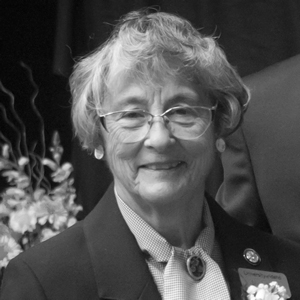
Bess L. Vance earned a bachelor's degree in chemical engineering in 1955, the first woman to do so at the University of Idaho. On December 8, 1954, a junior at the time, Vance was the second woman in the nation to become a member of Sigma Tau, the national engineering honorary.
Vance’ father, James M. Vance, also studied engineering at the university in the 1920's. She belongs to a long-time Vance family tradition of three-generations of U of I chemical engineers including her uncle Bob Vance (’30), cousin San Vance (’40) and brother John (Jack) Vance who graduated in chemical engineering in 1964 and several cousins (Bob and Jim Vance) and then Bob Vance’s sons. Vance remembers Dwight Hoffman, chair of the department of chemical engineering, as her most influential professor.
After college, Vance went to work in the research department of the Anaconda Mining Company at their milling and smelting operations located in Anaconda, Mont., and later at the relocated research facility in Tucson, Ariz. While in Tucson, she joined a new data processing group as a systems analyst. Vance spent two years with this group developing an economic evaluation program which led to construction of a new copper/zinc mine and milling operation near Tooele, Utah. Returning to metallurgical extraction, she worked on processes for recovery of a variety of metals ranging from aluminum and beryllium to uranium and zinc. Subsequently, Vance moved to Darwin, Calif., a mining town on the western outskirts of Death Valley, and became the plant metallurgist at the Anaconda’s Darwin Silver Mine and Mill.
The Davy McKee Corporation, a multinational engineering corporation known for its chemical engineering operations now located in Houston, Texas, then hired Vance. She worked on a variety of projects, including the training of staff and the start-up of a grass roots gold mine in Nevada. She also oversaw plant expansions at several soda ash recovery facilities in Wyoming.
Vance is currently enjoying retirement in El Sobrante, Calif., near San Francisco. She has taken up whaleboat rowing and single scull rowing for exercise. She does volunteer work for the Friends of the El Sobrante Library, the Oakland Museum of California and the San Leandro Monarch Butterfly Program.
The College of Engineering is honored to acknowledge the first inaugural gift to the college's Chemical Engineering Endowed Chair Campaign given by Bess Vance. Vance says, "My education at Idaho made a major difference in my life and I feel good about giving to a public university. I'm pleased that I can contribute money that will go to set up an endowment for the college to use for a worthy cause forever."
Vance enjoys regular visits with Jack, her brother, as he travels through the Bay Area on his many return flights from China to his home in North Palm Springs, Fla.
- B.S., Chemical Engineering, 1955






